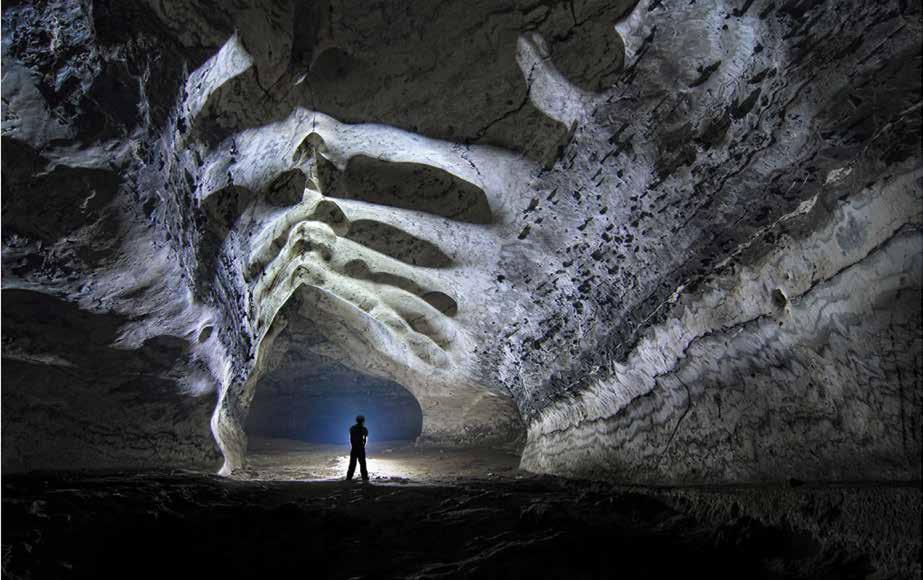



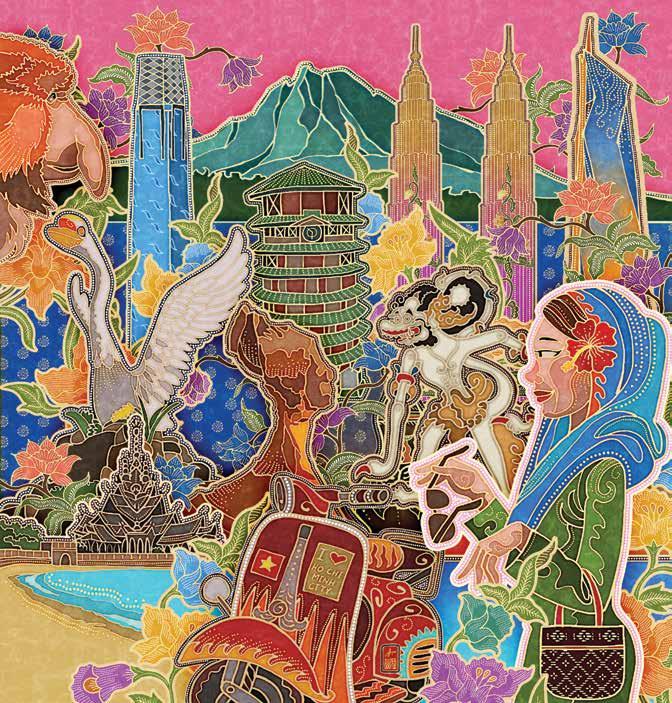






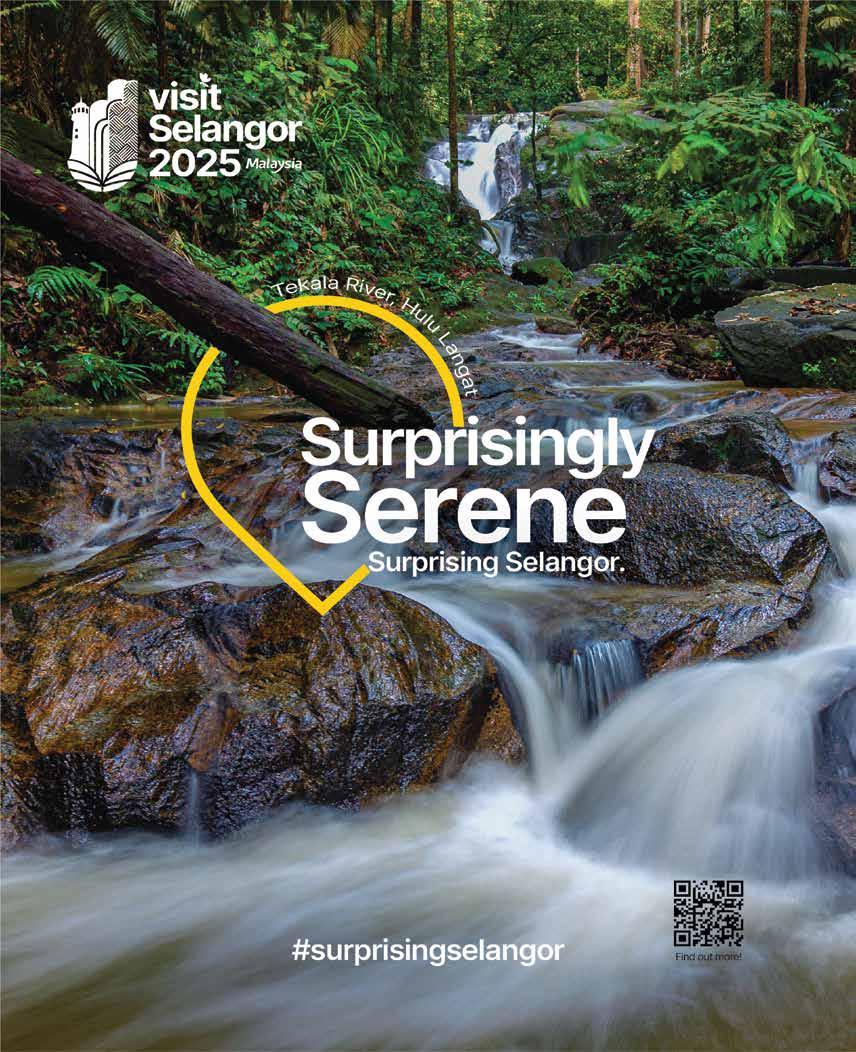



















Experience hassle-f ree travel with the digital innovations of MYAirports app, Self-Service Check-In, and Self-Service Bagdrop. Ease your journey f rom home to KLIA's boarding gate through Biometric Facial Recognition technology. Say goodbye to queues and hello to a quick and effortless trip!


You can check-in with either the MYAirports app or at the Self-Sevice Check-In kiosk in the terminal
*Please provide your passport/identification card (IC) and e-ticket/ booking reference number for check-in purposes
*Terms & Conditions apply
you are all set for a joyful journey!





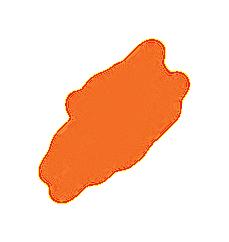

Passengers with hidden disabilities can enjoy the Butterfly Effect initiative at our airports for an inclusive travel experience. Our tailored support and special facilities ensure a seamless and stress-free journey, providing the care and attention you need.
Visit http://www.malaysiaairports.com.my for more information.
Visit http://www.malaysiaairports.com.my for more information.



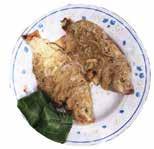





PUBLISHERS Media MNC Nusantara | Sirron Galeria Sdn Bhd | IGS Citra Muliamas Sdn Bhd | Kumpulan Media Chandi | KTS Sdn Bhd | Purple Cube Sdn Bhd
PATRON Yang Mulia Tengku Shamsulbhari AlHaj Ibni Yang Amat Mulia Tengku Azman Shah AlHaj S.MK, J.P
ADVISORS Dato’ Sri Azmi Ismail | Dato’ Yusoff Awang | Dato’ Kerk Chan | Awaludin Jahid P.J.K
CHIEF EXECUTIVE OFFICER Nuar @ Mohd Nor Mohd Diah
EXECUTIVE DIRECTOR Juhan Kamaruddin @ Jeremy Khalil
MANAGING DIRECTOR SGSB Irnee Norris Ishak
GENERAL MANAGER KTSB Dato’ Kerk Chan
FINANCE & ACCOUNTING Furqaan Hod
PRODUCTION An An Sung
OPERATIONS & PRINTING Anthony Lee
GOVERNMENT RELATIONS Suhaila Ahmad | Dato’ Suzana TDS Shahabuddin | Ameerah Abdullah | Datin Sri Sharifah Salmah
EVENTS & SPECIAL PROJECTS Mohamad Nabil Fikry Zainudin | Aliff Ashraf Mohd Laisani
RELATIONS, BUSINESS DEVELOPMENT & DIGITAL MARKETING Ahmad Nur Iman
EDITOR-IN-CHIEF Juhan Kamaruddin @ Jeremy Khalil
CREATIVE EDITOR Irina Norris Ishak
CONTRIBUTING EDITOR Irnee Norris Ishak
DIGITAL EDITOR Ed Junaidi Abu Bakar
DEPUTY EDITOR Shahida Sakeri
CONTENT CREATOR Hady Armeen
DIGITAL CONTENT CREATOR Farah Izureen
SENIOR DESIGNER Intan Ishak
CONTRIBUTORS Tourism Malaysia & MOTAC
PHOTOGRAPHERS Photography Unit, Gaya Travel Magazine
Corporate Communications Unit, Ministry of Tourism, Arts and Culture Malaysia
PARTNERS & SUPPORTERS




















MEDIA REPRESENTATIVES London | Paris | Singapore | Jakarta | Bandung | Medan | Brunei | Sydney | Ha Noi
PRINTING Biz Prints Sdn Bhd
Copyright @ 2025 Gaya Peninsular Global Ventures| Chandi Media Group | Sirron Galeria Sdn Bhd | Chandi Enterprise All rights reserved.
Reproduction in whole or in part without permission from the publisher and editor is strictly prohibited. All information is accurate at time of press but subject to change. The publisher and its employees cannot be held liable for any error, inaccuracy and/or admissions whatsoever caused. Liability would not be accepted for any action taken based on the views expressed or information provided in this publication.
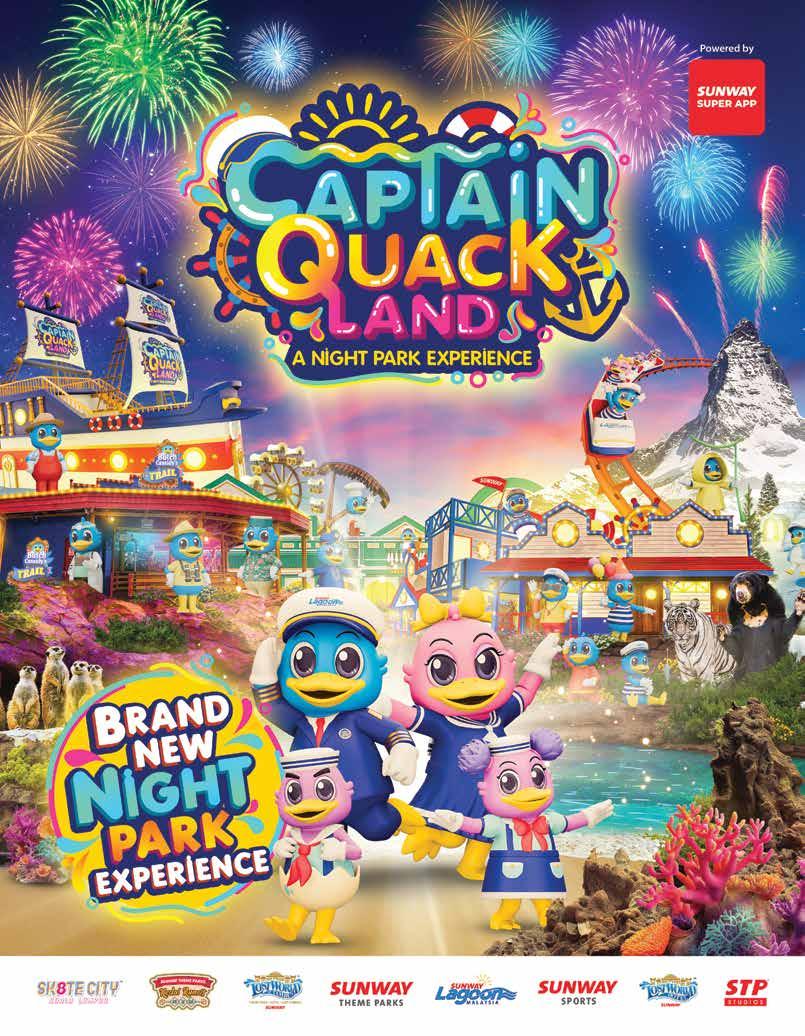

ISSUE 19.2
WE ARE NOW AVAILABLE ONLINE





www.issuu.com/gayatravel
https://shopee.com.my/gayatravel
Departments
010. Editorial Jottings
Gaya Itinerary
016. 48 Hours in Sibu: How to Enjoy the Town to the Fullest
Gaya Special Feature
030. Delve Into the Historical Kampung Laut Heritage Site
050. Ecotourism Marvels in Malaysia Worth Experiencing
068 Mesmerising Putrajaya!
GAYA Travel ler
022. The Ever Scrumptious Laksa Johor
Destinations
032. Amazing Pattaya: Beach, Ice, Wooden Castle and Dinosaurs!
042. Top Places to Visit in Taiwan for Wholesome Experiences
052. Seven-Day Vietnam Itinerary: Ho Chi Minh City and Quy Nhon
060. Kota Yogyakarta: The Heart of Culture, Flavors, and
Cover Illustration By
Arif Rafhan Othman

Rhythms
076. Top Places to Visit in Perak: Kuala Kangsar, Teluk Intan, Slim River, and Tanjong Malim
082. Celebrating Evolution and Unity at Rainforest World Music Festival 2024
084. Sarawak, The First Chapter of My Life’s Heartfelt Adventures
090. Embraced by The Magic of Sarawak
098. Learning about the Enterprising Co-operatives in Perlis during Eksplorasi Koperasi Perlis 2024
105. A Day to Explore Seremban: Culinary Delights and Cultural Wonders
Hotels & Resorts
111. Tioman’s Latest Jewel in the Crown: The Boathouse Pulau Tioman
116. Top 3 Unique Staycation Ideas in Mersing, Johor
118. Multi-Faceted Courtyard by Marriott Setia Alam
127. Discovering Paradise: My Stay at The Ocean Resort by Fusion, Quy Nhon




Editorial Jottings

For all you know, it is the new year already, and what a whirlwind of schedules, movements, and deadlines it has been for the Gaya Travel team during the last months of 2024 that we nearly forgot about 2025!
As we catch our breaths, calm our minds, and ruminate about what is in store in 2025, we forecast that the year might just be an exciting one, especially when it comes to intra-ASEAN travel.
The Association of Southeast Asian Nations (ASEAN), which groups Malaysia, Singapore, Indonesia, Thailand, Philippines, Brunei, Vietnam, Cambodia, Laos, and Myanmar, is brimming with promise when it comes to intra-regional travel and tourism.
ASEAN travellers seem to signal higher propensity to travel within the region since they can take shorter but more frequent breaks to exotic foreign places that offer better value due to more favourable exchange rates.
As Malaysia steps up to the role as the Chairman of ASEAN in 2025, it is one of Gaya Travel’s dreams to see that ASEAN is able to integrate economically and socially much closer than before, despite the existing barriers and challenges like border disputes, wealth inequality, human trafficking, smuggling, and climate change.
As can be roughly drawn from the various articles and statistics online, we can see that Singaporeans and Bruneians continue to come to Malaysia in droves, as record numbers of Malaysians flock to Thailand. Thais and the Filipinos show enormous interest towards visiting Singapore; at the same time, Thailand remains as one of the major source markets for Laos, and the Filipinos desire to visit Thailand. On the same note, Laotians are exploring Thailand, Cambodia, Vietnam, and Singapore.
Malaysians and Singaporeans continue to descend on popular tourism destinations in Indonesia and Vietnam, while travellers from the latter two countries head to Malaysia and Singapore. The Philippines receives quite a number of Singaporeans and Malaysians too. Vietnamese travellers are significantly present not just in Cambodia alongside Thais and Malaysians but also Thailand,Singapore, and Malaysia. Cambodians fly off to Thailand, Vietnam, Malaysia, and Singapore. Even travellers from Myanmar go to Thailand and Singapore; conversely, more Thais visit Myanmar due to matchless proximity.
As a testament to the increasing intraASEAN mobility, when it comes to Malaysia, new direct flight routes from selected Malaysian airports other than Kuala Lumpur International Airport (KUL) and Penang International Airport (PEN) have taken off ground, for instance, Subang (SZB) to Singapore, Phuket, Banda Aceh,and Jakarta; Johor Bahru (JHB) to Bangkok; and Kota Kinabalu (BKI) to Ho Chi Minh City. These sectors offer wider accessibility and opportunities so that travellers can explore ASEAN not just from KUL and PEN anymore.
To further ease travel, Thailand did propose a “6 Countries, 1 Destination” visa policy, allowing eligible holders of such a visa to enter not just Thailand but also Malaysia, Laos, Cambodia, Vietnam, and Brunei at one go, which Malaysia favours. However, it is unclear when the visa is expected to take effect considering all of the countries in question need to firstly standardise their immigration policies and facilities for the visa to work.
Since Malaysia is hosting the annual ASEAN Tourism Forum (ATF) in Johor Bahru in January 2025, anticipation is high for ASEAN to succeed in making the region a more unified and inclusive tourism destination that guarantees seamless travel. Let’s hope the ATF could provide us answers regarding the progress of Thailand’s proposal, or maybe put forth something even better.
On another note, travellers should be interested to know that 2025 is designated as the Visit Selangor Year and Visit Kedah Year, therefore be sure to keep your eyes peeled for both states’ travel and tourism offerings through the respective states’ tourism websites https://selangor.travel/ and https://kedahtourism. gov.my/. Gaya Travel foresees that tourist arrivals to both Malaysian states are bound to
increase in 2025.
Why? Again, it all boils down to connectivity: Kuala Lumpur International Airport (KLIA) - the gateway to Malaysia - is already located in the district of Sepang, Selangor, besides the historic Sultan Abdul Aziz Shah Airport (SZB) in Subang, also in Selangor. Both airports are registering positive passenger traffic growth in 2024 and expected to continue through 2025. As such, Selangor could easily lure travellers who arrive at both airports before they go beyond. Meanwhile, Batik Air now flies directly to Alor Setar, the capital of Kedah, from KLIA beginning 12 December 2024, boosting connectivity between both states, on top of offering travellers more transportation options when exploring Malaysia.
So, with newer flight routes coming online and the burgeoning appetite for travellers to explore ASEAN and even Asia, please flip through the pages within this issue for ideas on where to travel in 2025 and onwards.
Have a great 2025 everyone, and safe travels!
JUHAN KAMARUDDIN@JEREMY KHALIL
Email your comments to jeremy@gayatravel.com.my

OFFICIAL WEBSITE
www.gayatravel.com.my
SUBSCRIPTION, EDITORIAL AND ADVERTISING ENQUIRIES
advertising@gayatravel.com.my +6 03 7972 0952
EDITORIAL ENQUIRIES
editor@gayatravel.com.my
EDITORIAL OFFICE
No.27, Persiaran Bukit Tunku, Bukit Tunku, 50480 Kuala Lumpur, Malaysia | +6 03 7972 0952







grandseminyak.com






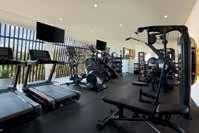
Experience unmatched luxury and culture at Grand Seminyak - LIFESTYLE BOUTIQUE BALI RESORT
Tucked away amidst verdant tropical gardens with expansive views of the Indian Ocean, Grand Seminyak embodies the essence of the boutique resort experience. Unwind in artfully crafted suites, indulge in contemporary dining experiences, rejuvenate by the shoreline infinity pool, work out in our state-of-the-art gym, relax in our luxurious spa, and bask on your private balcony, capturing the mesmerizing horizon. of contemporary luxury with Balinese-inspired touches in each suite.

& Images by
SHAHIDA SAKERI
“What can you do in Sibu, anyway?”

Sibu might not be much in the limelight as its more famous siblings, Kuching and Miri, but if you were to assume that Sibu is just another sleepy backwater, well, you couldn’t be more mistaken, my friends. This charming town, perched along the banks of the mighty Rajang River, boasts a delightful mix of cultures, fascinating history, and mouth-watering local cuisine.
“My mum always asks me to bring back one of those woven bags whenever I’m in town,” shared my travel companion, a true-blue Sarawakian, as we meandered through the bustling stalls of Sibu Central Market. “They’re cheaper here than in Kuching, and the designs are just gorgeous!” She also mentioned that locals swear by the dabai (Sarawak’s olive-like fruit), claiming it’s far superior in Sibu compared to anywhere else. Reflecting on these conversations, I couldn’t help but wonder how such a small town manages to leave such a lasting impression on so many.
And then it hit me: it must be the atmosphere! You see, Sibu isn’t trying to be the most cutting-edge or thrilling destination. Its charm lies in its simplicity, in the way it encourages you to slow down and savour life’s little pleasures, much like the good old days when life wasn’t rushing past at breakneck speed.
So, for those ready to experience its heart and soul, here’s how to spend 48 hours exploring Sibu like a local (with a bit of flair, of course).




08:30 AM
» Local Snack Stop at Pulut Panggang Sibo Kak Yam Noor
First stop, breakfast! But not just any breakfast: say hello to pulut panggang (grilled glutinous rice rolls) at Kak Yam Noor’s. Unlike the coconut and shrimp-filled version found elsewhere, Sibu’s pulut panggang is often enjoyed plain and dipped into curry. What sets this humble snack from this stall apart is that it is still grilled over charcoal, giving it a subtle, smoky taste that’s hard to beat. This fourth-generation family business is the real deal, churning out around 1,000 pieces a day, at a mere MYR1.20 each (MYR1.50 if you prefer the spicy version). But remember not to dawdle; they’re open from 7:30 a.m. until they sell out, which happens fast!
09:15 AM
» Spiritual Serenity at Masjid Al Qadim
Now that you’ve refuelled, it’s time for a little historical journey to one of Sarawak’s oldest mosques, Masjid Al Qadim. This 19th-century beauty has stood the test of time, thanks to its ingenious use of Borneo’s finest ironwood, kayu belian. It’s a mesmerising slice of Malay-Nusantara architecture, reminiscent of Indonesia’s oldest mosque, Masjid Agung Demak. Don’t miss out on the intricate wooden beams, windows, and roof structure that have held up since the day they were built, which are truly a feast for the eyes.
10:30 AM
» A Glimpse into Sibu’s Chinese Roots at the World Fuzhou
Heritage Gallery
Next stop is the World Fuzhou Heritage Gallery, where you can learn about the lives of Sibu’s Foochow pioneers. With more than 650 artefacts on display, many over a century old, this gallery is like walking into a time machine. Having that said, I feel this museum will still spark a warm nostalgic emotion even if you were not from a Foochow clan. Expect childhood gadgets like disc players or old phones that were used to be popular back then; who knew looking at old Blackberry phones could trigger nostalgia?
12:00 PM
» Lunch at Habibi Claypot
Hungry yet? Head to Habibi Claypot for a hearty lunch. Known for its generous portions and affordable prices, the place oozes warmth, both in terms of its food and ambience. Peek into the open kitchen as the chefs work their magic. However, the real star of the show is the lamb soup, which is aromatic, tender, and basically a hug in a bowl.
13:45 PM
» Visit the Lau King Howe Hospital Museum
If you’ve met a local aged 30 or older, there’s a high chance they were born at the legendary Lau King Howe Hospital. Founded by the generous Mr. Lau King Howe in the 1930s, this hospital holds a special place in Sibu’s history. While it has since moved to a larger facility, the original site is preserved as a museum. From antique medical equipment to an eye-catching display of nurses’ uniforms through the decades, this museum is a hidden gem for anyone intrigued by healthcare history, and it’s surprisingly fun, too!
15:00 PM
» Cultural Immersion at Sibu Heritage Centre
This next stop is perfect for the culture vultures. The Sibu Heritage Centre was once the administrative hub of the Sibu Municipal Council, now a vibrant museum brimming with artefacts that tell the story of the local ethnic tribes. It is fascinating how much one can learn here. The real showstopper? The skulls! Yes, these are actual skulls representing Iban heritage, known for this ethnic group’s past headhunting practices. You’ll also encounter the mysterious Belum, the Melanau healing figure that serves as the bridge between the physical and spiritual realms in traditional rituals. Oh, don’t forget your camera! The building itself is an architectural beauty, making it a hotspot for photography enthusiasts.
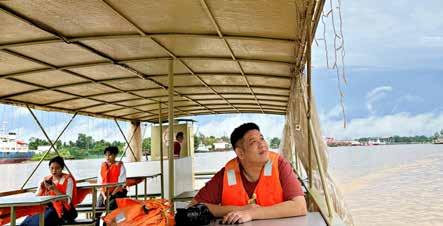



17:15 PM
» Slow down on a River Cruise along the Rajang
No trip to Sibu is complete without a cruise along the mighty Rajang River. It’s Malaysia’s longest river, after all! As you glide along the river, you’ll get a front-row seat to the laidback lifestyle of riverine villages, perched on stilts above the water. The cruise is a steal at MYR15 per person, lasting a relaxing hour. There’s no better way to soak up Sibu’s serene side.
18:30 PM
» Street Food at Sibu Night Market
Arriving as the sun sets is a good idea, as the colours of the sky become beautiful backdrop for the nearby Tua Pek Kong Temple’s pagoda. Trust me, the sky in Sibu is incredibly gorgeous during this time of the day. The market, which sets up at around 5:00 p.m., is a food lover’s dream come true. You’ll find everything from skewers to sweets, all at wallet-friendly prices.
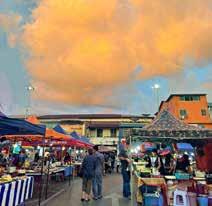
DAY 2:
09:00 AM
» Mee Sua-Making Workshop
Begin your second day with a hands-on experience at a mee sua workshop. Mee sua, a traditional wheat vermicelli dish, is a symbol of longevity in Foochow culture, and in Sibu, it’s typically served in a red wine soup with ginger and sesame oil.
Learn the centuries-old craft from Mr. Ting and Ms. Tang, who’ve been making these noodles by hand for over 35 years. It’s a labour of love that involves stretching the dough into thin strips and drying them under the sun, a fun yet fiddly process. Plus, you’ll appreciate that bowl of noodles so much more when you know the work that goes into it.
And here’s a tip for noodle lovers: mee sua makes a cracking noodle alternative to the Korean Jajangmyeon. The texture is quite similar, springy with just the right amount of chew.
Contact: Ms. Tang (+6011-5635 6631)
11:00 AM
» Shop at Sibu Central Market
Need souvenirs? Sibu Central Market, the largest indoor market in Malaysia, has you covered. From dabai to Sarawak butter made from the exotic Shorea macrophylla tree, there’s plenty to tempt you. You’ll also find layer cakes, ikan terubuk masin (salted fish), and woven bags aplenty. And if you were feeling brave, have a go at trying a sago worm or two – it’s an experience, to say the least. The market opens from 6:00 a.m. to 6:00 p.m. every day.
13:00 PM
» Lunch at Cabe Ijo
It’s time to refuel at Cabe Ijo, where you’ll find everything from Sarawakian favourites like midin (a fern dish) and umai (a raw fish salad) to the simple but utterly addictive cangkuk manis (local leaves), stir-fried with eggs. Grab a table inside or outside, and let the feast begin.
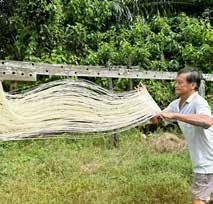
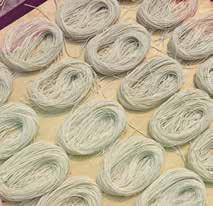

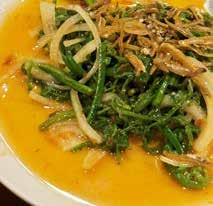
16:30 PM
» Longhouse Living at Bawang Assan Cap off your visit with a trip to the Bawang Assan Longhouse, an Iban settlement dating back more than 130 years. You’ll be greeted in true Iban style: a ceremonial tuak (fermented rice wine) toast and an energetic Ngajat Ngalu Temuai, the traditional Iban welcoming dance. It’s impossible not to be swept up by the festive spirit as the rhythmic movements unfold before your eyes. Don’t be shy to join in as well because it’s all part of the fun!
The longhouses range from traditional wooden structures to more modern versions, providing a fascinating insight into how the Iban people have blended their rich heritage with the conveniences of contemporary life. Remember to try your hand at traditional Iban games too like the blowpipe, or feast on local delicacies.
What makes this experience particularly special, for me at least, is its authenticity. There’s no commercial veneer, no over-the-top tourist traps; just genuine warmth, tradition, and a community that’s proud to share its heritage with visitors.
Contact: Lydia (+6013-880 8091)

And there you have it; two days in Sibu filled with rich heritage, mouthwatering food, and cultural experiences you won’t soon forget. If you haven’t already packed your bags, well then, what are you waiting for?
Gaya Travel Magazine extends our heartfelt gratitude to Sarawak Tourism Board for making the writer’s trip to this beautiful town possible. Visit sarawaktourism.com/city/sibu for more information about Sibu.

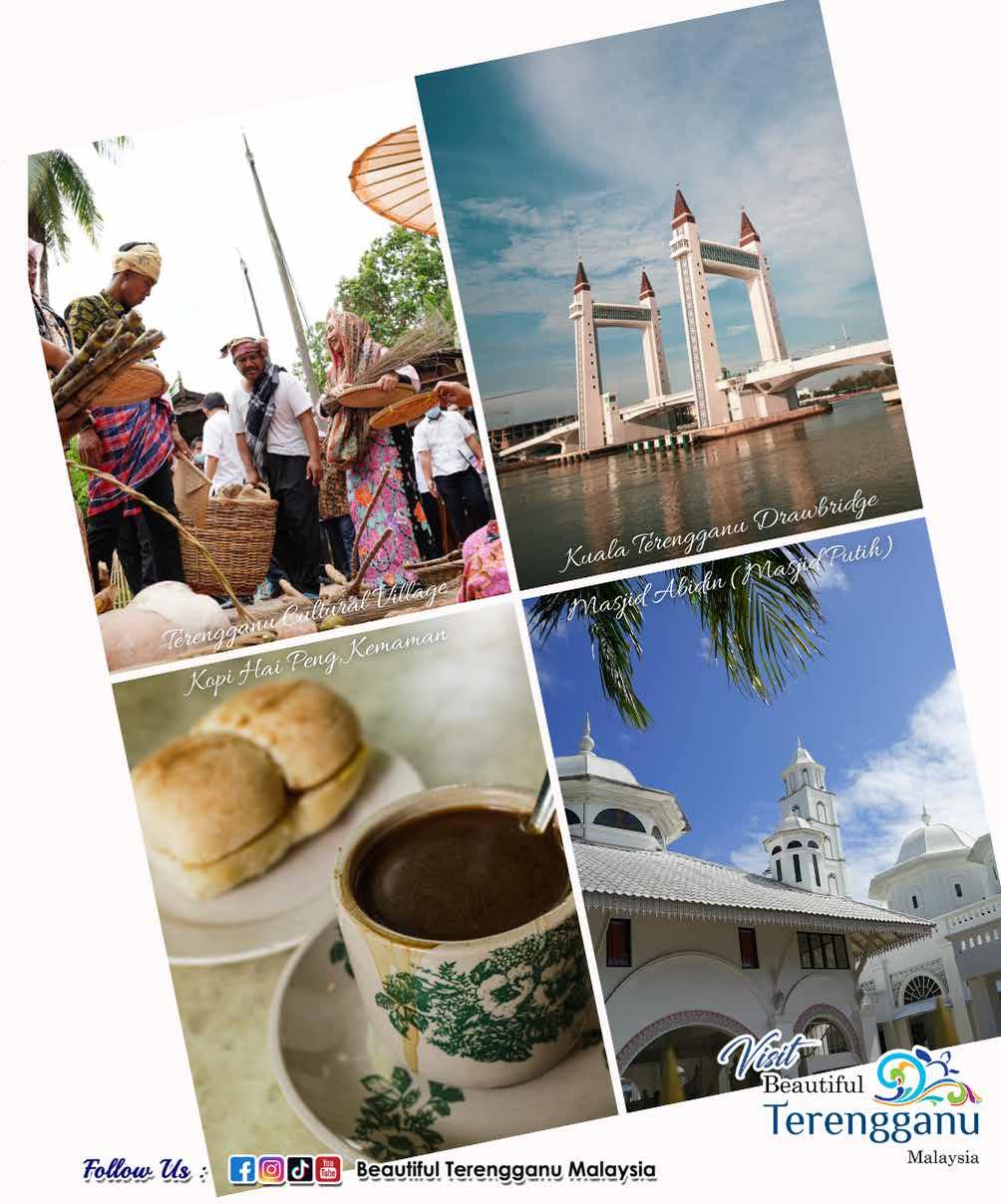
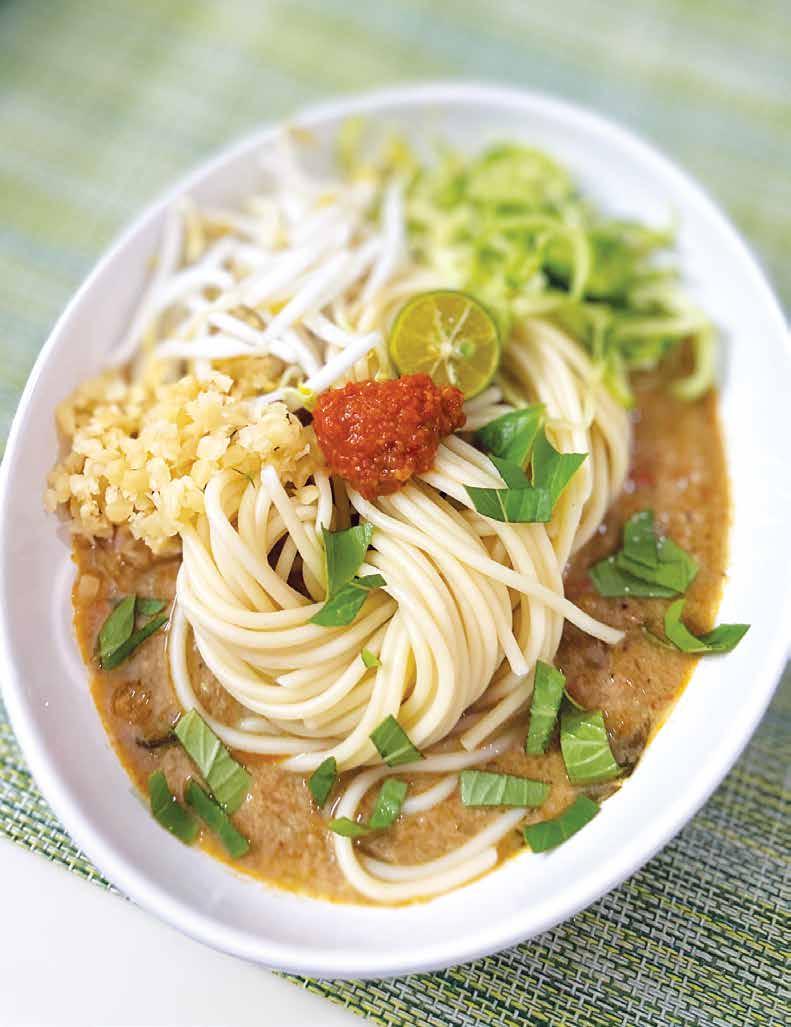
GAYA Traveller’s
Laksa Issue: Waking up to Langkawi

Have you ever wondered how a dish was created and became so popular that it sustained for decades and even centuries? In this issue, GAYA Traveller team decides to look into Laksa Johor, a dish that is said to be created during the reign of Sultan Abu Bakar ibni Temenggong Daeng Ibrahim, in the late 1800s. It was said that the well-travelled ruler ordered the palace kitchen to come up with a laksa that would make a good representation of Johor.
Laksa is typically a noodle-based dish, served drenched with soup-like fish-based gravy that is either cooked with or without coconut milk. The exact origin of laksa is unclear, but it is believed that laksa was introduced in the Malay Peninsula by the Chinese Peranakans (native-born individuals of mixed local and foreign ancestry) who assimilated into local society and adopt local customs during the booming spice trade era. Each laksa dish from different parts of the Malay Archipelago vary according to the availability of ingredients and flavour preferences of those who residing in the area where it originated. Truth be told, laksa is a beautiful testament that was the result of trade and migration, including intermingling of different cultures!
First things first—let’s head to the local market and prepare a delicious Laksa Johor!
We got hold of our grandmother’s recipe from our cousin who used to frequently assist our late grandmother in the kitchen. We took the pleasure of testing the recipe first before sharing it with you to ensure we got it right. We even went to the local wet market to get the ingredients, since fresh ikan parang (wolf -herring fish) is not readily available at the common supermarkets! This recipe yields a big pot that could easily feed at least 15 people. Though it might seem tedious, it is well worth the effort, so do give it a try! Laksa Johor gravy gets tastier by the day, so having leftover gravy is a bonus.
• DRY ROAST ON A PAN UNTIL FRAGRANT AND GRIND
3 red onions; peeled and chopped
2 cloves garlic; peeled and chopped
8 cm ginger; sliced
8 cm galangal; sliced
3 stalks lemongrass; sliced
4 candlenuts; smashed
2 tablespoon fennel seeds
2 tablespoon coriander seeds
• MIX WITH WATER TO FORM A THIN PASTE
5 tablespoon fish curry powder
• BLEND
1kg wolf-herring fish (ikan parang), boiled and deboned
5 fresh prawns, boiled and peeled
1 tablespoon dried shrimp, soaked in water
1 slice dried threadfin fish (ikan kurau), soaked in water
• OTHER INGREDIENTS
200 ml thick coconut milk
2 dried tamarind slice
3 tablespoon toasted coconut paste (kerisik)
1 teaspoon white pepper
Salt to taste
Sugar to taste
Water / fish stock
• TOPPINGS / ACCOMPANIMENTS
» Spaghetti; boiled, drained and shaped into a knot (chap)
» Cucumber; skin peeled, and cut into roll sheets and sliced
» Beansprouts; tailed
» Red onions; peeled, quartered, and finely sliced across
» Thai basil leaves (daun selasih); finely chopped
» Vietnamese mint leaves (daun kesum); finely chopped
» Pickled radish (chai poh)
» Calamansi limes; halved and deseeded
» Sambal Belacan
• METHOD
» Saute fish curry paste in hot oil until fragrant.
» Add in the rest of the ingredients (except the toppings / accompaniments) in a big pot until boiling. Season with salt and sugar. Cook on low heat until it reaches your desired thickness. Stir constantly.
» Prepare Sambal Belacan by pounding a handful of fresh red chillies with a small cube of toasted shrimp paste until fine. Finish off with some calamansi lime juice. Mix well.
» Serve.
TIPS:
» The rich gravy tastes even better when enjoyed the next day.
» Best enjoyed using your hands for an authentic experience.
FISH CURRY POWDER
Serbuk Kari Ikan
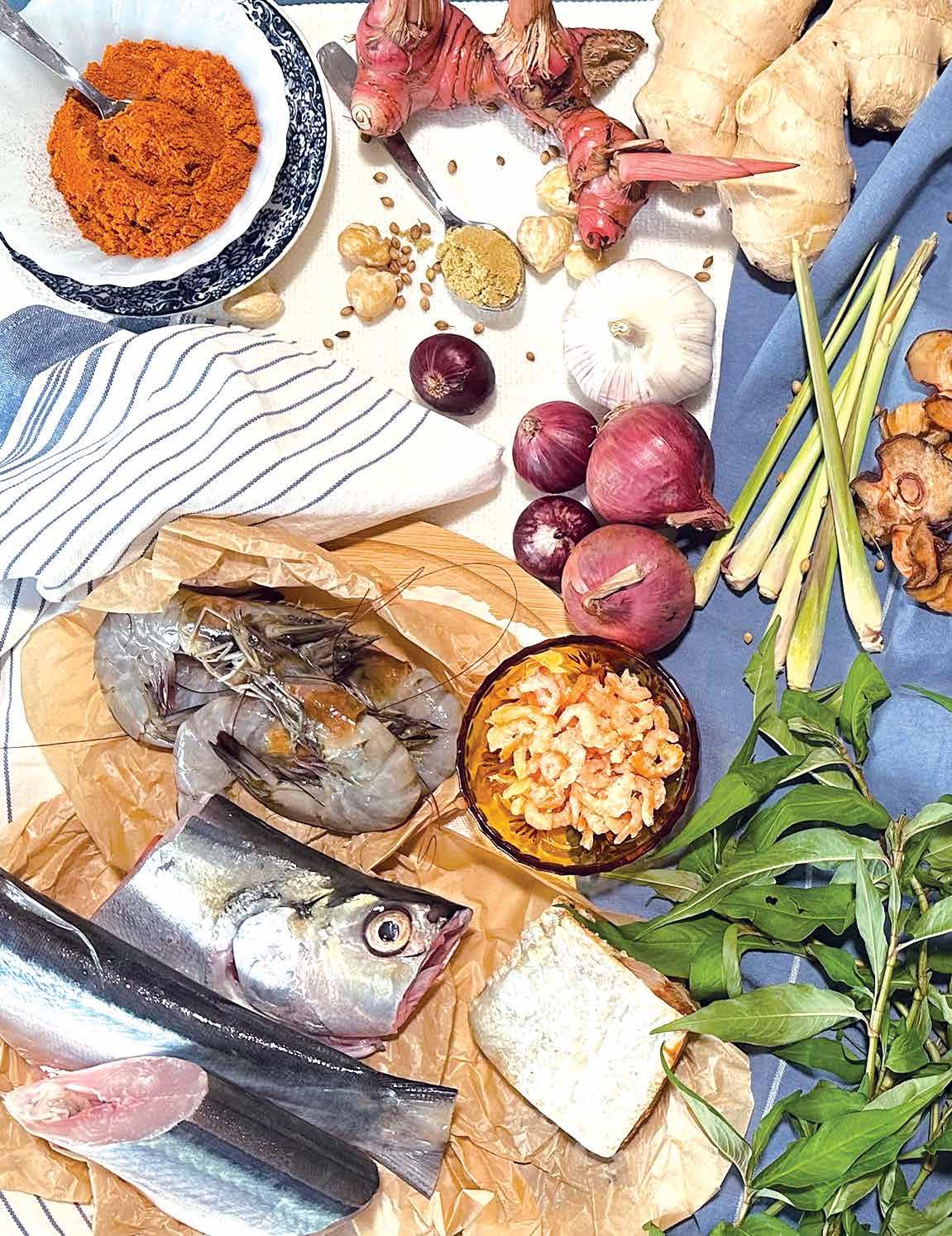
CANDLENUTS
Buah Keras
GALANGAL
Lengkuas
FRESH PRAWNS
Udang Segar
WHITE PEPPER
Lada Putih
GARLIC
Bawang Putih
RED ONIONS
Bawang Merah
GINGER
Halia
WOLF-HERRING FISH
Ikan Parang
DRIED SHRIMP
Udang Kering
LEMONGRASS
Serai
VIETNAMESE MINT LEAVES
Daun Kesum
DRIED THREADFIN FISH
Isi Ikan Kurau Kering
CUCUMBER
Timun

SPAGHETTI
DRIED TAMARIND SLICE
Asam Keping
COCONUT MILK
Santan
BEANSPROUTS
Taugeh
PICKLED RADISH
Chai Poh
TOASTED COCONUT PASTE
Kerisik
CORIANDER SEEDS
Biji Ketumbar
THAI BASIL LEAVES
Daun Selasih
SHRIMP PASTE
Belacan
CALAMANSI LIMES
Limau Kasturi
FRESH CHILLI
Cili Segar
DRIED CHILLI
CiliKering
Laksa Johor is a melting pot of different cultures: the Chinese for the noodle soup concept, Indian for the dry spices used, Malay for the cooking methods, and the West for the spaghetti! What sets Laksa Johor apart from the rest is that “uppity sophistication” of its ingredients and presentation. Each component of the dish is prepared with refined style, and together they form a dish that is fit for a king!
The preferred fish used for the gravy is wolf-herring (Ikan Parang) due to its fine texture and tasty flesh but comes with a lot of small bones. GAYA Traveller team learned that the process of cooking Laksa Johor could take up to two days, as preparing the fish alone could take a day to complete!
For a richer savoury and complex taste of the gravy, fresh prawns, dried shrimps and dried threadfin fish (Ikan Kurau) are added. The Laksa Johor gravy should be thick, its texture and consistency similar to that of Spaghetti Bolognese, so thick that you can eat it with your bare hands, and you are recommended to do so!
The proper Johor people always take pride in food presentation, especially for something exquisite
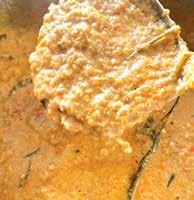


like Laksa Johor. A clump of spaghetti will be shaped into a knot, or the figure 8 for a single portion. This single portion of spaghetti is called a “chap” (which rhymes with the English word ‘up’); one may take a single or double “chap” at a go, depending on how famished one is.
The spaghetti and gravy are just the tip of the iceberg, Laksa Johor is not complete without the eight crucial toppings: cucumber, beansprouts, red onions, Thai basil leaves (daun selasih), Vietnamese mint leaves (daun kesum), pickled radish (chai poh), calamansi limes, and sambal belacan (spicy local condiment made from the blending of chilli and fermented shrimp paste). These raw toppings give a more robust zesty taste and crunch to the dish, turning it more satisfying to eat. The toppings are cut in a particular way as well to enhance the overall dish presentation,



especially the cucumber, which is a tell-tale sign of how purist is the Laksa Johor cook. The cucumbers should be cut to form thin rings, something only expert hands can create. Beansprouts should be tailed for that neat and tidy finish. Red onions are quartered and sliced thickly across. The aromatic leaves are finely sliced, while the calamansi limes are to be halved and deseeded.
Throughout the years, we have seen and heard many variations of the toppings of Laksa Johor. Purists are aghast, but it is after all a matter of personal preference. Besides the original eight toppings, variations now include torch ginger (bunga kantan), snake beans (kacang panjang), hard-boiled egg, jicama (sengkuang), sweet soy sauce, and black shrimp molasseslike paste (petis)
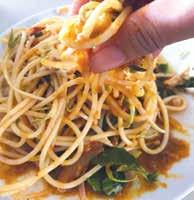
Gone are the days when out of town friends would ask where to find good Laksa Johor; and it was quite difficult to answer, simply because the Laksa Johor we had were usually homemade and consumed during special occasions like Hari Raya (Muslim Eid) or weddings. Thanks to the internet and social media, finding good Laksa Johor from wherever you are is now easier. From home-based business and food stalls to big fancy restaurants and caterers, Laksa Johor lovers are now spoilt for choice.
In Johor Bahru, the birthplace of Laksa Johor, this delicacy can be found in most Malay restaurants, especially those serving breakfast.
We asked friends for their favourite Laksa Johor spots in Johor Bahru and went on a Laksa Johor hunt of sorts. While all of the listed ones here were all delicious, our top pick is Ruma Tengah for its topnotch presentation and taste. Our only gripe is that Ruma Tengah only opens for business in the evening, which is quite an odd timing to eat Laksa Johor for us. Kafe D Bonda is another venue worth seeking out but is only available on weekends. Both Ruma Tengah and Kafe D Bonda are homebased cafes, offering diners a homely experience when dining in.


• Ruma Tengah
18 Lorong Murni, Kampung Melayu Majidee, 81100 Johor Bahru, Johor
Open daily (except Monday and Tuesday) 6:00 p.m. - 11:00 p.m.
• Kafe D Bonda (Laksa Johor only on weekends) 10 Jalan Stulang Bahru, Taman Suria, 81100 Johor Bahru, Johor Open daily
7:00 a.m. - 4:00 p.m.
• Rumah Mas 96 Jalan Beringin, Taman Melodies, 80250 Johor Bahru, Johor Open daily (except Monday) 8:30 a.m. - 4:30 p.m.
• Selasih Café Persada Johor Jalan Salim, Bandar Johor Bahru, 80000 Johor Bahru, Johor Open daily 7:00 a.m. - 7:00 p.m.
•Del’s Kitchen Plaza Pelangi, 2 Jalan Kuning, Taman Pelangi, 80400 Johor Bahru, Johor Open daily 9:30 a.m. - 9:00 p.m.
• Pondok Santapan Larkin 8 Jalan Puyuh, Larkin Jaya, 80350 Johor Bahru, Johor Open daily (except Friday) 7:00 a.m. – 12:00 p.m.
• Melor House by Nurul M Avenue Hotel, Jalan Straits View 6, 80200 Johor Bahru, Johor Open daily 11:00 a.m. - 6:00 p.m.
• Kelab Kopi Lama 2 Jalan Kempas Utama 1/1, Taman Kempas Utama, 81300 Johor Bahru, Johor Open daily 7:30 a.m. - 10:00 p.m.
• Kopitiam Nona 24 Jalan Nibong 17, Taman Daya, 81100 Johor Bahru, Johor Open daily (except Tuesday) 7:40 a.m. - 1:00 p.m.


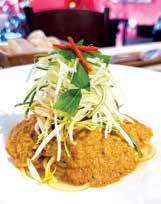
Klang Valley people is where people from all over the country congregate to find greener pastures. Johor food seems to be a hit with the masses, and we have come across some restaurants specialising in Johor food in the Klang Valley.
Dare we say it, Laksa Johor does taste a tad different outside its home state. They are generally delicious, but honestly, if you were craving for Laksa Johor, do come down to Johor for an authentic dining experience.
Again, we asked friends for their favourite Laksa Johor haunts in the Klang Valley and went on a Laksa Johor hunt. Most of the proprietors listed here are proud Johoreans, and we do know some of them personally.
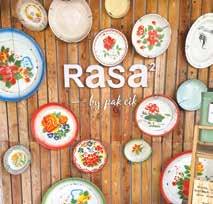
• ADU Sugar
10A First floor,
Lorong Ara Kiri 2, Bangsar, 59100 Kuala Lumpur
Open daily (except Monday) 12:00 p.m. - 4:00 p.m. 6:00 p.m. - 10:00 p.m.
• Lisette’s Various locations
Open daily 8:00 a.m. - 9:00 p.m.
• Tsuka Dining
14 Jalan Telawi 5, Bangsar, 59100 Kuala Lumpur
Open Daily (except Monday) 11:00 a.m. - 9:00 p.m.
• Tauhu Anora
12 JalanWangsa Setia 4, Wangsa Melawati. 53300 Kuala Lumpur
Open daily (except Monday) 9:30 a.m. - 5:00 p.m.
• Paktam Laksa Johor 9169 Jalan Negara, Taman Melawati, 53100 Kuala Lumpur
Open daily 8:00 a.m. - 11:30 p.m.
• Sepetang Café
• Wannah’s TTDI
22 Jalan tun Mohd Fuad 2, Taman Tun Dr, Ismail, 60000 Kuala Lumpur
Open daily 7:30 a.m. - 10:00 p.m.
25 Jalan Pandan Indah 1/22, Pandan Indah, 55100 Kuala Lumpur
Open daily (except Monday)
10:30 a.m. - 6:30 p.m. Weekends 11.30 am - 7.30 pm
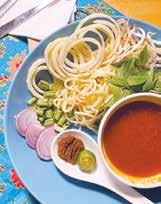
• Oh! Kopi Sini @keramat 10 Lorong Keramat Dalam 1, Kampung Datuk Keramat, 54000 Kuala Lumpur
Open Daily (except Thursday) 10:00 a.m. - 9:00 p.m. Weekends 10:00 a.m. - 10:00p.m.
• Café Rasa2 by Pak Cik Salleh
3690 Jalan Haji Taib, Kampung Jalan Kebun, 40460 Shah Alam, Selangor
Open daily (except Monday) 4:30 p.m. - 11:00 p.m.
• Dapor Cik Oli
84 Jalan SS21/62, 47400 Petaling Jaya, Selangor
Open daily 7:30 a.m. – 9:00 p.m. Weekends 9:30 a.m. - 9:00 p.m.
• Kerisik Café
23-G Jalan Sepah Puteri 5/1B, Kota Damansara, 47810 Petaling Jaya, Selangor
Open daily (except Sunday) 9:00 a.m. – 5:30 p.m.
• Kafe Serve Bangi
D-G, 2 Jalan 3/38A, Seksyen 3, 43650 Bandar Baru Bangi, Selangor
Open daily (except Tuesday) 8:30 a.m. - 4:30 p.m.


Do not be suprised that Laksa Johor can also be found across the Causeway! Due to proximity, the Singaporean and Johorean Malay food culture is similar, hence it is possible to find Laksa Johor in Singapore.
Curious about the taste of Laksa Johor in Singapore, we crossed the causeway to have our curiosity satisfied. We headed to Arab Street, where the recently opened Petra Haven Boutique Cafe is located. We not only ate Laksa Johor there, but also Singapore Laksa. The friendly owners sat with us and gave us a quick lesson on what Singapore Laksa is all about. To sum it up colloquially, both laksa dishes are “same same but different”.
Singapore Laksa gravy is thinner in consistency as the gravy consists of more coconut milk and seafood, unlike Laksa Johor, which is more


fish-centric. Singapore Laksa distinctly uses a thicker version of mee hoon (rice vermicelli) that is not easily found in Malaysia.
There are two versions of Singapore Laksa; the Chinese, and the Malay. Petra Haven Boutique Cafe serves the Malay version, which has thicker gravy, spicier, and bolder in taste. The Malay version of Singapore laksa is topped with hard-boiled egg, which blends the strong flavours well. Interestingly, the Chinese version is served with short strands of noodles, so that it is easier to eat with spoon.
Head on to these food outlets to get a taste of the island republic’s version of Laksa Johor:
• Petra Haven Boutique Café
48 Arab Street, Singapore 199831
Open daily 10:00 a.m. - 8:00 p.m.
• Muslim Food Stall
#01-114 Marsiling Lane Food Centre, Singapore 730020
Open daily 5:00 a.m. - 9:00 p.m.
• Leman Rojak at MakanShiok Blk 49 Teban Gardens Rd, Singapore 600049
Open daily 6:00 a.m. -12:30 a.m.

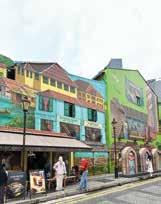
Thank you, Chef Adu Amran of ADU Sugar, Pakcik Salleh of Café Rasa2, Dhea of Petra Haven Boutique Café, for the delicious Laksa Johor! We’re also grateful to Haji Rizzal Khalid, Zarul Azrin, Art Fazil, and our followers for their suggestions of places to eat Laksa Johor in Johor Bahru, Klang Valley and Singapore.
Happy New Year 2025 & Safe Travels! Jom, Makan Laksa.


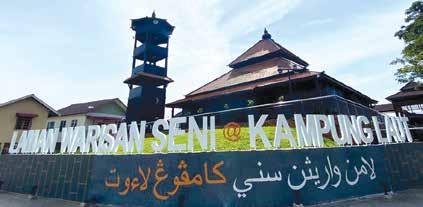
Nestling near the glistening waters of Kelantan River, Kampung Laut Heritage Site of (Laman Warisan Kampung Laut) offers a captivating blend of natural beauty, picturesque villages, cultural heritage, and a tranquil way of life.
This charming coastal village is a hidden gem that attracts both local and international travellers who seek an escape from the hustle and bustle of modern life. Kampung Laut, which is now gazetted as a heritage site, comprises three main parts: the Serunding Heritage Site (Laman Warisan Serunding), the Art Heritage Site (Laman Warisan Seni), and Kampung Laut Mosque.
Indulge your taste buds in a Kelantanese delight at the Serunding Heritage Site! Take home serunding – a savoury meat floss made from succulent meat, a dash of coconut milk, a sprinkle of onions, pepper, and a symphony of aromatic spices, which are all cooked and mixed to perfection. It’s the necessary condiment that elevates
Kelantanese dishes to a whole new level. Your palate is in for a rollercoaster ride of flavours –sweet, salty, and a hint of zing! Choose from an array of serunding options like Serunding Daging Tempatan (local meat), Serunding Daging Import (imported meat), Serunding Ayam (chicken), and Serunding Ikan (fish). If that were not enough, be sure to check out the sweet flavours of dodol (toffee-like palm sugar confection) and gelembung boyo (traditional confection made from grated coconut, glutinous rice and pandan paste).
Kelantan is well-known as the cradle of Malay culture the state is rich in arts and crafts that have been passed down from generation to generation. The Art Heritage Site is developed to preserve and promote such artistic and cultural heritage of the Kelantanese community in Kampung Laut.
The local artists here are renowned for their skills in producing ornate products such as batik, kites, calligraphy artworks, and handicraft items. Travellers get the opportunity to witness how these crafts are made and even try making them too, which they can take home as a lovely souvenir!



At the heart of Kampung Laut Heritage Site stands the area’s crown jewel: the ageold Kampung Laut Mosque. This venerable structure boasts a history that can be traced as far back as the 16th century, thus earning its distinction as Malaysia’s oldest mosque.
Legend has it that a band of intrepid Muslim missionaries (mubaligh) from the Sultanate of Demak in Java found themselves unexpectedly marooned in Kampung Laut due to a mishap with their seafaring vessel when they were making their way to Champa. In gratitude for their safe landing, they constructed the nowiconic Kampung Laut Mosque. Fast forward to the late 19th century, during the reign of the Kelantan Sultan from 1859 to 1900, this mosque served as a pivotal hub for royal rendezvous and spiritual gatherings.
Over the centuries, the Kampung Laut Mosque underwent a series of renovations and reconstructions while preserving its traditional architectural style which is quintessentially Malay. Characterised by its multi-tiered roof, intricate wood carvings, and traditional Islamic geometric patterns, the fascinating design showcases the craftsmanship and woodworking skills of the local artisans.
Remarkably, not a single nail was utilised in its construction – a testament to the traditional Malay builders’ prowess. Today, this hallowed edifice not only stands as a marker of religious devotion but also an indelible emblem of Kelantan’s storied past and authentic cultural heritage. The mosque’s historical and architectural eminence warrants it a must-see attraction for visitors to Kelantan, offering a glimpse into the enduring vitality of Malay culture.
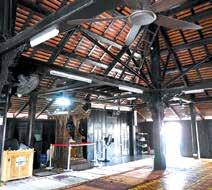

Dikir Rebana Kercing is a mesmerising musical spectacle exclusive to Kelantan. Originating from the quaint village of Kampung Laut over a century and a half ago, it began as a delightful pastime for Arab traders frequenting the area. Today, it graces royal coronations, weddings, and significant Islamic occasions like Maulidul Rasul, owing to its deeply ingrained Islamic essence.
Decked in costumes that fuse Malay and Arabic influences, Rebana Kercing performers rhythmically chant verses in both languages. Each song unveils a vibrant dance, weaving tales

of life wisdom, moral codes, and religious doctrines. The ensemble comprises 22 artists, with a dozen dancers and ten “pemalu rebana” (percussionists).
Once a cherished tradition, this unique art form began to fade. That was when the Dikir Rebana Kercing Kampung Laut Association stepped in to ensure that the next generation picks up the mantle. Fortunately, Universiti Malaysia Kelantan (UMK), in collaboration with the Kelantan state government and the US Embassy of Malaysia, also joined forces to safeguard this cultural gem from being extinct.
In 2022, a generous grant from the US Ambassador Fund Award breathed new life into Dikir Rebana Kercing. The funds were allocated for a comprehensive research and documentation effort, led by UMK academicians. This pivotal project paved the way for Dikir Rebana Kercing to become a vibrant extracurricular activity for UMK students and even found a place in the school curricula.
Kampung Laut Heritage Site is the ultimate portal to step back in time and immerse yourself in the timeless tapestry of Kelantanese culture. From the tranquil, picturesque surroundings to the captivating traditions that have defied the ravages of time, Kampung Laut invites you on an unforgettable expedition. So, pack your bags and brace for an adventure that spans generations!
For more info, visit https://tourism.kelantan. my/index.php/ms/.
Text & Images by ED JUNAIDI
I have visited Thailand countless times, exploring the South, West, East, major islands, and beach destinations. Yet, I’m baffled as to why it never occurred to me to check out Pattaya.
Oh boy, I didn’t know how much I missed until I received an invitation from the Tourism Authority of Thailand (TAT) to finally explore Pattaya!
This media trip coincided with the resumption of AirAsia’s Kuala Lumpur to Pattaya route on 17 June 2024. The inaugural flight, nearly full, departed Kuala Lumpur International Airport at 11:20 AM and landed at U-Tapao International Airport about two hours later, where we were welcomed with a water cannon salute and warm greetings from the representatives of AirAsia and the Tourism Authority of Thailand.

Apart from admiring the architecture, the Sanctuary of Truth is also a great place to appreciate traditional Thai costumes, which can be rented on-site.
One of the highlights of my trip was a visit to Coral Island, or Koh Larn, located about 10 kilometres off Pattaya’s coast. Known for its white sandy beaches, clear azure waters, and vibrant coral reefs, Koh Larn is perfect for snorkelling and diving.
The island boasts six main beaches, including the popular Tawaen Beach and the quieter Thien Beach. I rented a bike for around THB200 with fellow travel companions to explore the island. We stopped over at Matata Bay Café, a quaint spot overlooking the Gulf of Thailand, to enjoy a laidback afternoon and to quench our thirst in the hot weather.
Later that day, we rode to The Windmill Viewpoint, a vantage point in the middle of the island offering a breathtaking 360-degree view. The roads heading to the viewpoint are narrow and winding, so I advise visitors to be cautious when riding the bike. Koh Larn is a must-visit for its stunning beaches, exciting water activities, and serene natural beauty. Remember to bring sunblock, sun hats, and flip-flops.
Back in the city, we visited Art in Paradise, an interactive 3D art museum featuring hand-painted three-dimensional artworks and optical illusions that invite visitors to become part of the art. This is a fantastic addition to our Pattaya itinerary.
It’s a fun, immersive experience where you can touch, interact, and take photos with the exhibits. Perfect for families, it offers a creative and educational outing that is also budget friendly.
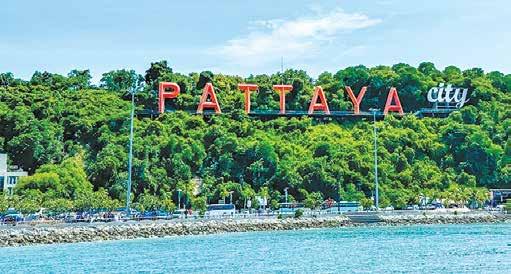
»
Pattaya is Thailand’s eighth largest city, known for its stunning beaches, thrilling water sports, and vibrant entertainment scene. Situated just 150 kilometres southeast of Bangkok on the Gulf of Thailand, this tropical beach city has transformed from a sleepy fishing village into a bustling tourist hotspot.
The city has made strides in recent years to improve the quality of its beaches and evolve into a more familyfriendly destination. Visitors come for its array of water sports, delectable dining options, charming cafes, and bustling souvenir shops, making it an ideal getaway for families, friends, and couples alike.
No visit to Pattaya is complete without experiencing the lively Pattaya Walking Street, especially vibrant for the young at heart. This 700-metre stretch at the southern end of Pattaya Beach Road is known for its electrifying nightlife, with pubs, nightclubs, go-go bars, live music venues, and seafood restaurants.
The street comes alive after sunset with neon lights and music, making it a must-see attraction for night owls. Our guide, Mr. Mike Wannachai, recommended visiting between November and February when the weather is cooler and more pleasant.

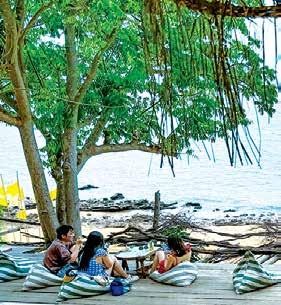


As an admirer of architecture and history, I was truly in love with the Sanctuary of Truth, and I am not exaggerating when I say this too was the highlight of my trip. This breathtaking wooden structure combines elements of a temple and a castle with the theme of the Ayutthaya Kingdom.
Designed by Thai businessman Lek Viriyaphan with his wife, this intricate hand-carved wooden edifice reflects Buddhist and Hindu beliefs. Standing 105 metres tall and made entirely of wood, the Sanctuary of Truth is an architectural marvel that offers a deep dive into Thai culture, philosophy, and spirituality.
We learned that this building is ever-growing, as more parts are added frequently, allowing for the incorporation of new designs and carvings over time. Visitors should dress comfortably and respectfully, as this site holds significant cultural and religious value.
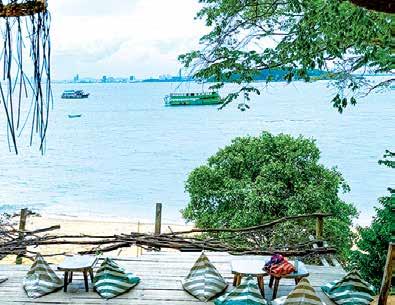

spread, clockwise from top, left: The Pattaya City sign, visible from Bali Hai Pier, marks the departure point for Coral Island; The architecture of the Sanctuary of Truth is an ever-growing marvel, with new parts continually being added; The vibrant gateway to Pattaya Walking Street, illuminated by neon lights and filled with lively music; Matata Bay Café, a charming spot overlooking the Gulf of Thailand; All of the three-dimensional artworks at Art in Paradise are hand-painted.
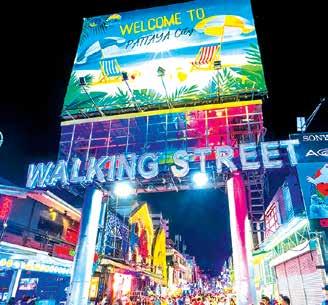



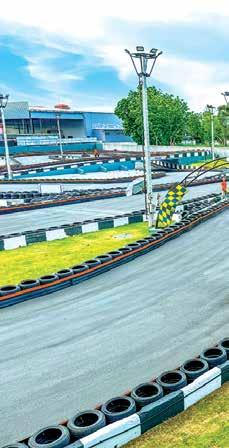


This spread, clockwise from top left: Despite the tropical heat outside, FROST Magical Ice of Siam offers respite with its sub-zero temperatures; Great & Grand Sweet Destination is perfect for family outings; Switch to an adrenaline-pumping adventure with a go-karting session; Tappia Floating Café offers a unique dining experience on the water.
About 20 minutes away, along Route 36, we stepped into a candy wonderland at Great & Grand Sweet Destination, a whimsical dessertthemed park featuring life-sized dessert figures and themed cafes, including an ice cream parlour offering delicious frozen yoghurt ice creams.
It’s an imaginative and fun environment perfect for dessert lovers and families to enjoy vibrant and playful photo opportunities and indulge in a variety of sweets.
The park is open from 8:30 AM to 6:00 PM on weekdays and until 7:00 PM on weekends.
For a cool retreat from Pattaya’s tropical climate, we visited FROST Magical Ice of Siam, an icy amusement park featuring stunning ice sculptures, and an ice dome kept at -10°C. The park boasts the largest ice sculpture display in Southeast Asia and includes various themed zones like Siam Heaven and Himmapan Zone, offering a unique Arctic experience in a tropical setting. Visitors can enjoy drinks from ice glasses and explore ice caves.
The park is open daily from 9:00 AM to 7:00 PM.
Later that day, we needed a thrilling experience, so we swung by go-karting at EasyKart.net, Thailand’s largest and most advanced go-karting complex.
Located at Bali Hai Pier, the facility features a 350-metre beginner track and an 800-metre racing track, catering to all skill levels. There are four different kart models, including kids’ karts, regular karts, fast karts, and two-seater karts.
Prioritising safety, the go-kart complex is equipped with high-tech safety features and provides all necessary safety gear. For visitors who are not keen on go-karting, there are many other offerings such as the panoramic terrace, restaurant, bar, and pool table, making it a fun activity for all ages.
Opens Monday to Thursday from 1:00 PM to 9:00 PM, and Friday to Sunday until 11:00 PM.
» TAPPIA FLOATING CAFÉ
To settle down from our adrenaline rush, we hopped on a boat from the pier and headed to Tappia Floating Café, a floating café that offers a unique dining experience on the water, with stunning ocean views and a relaxing atmosphere.
Accessible by boat from Bali Hai Pier, the café provides a variety of drinks and dishes, along with the opportunity to try squid fishing. Visitors can have their catch prepared as sashimi or grilled.
For those who suffer from seasickness, this attraction may be a bit challenging. Take your motion sickness medication before departing. Otherwise, this is a perfect getaway from the land to unwind.
The café is open daily from 10:00 AM to 10:00 PM.

The morning after, we took a trip to Pattaya Floating Market to experience the traditional Thai way of life. Established in 2008, the market features over 400 shops and boat vendors offering Thai food, desserts, handicrafts, and souvenirs.
Divided into four sections, each representing a different region of Thailand, the market offers a rich cultural experience.
Shortly after arrival, we were just in time to watch an intriguing water Thai boxing performance, where two boxers fight each other with fists, elbows, and knees while sitting on a bamboo stilt. The first one to fall into the water loses.
The market is open daily from 9:00 AM to 8:00 PM.
On the last day of our trip to Pattaya,

we visited Nong Nooch Tropical Botanical Garden. This is another highlight of the trip. This garden is a vast 500-acre park known for its stunning landscapes and diverse plant collections.
Established in 1980, the garden features themed sections such as French Garden, Italian Garden, and Cactus Garden.
However, the standout attraction for me was the Dinosaur Valley, with lifesized dinosaur replicas that provide an immersive Jurassic experience. I was so excited to see the dinosaurs that I wandered away from the group tour and spent more time by myself there. Though I am already over 40, this part of the park made me giggle like a 14-year-old.
We also watched captivating traditional Thai cultural shows and elephant performances.
The garden is open daily from 8:00 AM to 6:00 PM.
What better way to spend your last night in Pattaya other than watching Tiffany’s Show, a world-renowned cabaret show featuring talented performers in elaborate costumes?
Since 1974, it has been delivering spectacular performances blending traditional Thai dance, contemporary pop, and Broadway-style numbers. With high production value and impressive performances, Tiffany’s Show is a must-see for anyone visiting Pattaya.
Don’t forget to take a moment after the show to meet and greet the performers outside the theatre. They are strikingly beautiful in glamorous and glittering dresses.
Shows are held daily at 6:00 PM, 7:30 PM, and 9:00 PM, with ticket prices ranging from THB1,200 to THB2,500.


This spread, clockwise from the previous page: Pattaya Floating Market offers visitors a glimpse of authentic traditional Thai life; Nong Nooch Botanical Garden features a stunning variety of flowers and tropical plants, along with a massive park filled with life-sized dinosaur sculptures; Tiffany’s Show, a world-renowned cabaret, lights up Pattaya’s nightlife; An elaborate theatrical show featuring live elephants at Nong Nooch Botanical Garden; A rousing Thai boxing match on a large pole above water is in progress.

We stayed at two different lodgings during our trip to Pattaya.
The first was Sea Sand Sun Resort & Villas, a luxurious 5-star resort located in Na Jomtien, about 30 minutes from Pattaya City and only 15 minutes from U-Tapao International Airport.
It was an amazing first-night stop for us after arriving in the late afternoon from Kuala Lumpur. This tranquil haven is located along a white sandy beach, offering a serene escape from the bustling city.
The resort offers several types of villas: Garden Boutique, Garden Villa, Pavilion Villa, Pool Villa Suite, and Ocean Front Pool Villa Suite. I highly recommend the 200-metre squared Garden Suite with Jacuzzi, which has its own private jacuzzi and pool.
The special Thai massage treatment dispensed by the resort’s spa, operated by Bhawa Spa, is also a must-try. After the treatment, I felt rejuvenated and eager to continue exploring Pattaya.
That evening, we regrouped at the beach to enjoy delicious mocktails while watching the sunset. This resort is perfect for those seeking a blend of luxury, comfort, and natural beauty.
The second hotel was Pattaya Modus Beachfront Resort Hotel, a luxurious beachfront resort located on Wong Amat Beach in Northern Pattaya. While we did not have the opportunity to tour the resort, from the intimate and spacious look of my room, which includes a balcony and large kingsized bed, I can say that the resort in its entirety meets my grand Pattaya expectations!
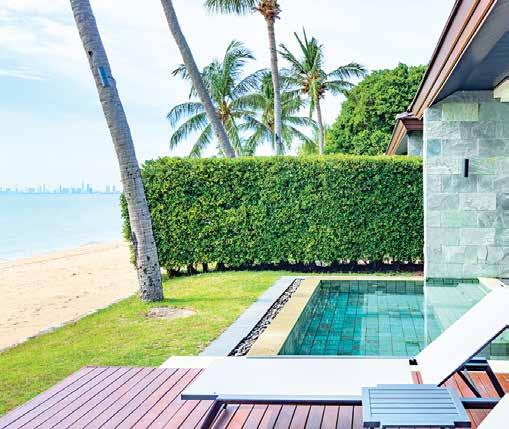
Each of us stayed in a Deluxe Ocean View Room, elegantly designed to offer guests outstanding sea views to enjoy the view of the sea and sunset after a long day exploring this tropical beach city.
Pattaya offers a diverse range of attractions and experiences, from serene beaches and cultural landmarks to vibrant nightlife and unique activities. Whether you’re seeking adventure, relaxation, or cultural immersion, Pattaya has something for everyone. So, pack your bags and get ready to explore this coastal gem on your next holiday!
I must thank Ms. Mai and Ms. Bulan from TAT, and our guide Mr. Mike, for sharing informative, extensive, and valuable knowledge about Pattaya during this trip. Khob khun krub, Pattaya and see you again!
The Gaya Travel Magazine team extends its heartfelt gratitude to the Tourism Authority of Thailand (TAT) for making the writer’s trip possible and smooth sailing.
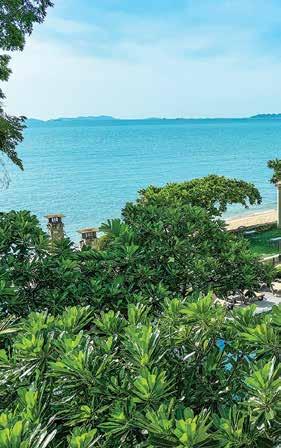
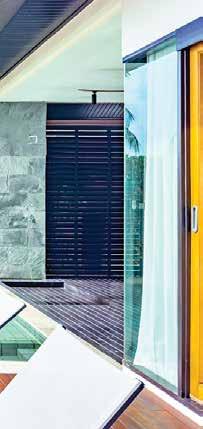
In this spread, clockwise from left: The Ocean Front Pool Villa Suite at Sea Sand Sun Resort & Villas is the epitome of tropical luxury; Sea Sand Sun Resort & Villas is perfectly situated on a beautiful beach aligned with the sunset horizon; The well-designed room and spacious bathroom at Pattaya Modus Beachfront Resort Hotel make it ideal for honeymooners.
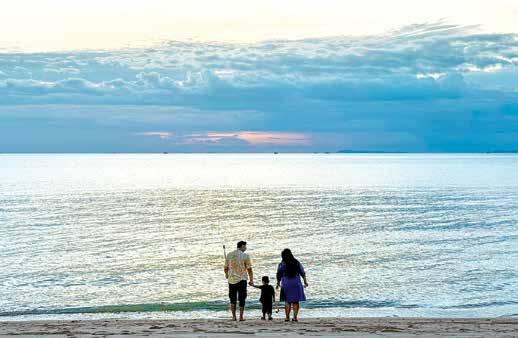



Text & Images by SHAHIDA SAKERI

As I savour the rich, soulful broth of my braised beef noodles in a quaint Taichung shop, a sense of contentment washes over me. The taste is wholesome, just like my trip to Taiwan. Forget the bustling crowds and adrenaline-pumping thrills; Taiwan offers a different kind of adventure - one for the soul.
My recent trip to this enchanting island was a delightful escape from the ordinary. Each corner I turned to, revealed a new facet of Taiwan’s charm, and it was the quieter, lesser-known places that truly stole my heart. Let me introduce you to a Taiwan that’s far removed from the tourist trail, and hopefully will inspire you for your next relaxing vacation.
Previous page: The serene lakeside at Xinshe Castle makes it an ideal place to escape the hustle and bustle.
This page: The writer in front of the Zhengbin Fishing Port Colourful Houses.
» Zhengbin Fishing Port Colourful Houses, Keelung Established since 1934 during the Japanese colonial era, this historic port has recently undergone a stunning transformation. The once-bustling hub now gleams with colourful buildings that line the waterfront, part of a rejuvenation project designed to revive its historical charm and appeal to contemporary visitors.
Take advantage of the vivid hues of the port’s structures against the deep blue sky, which creates a beautiful background for your Instagram feed. A leisurely stroll along the bay allows you to fully absorb the relaxed atmosphere

and picturesque views. Additionally, don’t miss the “Folk Art” boat, a unique attraction that serves as Taiwan’s first art museum on the sea.
» Shinfong Farm, Xinshe, Taichung Shinfong Farm in Xinshe offers a delightful fruit-picking experience. The fruit-picking season stretches from April to May for peaches, and from June to December for grapes. I was lucky enough to experience the latter, indulging in the beautiful flavours of Kyoho grapes, a variety from Japan known for its chewy texture and sweet, slightly sour taste. The grapes here taste divine due to the perfect combination of rich soil and favourable weather, with plenty of sun and rain. And if you’re visiting in September, don’t miss the opportunity to enjoy a delightful afternoon tea amidst the farm’s idyllic scenery.
» Xinshe Castle, Xinshe, Taichung For a touch of European romance, head to Xinshe Castle. This enchanting complex transports you to another world with its picturesque lakeside setting, cobblestoned pathways, and stunning architecture. It’s the perfect place to escape the hustle and bustle, and simply enjoy a leisurely stroll. The sound of cicadas during the summer days provides a soothing soundtrack to your wanderings, while the serene lakeside offers a tranquil spot to lose yourself in a good book.
» Gaomei Wetlands, Taichung Nature lovers will be captivated by Gaomei Wetlands. This coastal treasure invites you to explore its sandy shores, where you can spot a variety of fascinating creatures, from migratory birds to playful mudskippers. The highlight is undoubtedly the 800-metre-long dock that offers breathtaking sunset view together with colossal wind turbines. For the best birdwatching experience, plan your visit during the fall and winter months.


from top, left: The gorgeous architecture of Miyahara has often been likened to the whimsical settings found within the magical world of Fantastic Beasts; Lukang Lungshan Temple is one the best-preserved historic sites in Taiwan; Halal souvenir section at Magical Mushroom Tribe Leisure Farm; Wanggong Fishing Port is where visitors get to try collecting oysters themselves.

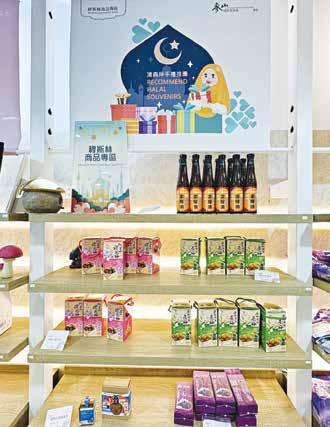
» Miyahara, Taichung
Housed in a beautifully restored historic building, this enchanting establishment offers a delightful blend of heritage and indulgence. The store was originally an ophthalmology clinic during the Japanese occupation and now turned into a snack wonderland, tantalising taste buds with its exquisite handmade confections. From a dizzying array of over 60 ice cream flavours – my personal favourite being the decadent 80% Uganda chocolate – to an assortment of delectable pastries and cookies, Miyahara is certainly a sweet tooth’s dream come true.
Upstairs, its Moon Pavilion restaurant has earned the coveted Michelin Bib Gourmand award for its exceptional cuisine. This is the perfect spot to savour a delicious meal while admiring the building’s stunning architecture.
» Lukang Lungshan Temple, Changhua
Built in 1786 and meticulously restored in 2008, this temple is one the bestpreserved historic sites in Taiwan. Its exquisite stone sculptures, wood carvings, and hand-painted details are a testament to the artistry of its creators. Don’t miss the awe-inspiring spider web ceiling, a rare and ancient architectural marvel. While admiring this sacred space, do remember to respect the temple’s role as a place of worship.
To truly immerse yourself in the enchanting atmosphere of Lukang, consider a leisurely trishaw ride
through the town (from TWD600 per hour). For a touch of nostalgia, rent a qipao or changshan (from TWD500) to step back in time.
» Wanggong Fishing Port, Changhua Want a truly unique and hands-on experience in Taiwan? The Wanggong Oyster Cart Ecotour is a must-try as Wanggong area is renowned for its rich tradition of oyster farming. Here, you get to learn about the local oyster farming tradition as you wade through the intertidal zones, armed with a rake. The reward? A feast of fresh oysters!
Remember to wear waterproof footwear and bring a change of clothes, as you’re bound to get wet and soiled with mud! The activity lasts about two hours. On your way back to the parking lot, enjoy the view of lighthouses and huge windmills. During summer, wildflowers and bushes add vibrant colours to the landscape.
» Magical Mushroom Tribe Leisure Farm, Changhua
For those with a passion for nature and healthy living, the Magical Mushroom Tribe Leisure Farm is a must-visit. Learn about the cuttingedge technology behind mushroom cultivation and witness the magic of nature first-hand. The on-site gift shop also offers a tempting array of mushroom-based products, from snacks to skincare.
And please don’t skip the restaurant here. It is a culinary delight, serving up a variety of creative mushroom dishes
made from freshly picked ingredients, especially the Black Beauty Oyster Mushroom, a Shennong Award winner (known as the Nobel Prize of Taiwan Agriculture), which is a must-try. The farm also caters to Muslim visitors with a Muslim-friendly Vitality Hot Pot.
Beyond the farm’s educational and culinary offerings, there are plenty of activities to keep everyone entertained. Children will love the biscuit- and pizza-making workshops, while adults can relax in the serene surroundings. For Muslim travellers, there’s a dedicated prayer area on site.
» Taipei Grand Mosque, Taipei
In the heart of Da’an district stands the Taipei Grand Mosque, Taiwan’s largest and most historic mosque. Built in 1960 with generous donations from Muslim nations and the local government, this architectural gem features a dome, two minarets, and vibrant tiles, reflecting a distinctive Turkish style.
The mosque which can accommodate up to 1,000 worshippers also serves as the headquarters of the Chinese Muslim Association. Travellers can join the congregation for Friday prayers and explore the local Halal food and Muslim-related goods available on the ground floor. Public classes held every Sunday offer the chance to delve deeper into Islamic teachings, making the mosque not just a place of worship but a cultural and educational hub for both locals and visitors.

Next
» Beitou Thermal Valley Venture north of Taipei city centre, and you’ll find yourself in the enchanting district of Beitou, renowned for its hot springs and spas. The hot spring culture here dates back to 1896, introduced during the Japanese occupation. Beitou, or ‘Peitou’ as it was once known, derives its name from the local aboriginal term for ‘witch,’ inspired by the valley’s mist and sulphuric odour.
A highlight is the Beitou Thermal Valley, affectionately dubbed Hell Valley. This natural hot spring pool, with water temperatures ranging from 800C to 1000C, is too hot for a dip but mesmerising to behold. Stroll along the well-maintained pathways, enveloped in the mystical mist, and let the ethereal beauty captivate you.
Don’t miss the Beitou Hot Spring Museum, originally a public bathhouse with a fascinating blend of Japanese and European architectural influences. It now showcases the rich history of Beitou’s hot springs through exhibitions of historical relics and photographs. Take time to admire the museum’s Roman-styled baths, adorned with elegant stained-glass windows, which give you a glimpse of this luxurious past.
For bookworms, be sure to not miss the Beitou Library, Taiwan’s first ‘green’ library. Designed to blend seamlessly with its surroundings, this eco-friendly structure boasts rooftop solar cells, a rainwater collection system, and extensive use of natural light. It’s a peaceful retreat to slow down with a good book.
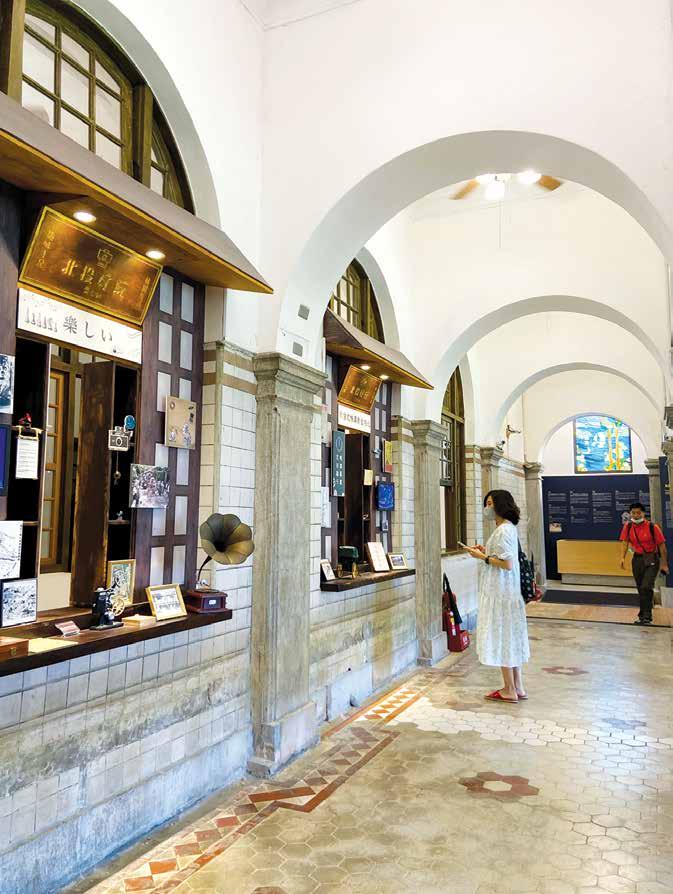
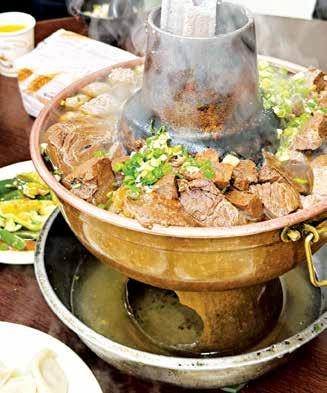




WHERE TO EAT?
» Halal Chinese Beef Noodles (Da’an), Taipei
Visiting Taiwan without trying the beef noodle is a culinary sin. Taiwanese beef noodles, influenced by Sichuan cuisine, pack a delightful spicy punch that lingers on the palate. One of the top spots to savour this dish is a venerable restaurant in Da’an, boasting 60 years of history with recipes passed down through generations. This establishment has earned a spot on the MICHELIN Bib Gourmand list since 2018, a testament to its culinary excellence.
The signature dish, braised beef noodle soup, is a masterpiece. Braised for hours to achieve deep, rich flavours, the soup is complemented perfectly by noodles that strike the ideal balance between softness and springiness. Another highlight is the beef stir fry, known for its tender, delicious meat. To top it all off, the prices here are reasonable,
making it a must-visit.
» Moiz Ali Restaurant, Keelung
The Halal-certified Moiz Ali Restaurant in Keelung might look modest, but it has won the hearts of many with its authentic, mouthwatering curry dishes. The restaurant has received accolades from various media outlets, with internet celebrities, TV stations, newspapers, and magazines all praising its originality and quality.
» Chensveg Café
With a menu that caters to every plantbased palate, from hearty hot pots to light and refreshing pasta, Chensveg Café is a must-visit for vegetarians. The cafe’s pesto focaccia, topped with juicy oyster mushrooms and a medley of vegetables, is a standout dish. Don’t miss the chance to savour the spicy, sour mala hot pot – it’s a flavourful explosion! The cafe’s Beitun branch offers a tranquil escape, surrounded by lush greenery and a calming koi pond.
While the prices might be slightly higher than your average eatery, the quality of ingredients and generous portions make it a worthwhile indulgence.
» Halal Ende Yuan Dumpling House, Taichung
For those seeking authentic cuisine, Halal Ende Yuan Dumpling House is a fantastic option. This casual eatery serves up classic Taiwanese dishes with a halal twist. The establishment’s hot pots brim with flavour, and the dumplings are simply irresistible. The beef broth is a particular highlight: rich, flavourful, and incredibly smooth. Be prepared to wait, as this popular spot is often crowded.
Gaya Travel Magazine extends our heartfelt gratitude to Taiwan Tourism Bureau, Malaysia, and Hexa-Communications for making the writer’s trip to Taiwan possible. Visit www.taiwan. net.my for more information regarding Taiwan.
Malaysia is an excellent destination for ecotourism due to its rich biodiversity and natural beauty. Home to 15,000 species of flowering plants, 1,500 species of terrestrial vertebrates and some 150,000 species of invertebrates, including countless micro-organisms, the country ranks 12th in the world as most biologically diverse, according to the National Biodiversity Index.
To experience remarkable ecotourism getaways in Malaysia, check out the selected ecotourism marvels:

» LANGKAWI GEOPARK www.langkawigeopark.com.my
In 2007, Langkawi received the UNESCO Global Geopark status, the first global geopark in Southeast Asia. Langkawi UNESCO Global Geopark consists of Machinchang Cambrian Geoforest Park, Kilim Karst Geoforest Park, Dayang Bunting Marble Geoforest Park, and Kubang Badak BioGeo Trail. Langkawi archipelago boasts the oldest and most complete Palaeozoic (550 million to 250 million years ago) geological record in the region. As a matter of fact, the deltaic sandstones formed 550 million years ago and now part of the Machinchang mountain range are the oldest rock formations in Southeast Asia, where travellers can admire from above when taking the Langkawi cable car (https:// panoramalangkawi.com/) to Machinchang’s summit, or from the river in Kubang Badak (https://biogeoinfinityadventure.weebly.com/ kubang-badak-fishing-jetty.html) that leads travellers to vast tracts of mangrove forests, a river estuary of great geological diversity, and a settlement with a rich history. Other must-dos include cruising along Kilim River (https://kilimgeoforestpark.com/

kilim-mangrove-tour/) to witness the mangroves, coastal karsts, fish farms, and majestic eagles, as well as taking in the amazing landscape and atmosphere of the legendary Dayang Bunting island (https://www.pulaudayangbunting.com/).
» PENANG HILL BIOSPHERE RESERVE
https://en.unesco.org/biosphere/aspac/penang-hill
This 2021-designated Biosphere Reserve encompasses Penang Hill (https://www. penanghill.gov.my/index.php/en/), Penang State Forest Reserves, Penang Penang State Forest Reserves, Penang Botanical Gardens, and Penang National Park, including Pantai Kerachut
Turtle Conservation Centre, forming an unbroken link from the hill to the sea. The entire reserve comprises urban, agricultural and natural landscapes, with one of the last coastal rainforests in Malaysia, coastal lowland and hill dipterocarp forests, mangroves, wetlands, sandy beaches and coral reefs. These diverse habitats support a wide range of floral and faunal diversity, including endemic and endangered species like the Irrawaddy dolphin, Sunda pangolin, migratory birds, and endangered sea turtles.
» BELUM-TEMENGGOR FOREST COMPLEX
https://belum.com.my
This 130-million-year-old tropical rainforest complex is four times the size of Singapore, home to 14 of the world’s most endangered mammals like the Malayan tiger, Sumatran rhinoceros, and Asian elephant, including 3,000 flowering plant species and three species of Rafflesia, the world’s largest single flower. Part of this expanse includes the Royal Belum State Park covering 117,500 hectares, where the luxurious Belum Rainforest Resort (https:// www.belumrainforestresort.com/) nestles on the lake island of Pulau Banding surrounded by verdant rainforest. Travellers should also experience staying on a houseboat, for instance Casuarina Houseboat (https:// www.facebook.com/houseboatcasuarina/), which cruises along Lake Temenggor where they can swim and kayak in the waters, admire sunrise and sunset, gaze at the stars on a clear night, trek to a mesmerising waterfall, learn about endemic plants while trekking, and visit an Orang Asli (aboriginal tribe) settlement. A typical houseboat can accommodate between 10 and 40 persons, with rooms and shared bathrooms, generous living space, karaoke set for entertainment, Muslim prayer room, and food served onboard by staff.
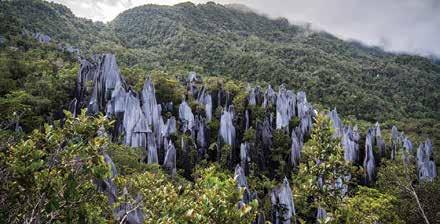
» FRASER’S HILL
www.fraserhill.info
Though it is only two hours’ drive away from Kuala Lumpur, Fraser’s Hill does feel like hundreds of kilometres away from the cacophony of the urban centres. Named after a Scotsman, Louis James Fraser, who was excavating tin around the area in the early 1890s, the temperature here ranges from 17 to 25 degrees Celsius all year long. Fraser’s Hill largely unperturbed natural surroundings attract many bird-watching aficionados who come here to spot various types of birds since Fraser’s Hill is home to around 205 of the 260 birds of resident species, while another 40 species are migratory birds that stop by to replenish their energy, especially in June, the same time when the Fraser’s Hill International Bird Race competition is held annually. If you preferred to stay right in the middle of Fraser’s Hill centre, check out Puncak Inn (https://www.puncakinn. com/)and its sister property The Cottage (Bentong) Bungalow, including other options like Abu Suradi (Tioman) Bungalow, Cicely (Kuantan) Bungalow, and Hollebekke (Chini) Bungalow.
» LAKE KENYIR
https://www.ketengah.gov.my/10-activities-to-dofor-a-fun-trip-in-kenyir
Lake Kenyir is one of the places in Terengganu where you can see Mother Nature at its finest. Be sure to play with and feed the river fish known as mahseer or kelah at the Kelah Sanctuary, which is the breeding and nursery ground for the fish. Then watch adorable elephants up close at Kenyir Elephant Conservation Village (https://www.kecv.com. my/), home to 13 rescued elephants where visitors are welcomed to bathe with them at a nearby tributary. The village spans 256 hectares, but only 10% of the area is developed to provide the best natural habitat possible for the elephants. Top off your Lake Kenyir experience by staying on a houseboat that allows you to

be close to nature. Our personal pick is the Kenyir Eco Resort (https://www.facebook.com/ kenyirecoresort/) with its comfortable beds, delicious meals and plenty of activities to keep you entertained, including banana boat rides, fishing and swimming in the refreshing waters. During a clear night, you can witness the beautiful starry sky.
» GUNUNG MULU NATIONAL PARK https://mulupark.com
Gunung Mulu National Park in the State of Sarawak has been listed as UNESCO World Heritage Site since 2 December 2000. Gunung Mulu National Park covers 528.64 kilometres squared of primary rainforest containing 111 species and 20 genera for palms, 1,700 species of liverworts and mosses, 28 species of bats, 270 species of birds, 20,000 species of invertebrates, 55 species of reptiles and 48 species of fish. Of the 29 endemic Borneo bird species, 26 are found within the national park. Eight of Borneo’s hornbill species can be found in Mulu. There are many different trails open for leisure walking in Mulu, the free ones being Kenyalang Loop, Paku Waterfall and Paku Valley Walk. Those who are physically fit can challenge themselves by climbing to the viewpoint of the unique karst rock formation also known as the
Mulu Pinnacles. Standing at 45 metres high, the limestone needles cling to the side of Gunung Api, forming a forest of razor-edged limestone surrounded by lush vegetation. For authentic experience, stay at Mulu Village (https://www. muluvillage.com/).
» SABAH https://sabahtourism.com
Sabah – especially Sandakan, Sukau, and Danum Valley – possesses Malaysia’s most significant ecotourism destinations due to its lush tropical forests, including Mount Kinabalu, the highest peak in the country at 4,095 metres. First-timers to Sandakan should tick off Sepilok Orang Utan Rehabilitation Centre (https://www.instagram. com/sepilokorangutan/) from their list. Only half an hour’s drive from the city, this centre serves as a refuge for orangutans, a species of primate that is indigenous to Borneo and Sumatra. To make your trip more meaningful, come at 10:00 a.m. and 3:00 p.m., which are the orangutan feeding times, to witness these primates. The sanctuary does not allow visitors to carry bags, food, drinks, and insect repellents; instead, lockers are provided at the entrance. Next to the centre are Sepilok Nature Lodge (https://dive-malaysia.com/sepilok-nature-lodge/), Sepilok Nature Resort, and Sepilok Jungle Resort (https://www.sepilokjungleresort.com/) for convenient stay. The best place to stay is the award-winning Sukau Rainforest Lodge (https:// www.sukau.com/), the bastion of sustainability nestling along the banks of one of Borneo’s most important waterways, the Kinabatangan River, home to many of Borneo’s magnificent wildlife. Borneo Rainforest Lodge (https:// danumvalley.rainforestlodge.com/collections/ borneo-rainforest-lodge) is another awardwinning lodge right in the heart of one of world’s oldest and pristine rainforests, Danum Valley Conservation Area (https://danumvalley. net/), located 70 kilometres from Lahad Datu town. It is a cosy and luxurious eco-resort with 31 individual chalets with fans and en suite bathrooms, accommodating up to only 60 guests on any one day and on a full-board basis.
For more info, visit https://www.malaysia.travel
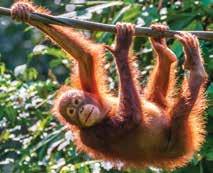
One minute you’re dodging motorbikes and sipping iced coffee in the heart of Ho Chi Minh City, and the next, you’re lounging by the turquoise waters of Quy Nhon, listening to the waves breaking. Vietnam is a country of contrasts, and after spending seven glorious days there, I can say it’s the perfect destination for any young traveller seeking a mix of adventure, culture, and relaxation.
I’m always on the lookout for places that offer more than just Instagram-worthy views. Vietnam, especially Ho Chi Minh City and Quy Nhon, delivers in spades. This country has an energy that sweeps you up the moment you step off the plane.
Ho Chi Minh City is a bustling metropolis with nearly nine million people and enough coffee shops to keep you caffeinated for life. Meanwhile, Quy Nhon, a more off-the-beaten-path coastal gem, offers the perfect respite after the chaos of city life. In this itinerary, I’ll walk you through the places I visited from quirky cafes hidden inside old apartments to breathtaking temples perched on hilltops. Let’s dive into the adventure!
Walking into the Saigon Post Office feels like stepping back in time! The gorgeous French architecture is a total showstopper.

HO CHI MINH CITY:
» Four Days, Three Nights of City Magic
I kicked off my first day in Ho Chi Minh by visiting the quirky Apartment Cafe, a multi-level building packed with unique cafes. Each floor has something different to offer, from aromatic brews to cosy nooks perfect for people-watching. Trust me, grabbing a coffee here makes you feel like you’ve uncovered one of the city’s coolest secrets.
Next stop was the Ho Chi Minh Statue in Nguyen Hue walking street. It’s a great spot for leisurely stroll and phototaking. The area is super pedestrianfriendly, and it’s easy to explore on foot. Even better, if you were feeling a bit tired, just hop on a Grab motorbike ride, which is fast, affordable, and takes you anywhere in the city!
From there, I wandered over to the Saigon Central Post Office. As an architecture lover, I was amazed by the French colonial design and its bright yellow facade. It felt like stepping back in time. Across the way, Book Street was a charming lane filled with bookshops and street vendors, a perfect spot to relax after all that sightseeing.
To wrap up the evening, I joined a Vespa Tour (https://vespaadventures. com/). Riding through the city’s chaotic streets on the back of a vintage Vespa is as thrilling as it sounds-especially when you stop for street food along the way!
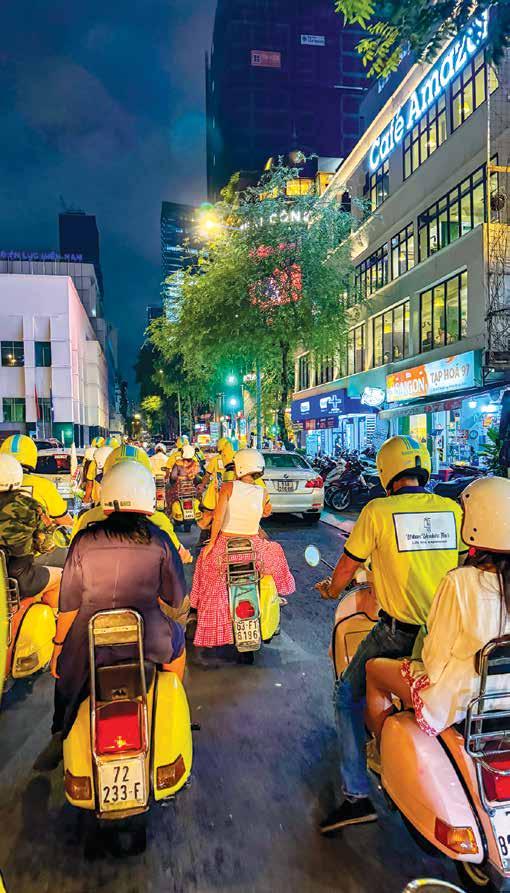
» Art, Coffee & The A O Show
Art lovers, you can’t miss the delightful Rehanh Gallery (https://www.rehahnphotographer.com/fine-art-gallery-saigon/) featuring contemporary Vietnamese artwork. After being immersed in local creativity, I needed a caffeine break, so I headed to the nearest Highland Coffee shop, a local favourite that’s become something of an institution in Vietnam.
The highlight of my second day, though, was watching the A O Show (https:// www.luneproduction.com/ao-show) at the Saigon Opera House. Picture Cirque du Soleil meets Vietnamese culture through a mix of acrobatics, bamboo circling, and live music. Plus, the Opera House itself is stunning inside and out!
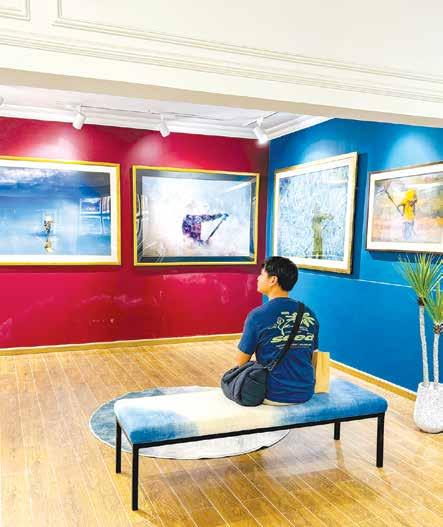
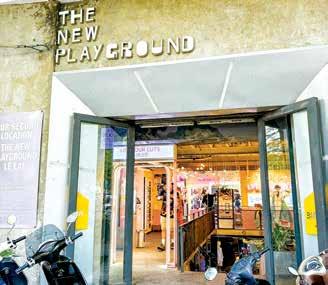
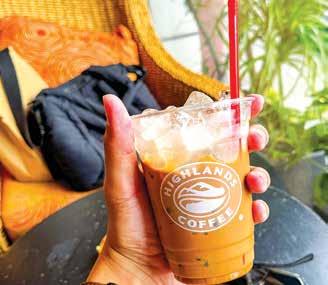
From left to right: Riding the Hop-On Hop-Off bus in Ho Chi Minh City is an efficient way to see the sights at your own pace; The quirky Apartment Cafe, which is a multi-level building packed with unique cafes, should be on all travellers’ list; Savouring a comforting croissant and refreshing beverage in one of the cosy cafés in Apartment Cafe while taking in the city’s skyline.
»
Cultural Mashup and Shopping
By day three, I craved for something a little different. That’s when I discovered Jalan Malaysia, where I was treated to a wide selection of halal food options. Ho Chi Minh City has a surprisingly good variety of halal dining spots, and this area is a great place to explore if you were looking for diverse flavours.
After fuelling up, I spent almost half a day at The New Playground (https:// www.facebook.com/Thenewplayground. vn), an underground shopping space filled with local Vietnamese brands. If you were into streetwear, this is heaven. I grabbed a few unique pieces that I can’t wait to show off back home.
I wrapped up the day with a Hop-On Hop-Off bus tour, which is probably the easiest way to get a panoramic view of the city’s best sights without any hassle. It’s perfect when your feet have had enough!


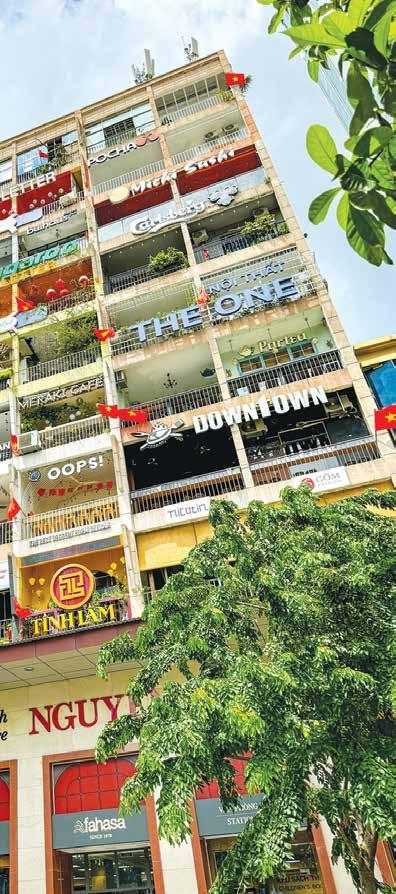
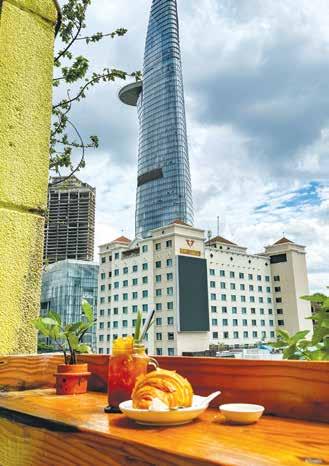
THE EASIEST WAY AROUND:
» Grab Ride Magic and Pedestrian Perks
One of the things that made this trip so smooth was how easy it was to get around. In Ho Chi Minh City, the Grab app (https://www.grab.com/vn/) is my true friend! With just a tap, you can zip across the city to your next destination – no need to haggle with taxi drivers or dealing with complicated bus routes. It’s the ultimate travel hack for a stress-free adventure.
And when it comes to walking, Ho Chi Minh City’s central areas are pedestrian-friendly, especially around Nguyen Hue Walking Street, where it’s easy to take your time to explore and soak in the vibes of the city without worrying much about dealing with traffic.
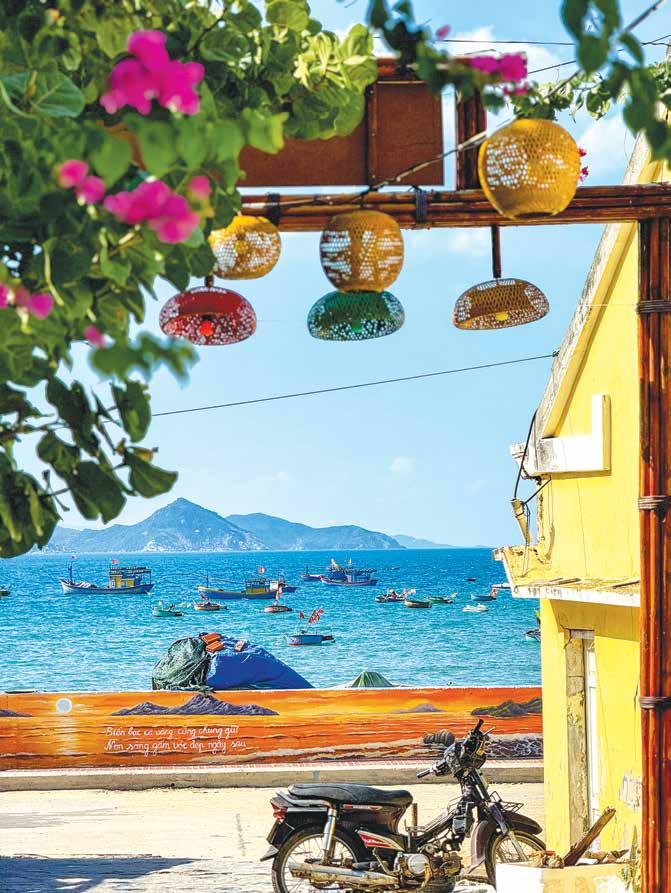
» Nhon Ly Village & Eo Gio
I started my Quy Nhon adventure by visiting Nhon Ly Village, a quiet fishing village where the pace of life feels slower. The locals are incredibly friendly, and I even got to watch some of them repairing their fishing nets – talk about authentic experience!
Not too far from the village is Eo Gio, a breathtaking coastal spot with jagged cliffs and turquoise waters. There’s a scenic walking path where you can take in all the beauty. I could’ve spent hours just admiring the waves crashing against the rocks.
» Ong Nui Temple Serenity
My second day in Quy Nhon was all about spirituality. I visited the Ong Nui Temple, an ancient temple perched on a hilltop with panoramic views of the surrounding countryside. This site is peaceful, serene, and a great place for some quiet reflection.
Top: Eo Gio seems to be Vietnam’s answer to the Amalfi Coast, minus the crowd. Bottom: Wander around the Saigon Post Office to soak in the nostalgic charm, especially the grand arches and vintage detailing.
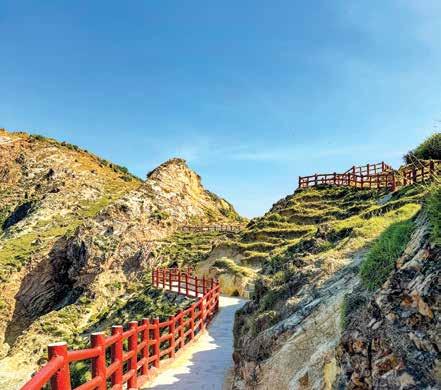

CONCLUSION:
» Vietnam is Where you Can Find the Perfect Balance
The seven-day itinerary I have outlined earlier includes the best of both worlds: the energy and excitement of Ho Chi Minh City paired with the serene beaches and laid-back lifestyle of Quy Nhon. It’s an ideal blend of city adventure and coastal relaxation that every traveller needs to experience.
Whether you’re an art enthusiast, fashion shopper, foodie, or beach lover, Vietnam delivers on every level. So, pack your bags, download the Grab app, and get ready to explore this incredible country!
Gaya Travel Magazine expresses gratitude towards Vietnam National Authority of Tourism (https://vietnam.travel/), Ho Chi Minh Department of Tourism (https://www.visithcmc.vn/), and Wanderlust Tips (https://wanderlusttips.asia/) for making the writer’s trip to Vietnam possible and smooth-sailing.
Yogyakarta, an ancient city where the veil between the mystical and the real is nothing but a thin paper. Here, every stone, every corner whispers the stories of the past, echoing the history of the never forgotten gods. Jogja, as it is affectionately called, is a place where time bends, where myths intertwine with daily life, and where every step taken feels like venturing into an enchanting tale.
Recently, I had the opportunity to represent Gaya Travel Magazine to witness the spectacular Wayang Jogja Night Carnival (WJNC) #9, which is a celebration of Yogyakarta’s independence in the form of a stunning fusion between tradition and modern extravaganza every 7th October. The city was transformed into a vibrant stage, where deities, mythical beings, and local heroes parade under lanterns and firelight. Beyond the visual beauty, the festival is steeped in spiritual energy, with stories of spirits joining in from the surrounding mountains and rivers, creating a truly magical experience that embodies the heart of Yogyakarta’s culture and sovereignty.
After witnessing the carnival illuminating the streets with vibrant art and mysticism, my experience did not stop there. Thanks to Yogyakarta City Tourism Office, I had the chance to venture beyond the surface and discover the magical side of Jogja, which you can follow in the following paragraphs, and even use as ideas on what to see when you are in Yogyakarta.

Clockwise from above: Likened to a symphony of stone, Candi Prambanan stands as a breathtaking testament to ancient Javanese architecture, where every temple tells a tale of devotion and artistry; During twilight, the captivating performances at the Kraton (Royal Palace) echo with the themes of good and evil, weaving the rich tapestry of Javanese culture and history (Photo by Kraton Jogja on Facebook); The enchanting atmosphere of the Kraton at twilight invites you to explore the mystical legends and vibrant Wayang Wong shows that embody Javanese values. (Photo by Kraton Jogja on Facebook); When in Yogyakarta, dressing up in batik isn’t just a choice, it is a heartfelt embrace of a culture that welcomes you with open arms.
» The Ethereal Temple Complex
My journey started at the ruins of Candi Prambanan (Prambanan Temple), where it feels like stepping into a storybook. Every stone tells accounts of love and betrayal. I could almost sense the pain of Roro Jonggrang, who set an impossible task for Prince Bandung Bondowoso, to escape his affection.
As I wondered through the intricately carved halls, the legend unfolds. Bandung, aided by dark spirits, nearly completed a thousand temples in one night. Just before dawn, Roro Jonggrang deceived the spirits, sealing her fate. Enraged, the prince cursed her, transforming her into a stone statue. Her sorrow is forever trapped within the walls of this temple.
Gazing at the detailed carvings and statues, I felt the weight of emotions etched into every corner. Among these echoes of ancient legends, I become part of the story, immersed in the magic of Prambanan.


» Journey Through Yogyakarta’s Royal Palace
As dusk settles over Yogyakarta, the wistful atmosphere of the royal palace (Kraton) beckons travellers to explore its rich history and culture. It’s a place filled with tradition, where legends of mystical encounters add an air of curiosity to your visit.
At the heart of the Kraton’s offerings are the captivating performances, like the Wayang Wong shows. These performances aren’t just entertainment; they serve as vibrant expressions of Javanese values. It showcases themes of loyalty, love and the eternal struggle between good and evil. Attending one of these shows is a unique experience to connect with the cultural essence of the region, as you witness history unfold before your eyes.
The current exhibition being held at the Kraton, Parama Iswari Mahasakti, adds another layer of significance. It focuses on the role of women in society through traditional narratives. Many of these performances and exhibitions are held annually during significant events. So, whether you’re a history buff or just looking for an unforgettable experience, the Kraton is a must-visit destination that promises to leave you fascinated.


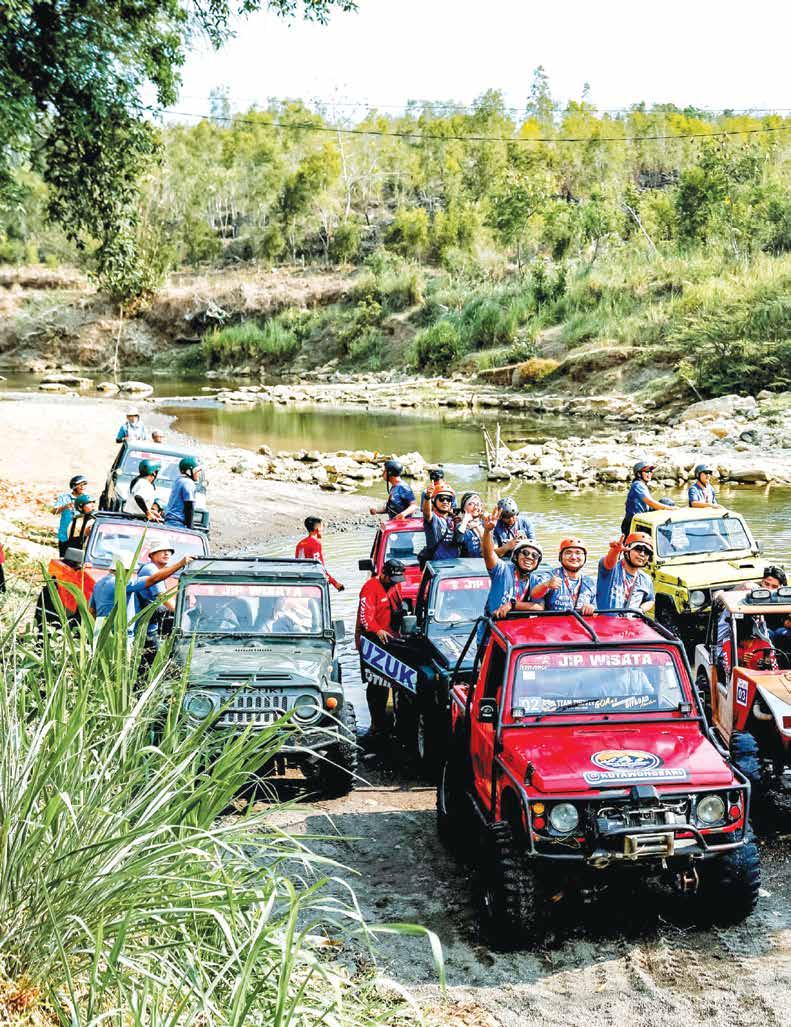


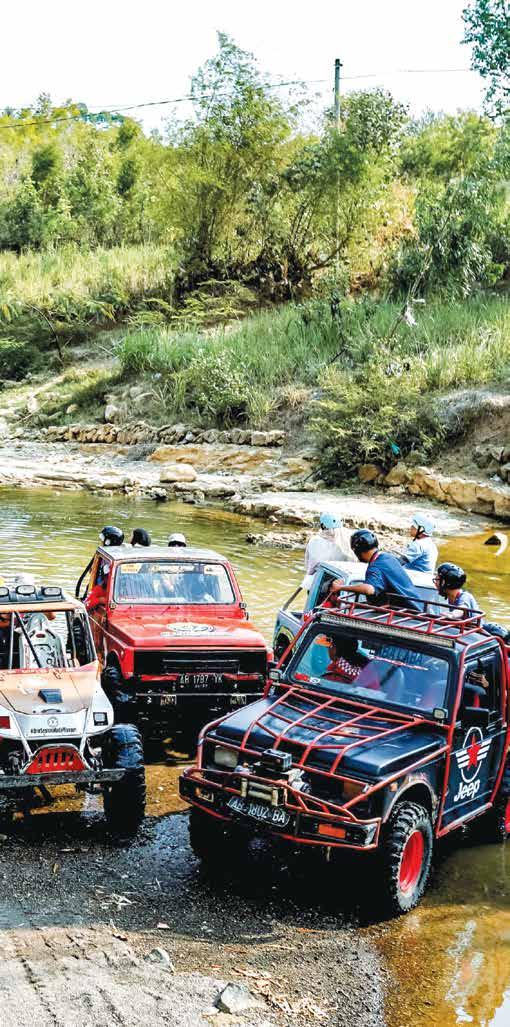
This spread, left: Every turn at Goa Pindul reveals striking views as you weave through lush foliage and majestic cliffs.
Inset: As you navigate the rugged terrain, take a moment to appreciate the breathtaking surroundings limestone cliffs and lush greenery that define the spectacular landscape of Goa Pindul.
Goa Pindul, just a stone’s throw from Yogyakarta, is a fantastic spot for those seeking an exhilarating day out. The ride is not just about the thrill; it is the chance to absorb breathtaking scenery. You’ll navigate through a landscape dotted with limestone cliffs and lush greenery, the perfect backdrop for an unforgettable adventure.
As the jeep rolls deeper into the countryside, the real magic unfolds. The winding roads meander through quaint villages, giving glimpses of local life, with children waving and ripening paddy fields glistening under the sun. The adventure heightens as you follow the river’s edge, where the rush of water adds to the pulse of excitement. Just when you think the ride can’t get any more thrilling, steep climbs and sudden drops jolt you into strongly gripping the seat, reminding you that you are truly living this wild experience.
» A Walk in the Past
You can’t visit a place as steeped in history as Yogyakarta and not embrace its traditional attire. In Javanese culture, the clothing is more than just fabric; it is a living symbol of the Javanese heritage, with batik being the most renowned.
When you walk through the bustling streets of Yogyakarta dressed in these garments, you’re not just a visitor, you become a part of the local narrative. Locals greet you with a sense of recognition, as if acknowledging your respect for their tradition.
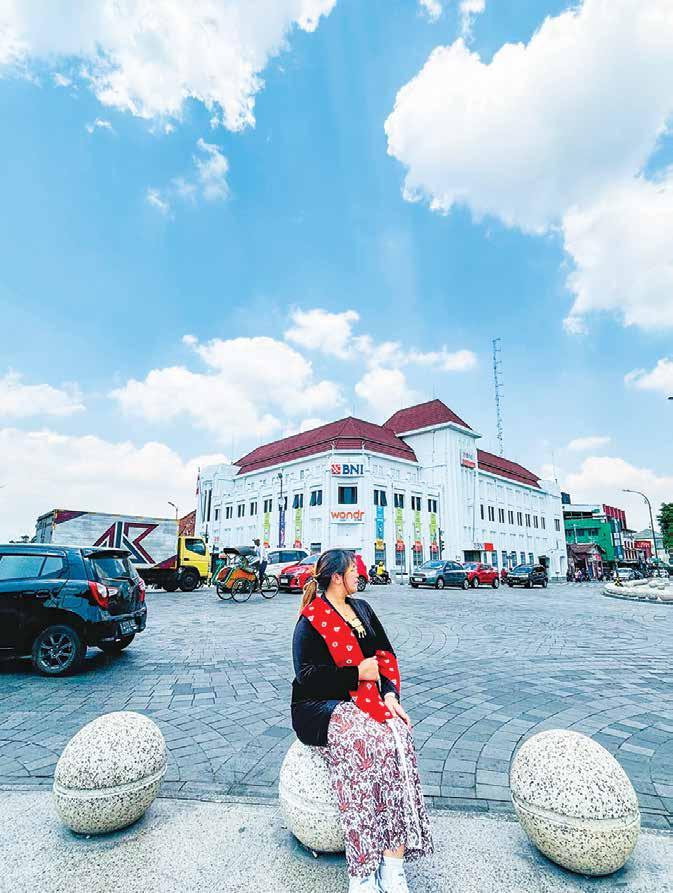
The process of creating these beautiful fabrics via batik-painting is an art form in itself. Every piece of fabric is crafted by hand, using wax and dyes in a labour-intensive process that requires both patience and creativity. By wearing and participating in the creation of batik, I managed to experience firsthand the cultural pride that runs through the threads of every piece of Javanese clothing. It’s more than just fashion –it is a way to walk in the footsteps of history.
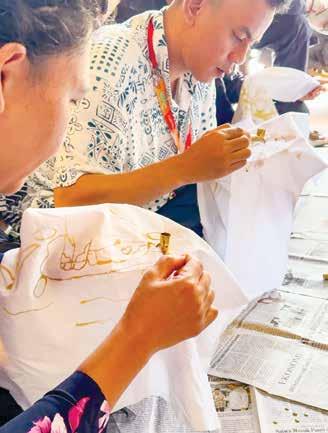
Clockwise from above: Each piece of
through its
a
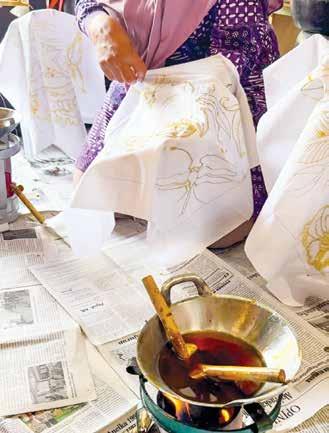
reflecting the artistry and history of
clothing:
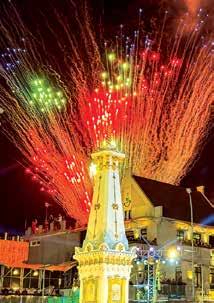
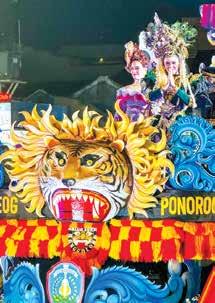
» Where Myths Are Alive Yogyakarta is more than a city: it is a realm where fantasy and reality blurs. From the towering spires of Prambanan to the adventurous depths of Goa Pindul, and from the royal halls of the Kraton to the glowing streets of Yogyakarta during WJNC, Jogja is the place where stories come to life. Here, every legendary character has never truly left, and every visitor becomes a part of the living tale.
So, if you seek adventure, magic, and a glimpse into a world where the impossible is real, Jogja is THE PLACE. But tread lightly, because in this land, even the smallest stone holds the key to an ancient lore, and the winds may carry you into a story that is yet to be written.
Gaya Travel Magazine team extends its heartfelt gratitude to Yogyakarta City Tourism Office for making the writer’s trip to Yogyakarta possible and smoothsailing.



Putrajaya – the Malaysian government’s federal administrative centre – mesmerises anybody who sets foot in the city since it peacefully nestles amidst natural tropical surroundings. Easily connected by roads and rails from Kuala Lumpur International Airport (KLIA) and the Greater Kuala Lumpur/Klang Valley region, this incredibly well-planned city beckons all from near and far, especially when it is also the destination for national and world-class events, particularly relating to culture, recreation and lifestyle.
A model of Malaysian modern urban planning, Putrajaya’s skyline is a work of art. Follow along Putrajaya Boulevard to admire the iconic Putrajaya International Convention Centre, Putrajaya Corporation, Palace of Justice, Masjid Tuanku Mizan Zainal Abidin (Iron Mosque),


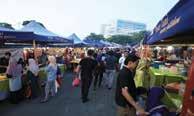
Masjid Putra, and Perdana Putra, which houses the Prime Minister’s Office.
The bridges of Putrajaya are also visual feasts, whereby each of them has its own unique charm, from the futuristic Seri Wawasan Bridge to the romantic European flair of Seri Gemilang. At night, the lights transform these bridges into stunning showpieces.
Though Putrajaya is replete with manmade wonders, it is not called the garden city for nothing. The city has 13 metropolitan parks; the mother of them is the Putrajaya Botanical Garden, home to more than 700 species of flora from around the world. Take a leisurely stroll down Canna Walk, Floral Steps, or Hibiscus Walk, and culminate at the Moroccan Pavilion, which transports you to the imperial cities of Fez, Meknes, Rabat, and Marrakech. You could also feel transported to China when stepping into the ChinaMalaysia Friendship Garden, a serene oasis with traditional pavilions, weeping willows, and ancient Qilin statues inspired by Lingnan gardens. Those who love to jog or cycle should do so in the English-inspired and picturesque Saujana Hijau Park that has well-kept pathways, shady pavilions, and reliable facilities. Next, channel your inner cowboy (or cowgirl) with therapeutic
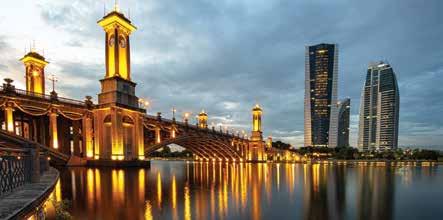

horse-riding sessions at Putrajaya Equestrian Park or tuck into delicious comestibles at Ekues Cabin Cafe while watching the majestic creatures. Come nighttime, immerse yourself within the dream-like illuminated landscape of Putra Perdana Secret Garden.
But greenery would not be able to survive without water – the source of life – and Putrajaya has that in abundance. To understand how water makes its way to the city, proceed to Putrajaya Wetlands Park, a crown jewel of Putrajaya, to uncover the secrets of this vital ecosystem at the Nature Interpretive Centre. Don’t forget your binoculars for fantastic birdwatching and wildlife-spotting too. Afterwards, check out the edutainment theme park, Wetland Studios Putrajaya, which brings nature to life in the form of mechanised replicas of creatures like dinosaurs, mammoths, and giant insects, including an LED-lit magic tree reminiscent of Avatar’s Tree of Souls. Get some shut-eye and spend the night at Glamping @ Wetland Putrajaya for an extraordinary camping experience; apart from cosy tents, challenge yourself at the adventure park, ATV or try your hand at archery. When the stars come out, get ready for a buffet barbecue dinner, spectacular fire show, and karaoke showdown.
The water from the wetland feeds into Putrajaya Lake - a 650-hectare man-made lake

and a UNESCO ecohydrology site. You can sail on either a sleek yacht or a traditional wooden perahu named Dondang Sayang courtesy of Cruise Tasik Putrajaya to appreciate Putrajaya’s landmarks from a different perspective. For more active pursuits, rent a kayak or a bike from the Putrajaya Lake Recreation Centre Further down the lake, sink your toes into the sand at Floria Putrajaya’s newest attraction, Floria Beach, with its 100-metre beachfront, water fountains, and cosy seating areas.
As you explore the lake and its banks, stop by at Souq Putrajaya to check out Putrajaya Story Gallery, an interactive and educational exhibition gallery complete with dioramas, mural paintings, and 3D exhibitions regarding Putrajaya’s rich history and landmarks. Next door, Chocolate Souq Shoppe, Klang Valley’s largest chocolate store, awaits. Here, you can snap pictures of the fantasy wonderland set within the store, and purchase local and international chocolate brands. For more shopping choices, head to Alamanda Shopping Centre that carries over 100 exclusive brands and serves as a one-stop destination for fashion, accessories, books, and home décor.

culinary wonders of Putrajaya at the Food Truck Hotspots in Precinct 2 and Precinct 14 that serve delicious quick bites and authentic local delicacies. Craving for international fare like Thai or Middle Eastern cuisine? If so, the gastronomic, waterfront hub that is Ayer@8 and the Diplomatic Enclave Commercial Centre in Precinct 15 have you covered. These culinary hot spots are teeming with visitors especially on Friday nights, throughout weekends and public holidays. Other must-visits are the food courts in Precinct 8, Precinct 9, Precinct 11, and Precinct 16 that boast stalls selling an array of Malaysian classics and Western dishes, including nasi kerabu and nasi dagang from Terengganu, Johor mee rebus, Penang char kuey teow, nasi lemak, apam balik, and even kacang pool
So come to Putrajaya today, where you can discover myriads of nature, excitement, challenge, flavours, culture, serenity, and peace, leaving you truly mesmerised…


Malaysia is a culinary destination, and Putrajaya lives up to that expectation. From ready-to-eat dishes to fresh produce, feast your way through Putrajaya Farmers Market open on Tuesdays and Fridays. Foodies should also explore the Visit www.ppj.gov.my/en for more info.


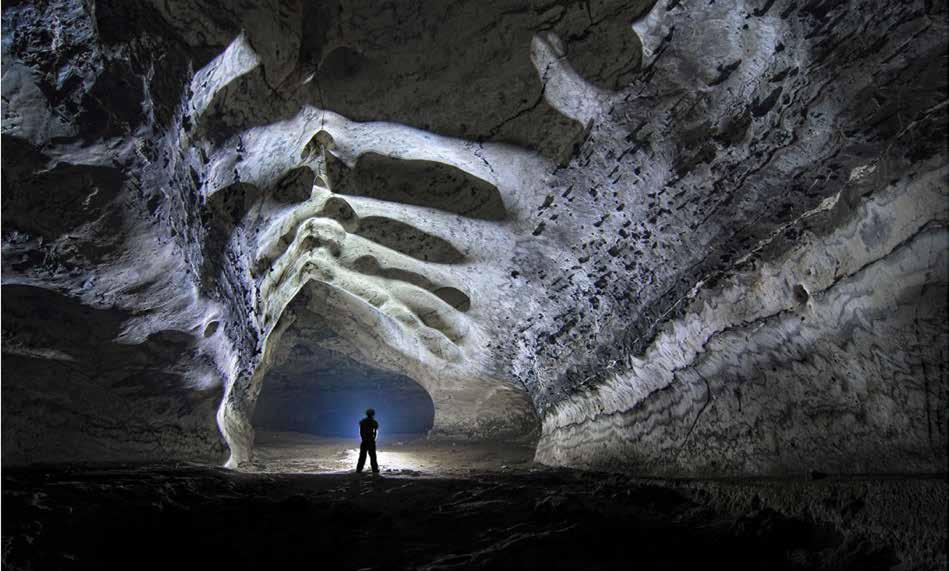
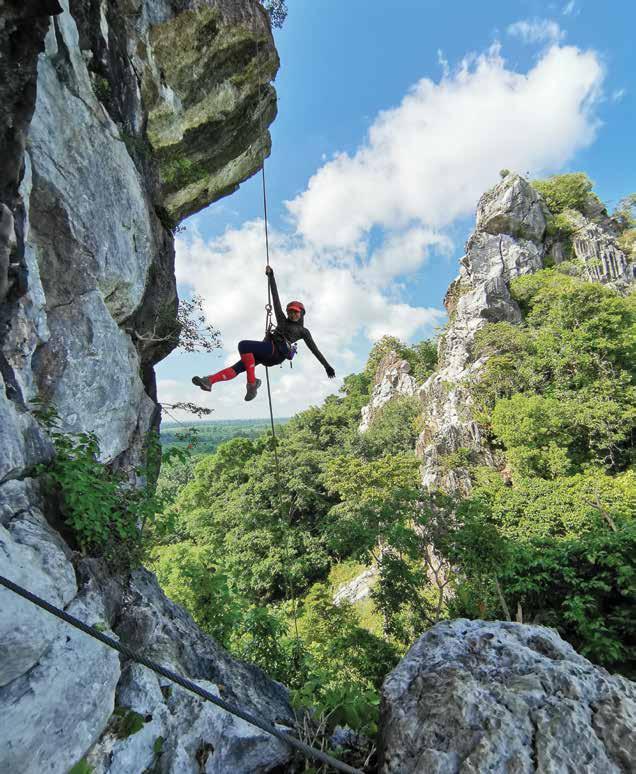







Kuantan, the Pahang state capital, is located along the Kuantan River, where Kuantan 188 rises above historic streets lined with shops and restaurants ranging from those serving traditional delights to more contemporary offerings.
Pahang, blessed with some 210 kilometers of shoreline, is the perfect playground for seekers of the sun, sands and seas. Visitors are definitely spoilt for choices as the coastline is dotted by numerous stretches of white sandy beaches that are ever-ready to play host even to the most discerning.

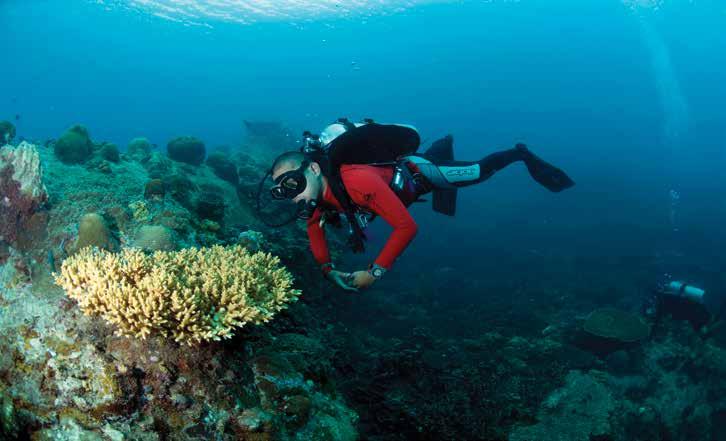

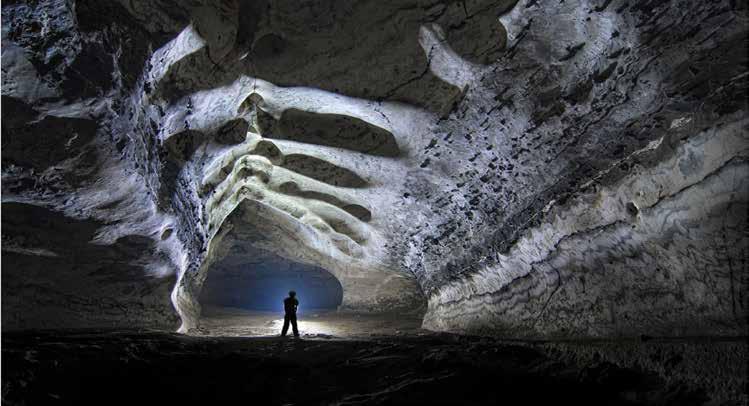
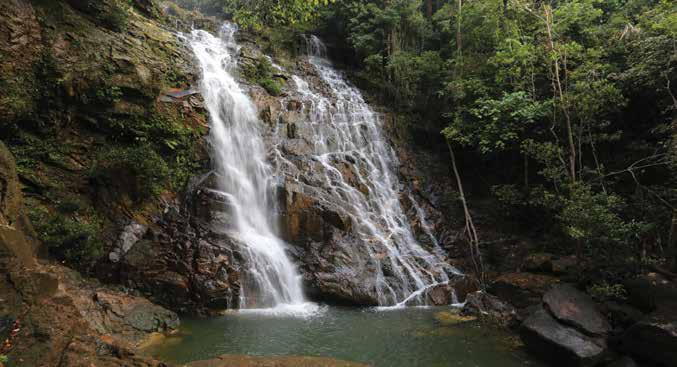

Adventurous travellers can enjoy a wide range of activities across the state. Taman Negara is a vast expanse of lowland rainforest with forest trails, river journeys, caving and mountain climbing to offer. Waterbirds can be sighted at Tasik Chini, a UNESCO Biosphere Reserve, and Tasik Bera, a globally significant Ramsar site. Waterfalls and rivers such as Chamang, Berembun, Lata Jarum, Lubuk Yu and Seri Mahkota attract swimmers and picnickers. Rock and mountain climbers travel to Pahang to ascend peaks and outcrops at Paya Gunung near Jerantut, Bukit Seladang and Gunung Tahan.

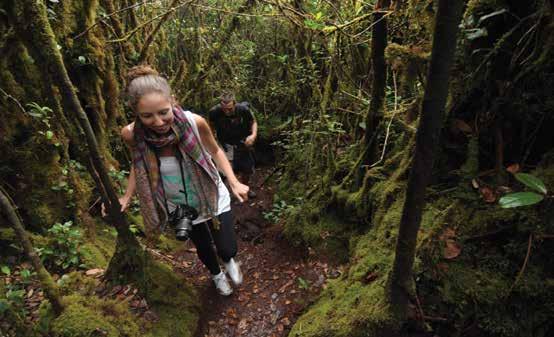


Pahang’s climate is tropical with warm and humid conditions and temperatures ranging from 21oC to 33oC although the highlands are lower at 16oC to 23oC. Monsoonal winds from November to February result in an annual rainfall that generally exceeds 200 cm. However, in hill resorts like the Cameron Highlands, Fraser’s Hill, Genting Highlands and Bukit Tinggi, lower temperatures attract tourists who enjoy a range of activities such as walking, cycling and golfing in the cool mountain air.



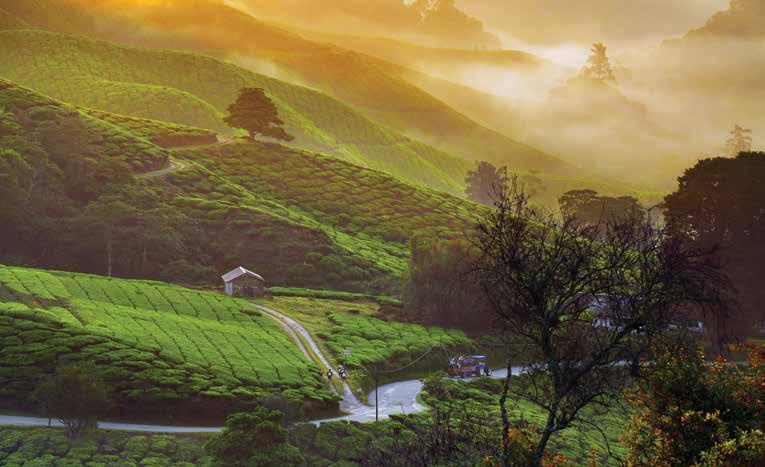





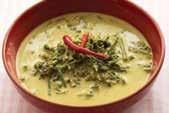

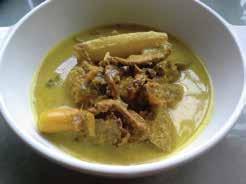

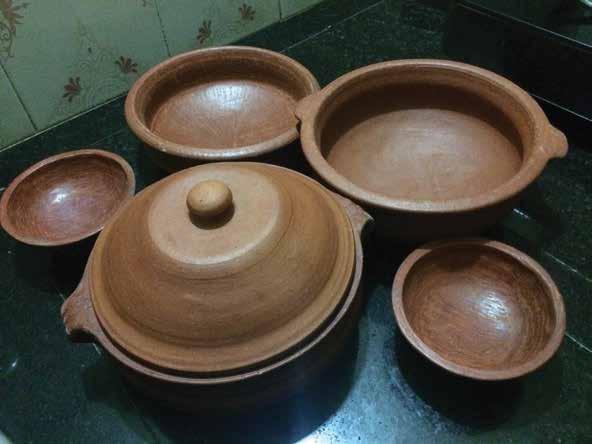
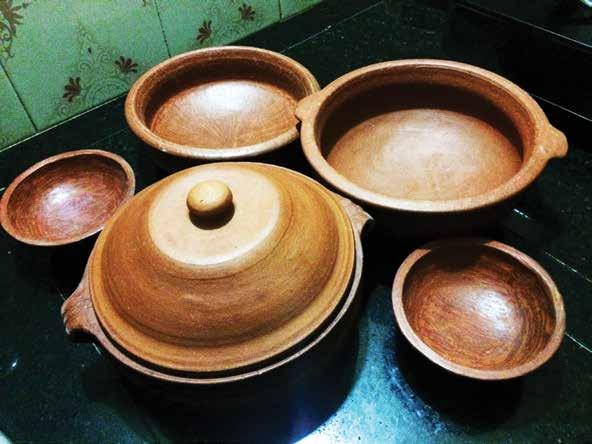





















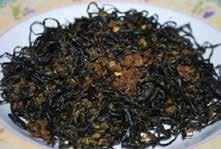




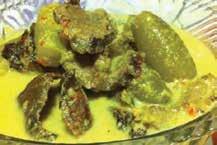


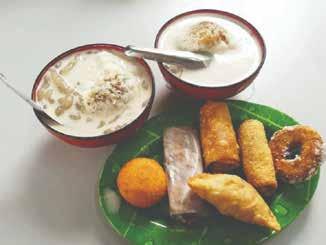

Ever heard of a state where you can wander through a royal town one day, and conquer a leaning tower the next? Perak in Malaysia is THAT state, and its four unique towns in particular — Kuala Kangsar, Teluk Intan, Slim River, and Tanjong Malim — are teeming with charm, rich history, thrilling adventure, and food scenes to match, though they aren’t always found on many travellers’ radars.
Whether you’re an adventurer, history buff, or foodie, the places listed in this article are bound to leave you with stories to tell and experiences to treasure. Get ready to explore them all!
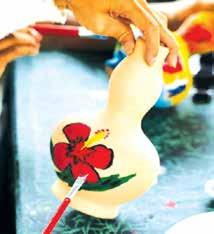
KUALA KANGSAR
» Kampung Warisan Budaya, Kuala Kangsar www.dvillagevb.com/our_hotel
Step back in time and be mesmerised by the grandeur of Malay heritage at Kampung Warisan Budaya. Founded by the visionary architect Mr. Haji Mior Zawari bin Haji Kassan, this familyrun retreat celebrates the splendour of traditional Malay architecture. With 11 unique houses that serve as guests’ accommodation, each of them is inspired by different architectural styles found throughout Peninsular Malaysia.
All houses boast a living room and kitchen, making it a perfect fit for families or travelling groups. You might even witness a train whizzing by, adding a nostalgic touch to your stay. While the rates may seem a tad on the higher side, starting at MYR800, they’re well worth it for the unique experience and the ability to accommodate up to eight people.
But it’s not just about staying the night here. The on-site mini gallery, brimming with antiques ranging from old musical instruments to everyday items with stories waiting to be told, transports visitors to the rich cultural roots of Malaysians. And if you’re visiting on the weekend, you’re in for a
treat as cultural performances bring the place to life. Kampung Warisan Budaya is open for day visitors and overnight guests.
» KZ Kraf Labu Sayong, Kuala Kangsar linktr.ee/kzkraf
In the mood to get your hands a little dirty? Head over to KZ Kraf Labu Sayong, where the traditional art of making labu sayong — the iconic clay water pitcher of Perak — takes centre stage. Founded by the passionate Mr. Mohd Parureb, who has spent nearly 30 years perfecting the craft, this workshop offers visitors an interactive experience. Here, you can watch skilled artisans in action and even try your hand at painting or colouring your own labu sayong. A perfect activity for both adults and children alike, with rates ranging from MYR25 to MYR55.
And if that’s not enough to whet your creative appetite, be sure to explore Mr. Parureb’s charming gallery, where you’ll discover the fascinating process of making batik motifs using a rare clay ‘resist’ technique, believed to have originated from India.
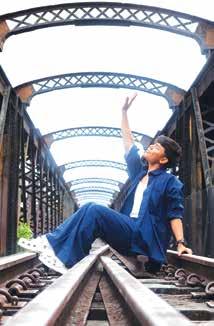

» Victoria Bridge, Kuala Kangsar Built in 1900, Victoria Bridge is one of the oldest railway bridges in Malaysia and has stood the test of time. Originally designed to transport coal and natural resources across the Perak River, this single-track railway bridge was operational for over a century before its retirement in 2002. Now, it stands proudly as a National Heritage site.
Walking along this historical bridge, you can almost imagine the bustling locomotives and industrial workers from the 1890s. It’s a must-visit for history buffs and Instagrammers alike — those panoramic shots of the bridge over the Perak River are hard to beat.
» Dusun d’Kongso, Kuala Kangsar FB: dusundkongso
If you fancy swapping your mobile signal for the sounds of nature, Dusun d’Kongso is the place to unplug. Surrounded by lush greenery, this riverfront retreat offers cosy chalets and camping facilities. You can BBQ, fish, try your hand at archery, or even belt out your favourite tunes during a karaoke session. Packages come with delicious homecooked meals that will leave you feeling both relaxed and well-fed.
» Wildrock, Kuala Kangsar
FB: wildrockcampsiteperak
Looking for a riverside camping experience but with a touch of comfort? Wildrock has got you covered. With tents equipped with proper beds and portable fans, this spot is perfect for those who want to get close to nature without completely roughing it. Rates range from MYR140 to MYR200 per unit, and trust us, you’ll want to pre-order Wildrock’s nasi lemak for breakfast, which is the perfect start to your day of riverside relaxation.
» Ogersland, Kuala Kangsar
Call or Whatsapp: +6 012 530 3055
For the purist camper, Ogers Land offers the real deal: 16 well-maintained tent sites (MYR60 to MYR90 per night), serene surroundings, and fishing ponds where you can try your luck catching tilapia, Hoven’s carp, or baung. And if you’re visiting during fruit season, you’ll be treated to an endless supply of fresh local fruits. A truly back-to-basics experience, but with just enough luxury to keep you comfortable.
» Rumah Atap Kuning, Kuala Kangsar
linktr.ee/RumahAtapKuning
Nestled in a traditional wooden house overlooking picturesque paddy fields, this restaurant specialises in hearty, home-cooked Malay cuisine. Don’t miss the signature dish: daging salai masak lemak, a heavenly dish made from slow-cooked smoked meat in creamy coconut milk. The smoky flavour comes from the coconut husks used to fuel the fire when cooking the dish — a beautiful nod to traditional techniques. The lunch package starts at MYR170, and since the restaurant opens only on weekends, prior booking is a must.

Fun fact: even the current Sultan of Pahang and his wife Tengku Ampuan Pahang have dined here, promising you an unforgettable dining experience!
» Sajian Panorama, Kuala Kangsar
Tiktok : @sajianpanorama
If dining with a view is more your style, Sajian Panorama offers a relaxing meal by the Perak River. Specialising in traditional Malay dishes, the restaurant’s laid-back ambience and friendly service make it an excellent spot for a leisurely lunch. And if you’re travelling with children, they’ll love the playground on-site. A perfect pit stop to refuel after a day of sightseeing.
» Leaning Tower, Teluk Intan
What do Pisa and Teluk Intan have in common? Both are home to leaning towers! The Leaning Tower of Teluk Intan, a national heritage site, stands as a testament to the town’s rich history and architectural novelty. Built in 1885 by a contractor named Leong Choon Chong, this pagoda-styled tower was originally to store water during the dry season and for fire emergencies. However, due to its construction on soft ground, the tower started leaning slightly to the southwest.
Though the tower looks like an eight-storey marvel from the outside, it actually has three storeys — talk about an optical illusion! And don’t forget to listen out for the centuryold clock, crafted by none other than the prestigious London clock and watchmaker JW Benson of Ludgate Hill, which still chimes to this day.
» River Cruise, Teluk Intan rivercruisetelukintan.weebly.com
Get on an enchanting hour-long river cruise through the heart of Teluk Intan, guided by a knowledgeable local who brings the area’s rich history to life. As you glide along, keep your eyes peeled for traditional boat-building yards; Teluk Intan boasts a vibrant boatmaking industry that’s a marvel to witness!
The journey takes you through serene mangroves, where the lush greenery whispers secrets of the ecosystem. But the real showstopper is Pulau Bangau, an islet that serves as a sanctuary for over 30,000 birds. If you’re fortunate, you might even spot migratory species that have journeyed from as far away as India and Thailand, making this island their breeding ground. Do consider booking for the late evening session. Watching the storks and other birds returning to their nests at dusk is quite a sight, seems to be straight out of a nature documentary!
» Dē MOCCIS Lake Resort
Teluk Intan
FB: MOCCISLakeResort
Dē MOCCIS Lake Resort is a family favourite, and it’s easy to see why. The villas are spacious, the surroundings are serene, and the list of activities offered is impressively long. Fancy something a bit adventurous? Grab a kayak, try your hand at fishing, or rev up an ATV for an off-road adventure. There is even a mini zoo where you can get up close



with spotted deer, ostriches, Bengal cats, and other adorable critters. And if you were bringing the little ones, they would love the mini swimming pool and the chance to bike around the resort’s scenic grounds.
» Kafe Rumah, Teluk Intan linktr.ee/rumahkafetelukintan
Tucked inside a traditional Malay house and decorated with vintage flair, this cosy café feels like stepping into a nostalgic time capsule. With classic tunes spinning on a record player and generous portions of mouthwatering food, it’s the perfect spot to relax and refuel.
The café’s signature Nasi Hujan Panas with Ayam Merah (MYR15.90) is a must-try, alongside the deliciously comforting Penjan Ubi Kayu (MYR5.99). Pair that with the café’s warm ambience, and you’ve got yourself a meal to remember.
» Anson Ikan Bakar, Teluk Intan IG: anson_ikan_bakar_batu_8
Do you know that Melaka records the If you love seafood, then head over to Anson Ikan Bakar. Specialising in grilled fish and a host of Thai-inspired seafood delicacies, this riverside eatery offers a feast for both your stomach and your eyes. With a menu that is as extensive as it is delicious, and prices that won’t break the bank, dining here is an ideal way to wrap up your Teluk Intan adventure.



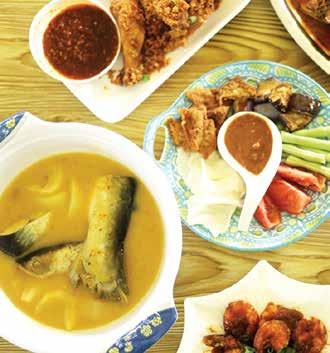
Next
» PROJEKOUTDOOR, Slim River projekoutdoor.my
Based in Kampung Ulu Slim, this outdoor adventure company has been delivering adrenaline-pumping experiences since 2016. The crew comprises adventure experts, and they ensure you that you will have the time of your life while remaining safe. If you’ve ever dreamt of speeding through jungle trails on an all-terrain vehicle (ATV) or braving the rapids, this is the place to tick those off your bucket list.
We decided to give the two-hour ATV session a spin, and what a ride it was! Imagine zipping through rugged terrain, feeling every bump and splash as you power through streams and up hilly tracks. The excitement is off the charts!
» Carebins Tasik YDP, Slim River Call or Whatsapp: +6 013 567 1108 / +6 012 231 5831
Head over to Carebins Tasik YDP for a night of quiet respite. This unique lodging offers container-styled rooms with a cosy charm. But the best part? These rooms overlook a serene lake. Trust us, during sunset, this place transforms into an absolute dream, bathed in warm orange hues as the sun dips behind the horizon.
While there’s no television set in the room (gasp!), it’s actually a blessing in disguise: the quiet is perfect for reconnecting with nature or even with yourself. And when hunger hits, you’re just a short hop away from plenty of


» Tanjong Malim Street Art, Tanjong Malim
Tucked along the charming streets of this small town, the vibrant murals are a feast for the eyes and the
perfect backdrop for your Instagram feed. From whimsical characters to thought-provoking artwork, each mural tells a different story, reflecting the town’s rich history and cultural heritage. Whether you’re capturing the intricate details for your photography portfolio or simply snapping a fun selfie with friends, the colourful street art will leave you smiling.
» Sarang Art Hub, Tanjong Malim FB: sarangarthub
Sarang Art Hub isn’t just any restaurant; it’s a haven for the creatively inclined and food lovers alike. Established in 2015 by the legendary Malaysian film director the late Mamat Khalid, Sarang Art Hub has transformed from a forgotten guesthouse into a vibrant art space. And if you are a fan of Mamat Khalid’s iconic films, prepare to be delighted because scattered around the café are the original props from his movies, making it a mini museum for Malaysian cinema buffs.
Oh, and the food? Simply delicious! From local favourites to fusion dishes, Sarang Art Hub’s menu is as eclectic as its decor. So, whether you’re here for the art, the nostalgic cinema, or just a plate of something tasty, you’re guaranteed to leave with your belly and your heart full.
Gaya Travel Magazine team members express our heartfelt gratitude to Tourism Perak (www. tourismperakmalaysia.com/) for making the coverage of the four towns possible.

The Rainforest World Music Festival (RWMF) 2024 opened with an explosion of energy and creativity, setting an electrifying tone for this year’s theme, “Evolution”.
This year’s festival, which ran from 28 until 30 June in Kuching, Malaysia, is not just a musical event; it’s a vibrant tapestry of culture, tradition and environmental consciousness.
With a stellar lineup including Grammy Award winner Kitaro and the awardwinning Malaysian singer Dato’ Zainalabidin, the festival showcased 20 acts with 68 international and 63 local musicians. The diversity was astounding, and the performances were mesmerising. Each artist brought his or her unique sound, making every moment unforgettable. The festival’s theme, “Evolution”, was evident throughout, blending sustainability, responsible tourism, and cultural exchange in perfect harmony.
This year, RWMF welcomed over 26,000 attendees, breaking records and setting the bar high. The festival is not just about celebrating music but also about fostering a sustainable future. With initiatives like banning single-use plastics and providing free shuttle buses to reduce carbon emissions, the festival is paving the way for environmental stewardship.
In his speech during the launch of RWMF, Sarawak Minister for Tourism, Creative Industry, and Performing Arts, YB Dato Sri Abdul Karim Rahman Hamzah, perfectly captured the festival’s essence: “The Rainforest World Music Festival 2024 transcends its role as a mere music festival. It embodies the theme of ‘Evolution,’ where sustainability, responsible tourism, and cultural exchange blend in perfect harmony.”

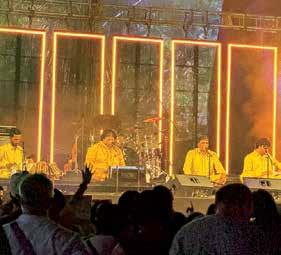

I was fortunate enough to be five deep into the festival’s rich offerings. Beyond the awe-inspiring music, there were engaging workshops, cultural exchanges, and activities that materialises the festival’s commitments into a holistic experience. I explored traditional houses, wore traditional clothes, and participated in various workshops, enriching my understanding and appreciation of the event, as well as being immersed in what Sarawak has to offer.
Looking ahead, the Rainforest World Music Festival is already locked in for next year from 20 until 22 June 2025. Here’s to more incredible music, meaningful connections, and a continued commitment to celebrating and preserving the world’s diverse cultures amidst Sarawak’s pristine rainforest!
The Gaya Travel Magazine team extends its heartfelt thanks to the Sarawak Tourism Board for inviting the writer to attend the Rainforest World Music Festival 2024.
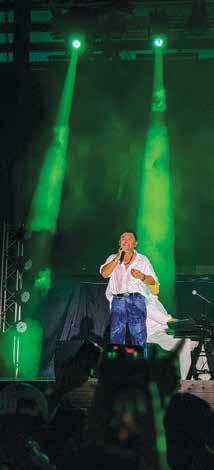
“Take only memories, leave only footprints.”
I’ve heard this saying countless times, but it never resonated more deeply with me than when I found myself standing amidst the raw beauty of Sarawak. Here, life feels preserved in a way that’s becoming increasingly rare—a lush, living testament to the harmony between nature and culture. There comes a point when the shiny allure of malls and crowded city streets fades, leaving you craving something more primal, more unfiltered, more real. And in Sarawak, I found exactly that.

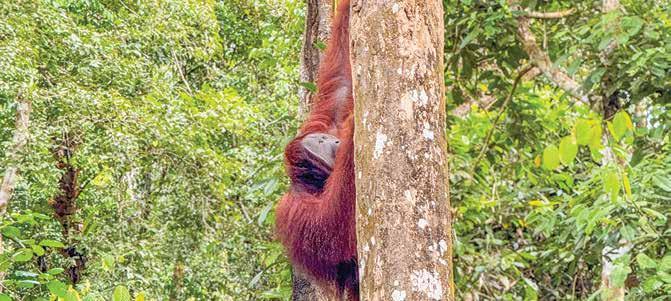
» Semenggoh Wildlife Centre
My journey began at the Semenggoh Wildlife Centre, a place that feels as though it exists in a pocket of time where nature reigns supreme. The air was thick with the scent of damp earth—a mix of moss, greenery, and the teeming life of the jungle all around me. Just 30 minutes from Kuching, this sanctuary doesn’t feel like a typical tourist attraction; it feels sacred, a refuge for one of the most magnificent creatures I’ve ever encountered: the orangutan.
Almost like a dream, they appeared right in front of me. Swinging effortlessly through the treetops, the orangutans moved with a grace that defied their power. Their soulful eyes, their expressive faces—they seemed to hold a mirror up to the fragility and beauty of our world. It wasn’t just an encounter with wildlife; it was a poignant reminder of how vital it is to protect these precious creatures and the sanctuaries that safeguard their future. Places like Semenggoh are not just tourist destinations; they are havens of hope.
STEPPING INTO THE PAST:
» Rumah Panjang Annah Rais
Visiting Rumah Panjang Annah Rais felt like walking back in time. This Bidayuh longhouse isn’t just a building—it’s a living testament to the strength, history, and resilience of a people whose cultural roots run deep.
I couldn’t help but wonder—what would it feel like to call this place home? To wake up each morning surrounded by a living history, where every beam of wood, every carved post, whispered the


stories of generations long past. Could I, a traveller from far away, ever truly become part of something so deeply rooted in tradition, or would I always be a visitor, a guest observing from the outside? There was a certain beauty in this distance too—a reverence for a way of life that had endured for centuries.
One of the most profound moments was when I entered a room displaying a collection of skulls—remnants of headhunting expeditions from the past. As someone with a vivid imagination,
I was struck by the weight of their journey and by the strength it must have taken to preserve their culture amidst the relentless march of time.
If there’s one place that every traveller to Sarawak must visit, it’s Rumah Panjang Annah Rais. It offers more than just a glimpse into the past—it provides an immersive, heartfelt connection to the cultural legacy of Sarawak. In this place, history is alive, breathing through every beam, every smile, every welcoming gesture.
This spread, clockwise from top, left: Semenggoh Wildlife Centre was founded in 1975 to rehabilitate wild animals previously kept as illegal pets or found injured in the rainforest; Headhunting in Sarawak was a testament to the tribal warriors’ strength, with severed heads served as trophies; Local teams training for an upcoming regatta; The orangutans spend their entire lives roaming freely within the grounds of Semenggoh Wildlife Centre.
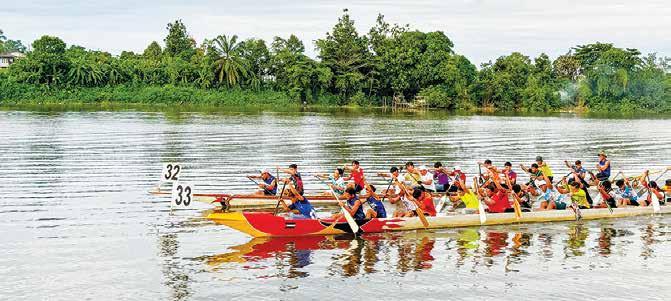
» Paddling Through Semadang River and Hiking Bako National Park
After delving into Sarawak’s rich history, I craved something that would awaken my body and spirit. That’s how I found myself in a kayak, paddling down the serene waterways of the Semadang River. The cool breeze brushed against my skin as I dipped my paddle into the water, the gentle current guiding me through a living, breathing canvas of rainforests and towering trees.
There is something almost hypnotic about the rhythm of paddling—the way each stroke slices through the water, how the river reveals one breathtaking scene after another. Yet, despite the river’s tranquil appearance, it was not without its moments of challenge. The current would occasionally pick up, forcing me to brace myself, heart pounding, as I navigated the twists and turns. It was the perfect balance between nature’s unpredictable beauty and its quiet serenity—a reminder that life, like the river, flows with both ease and resistance.
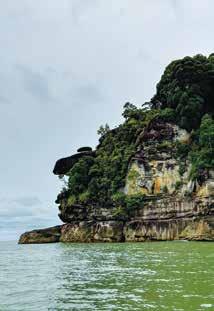

After the peaceful journey down the Semadang River, my thirst for adventure grew, and Bako National Park was the perfect answer. A short 37-kilometre drive from Kuching to Kampung Bako, followed by a quick boat ride, brought me to a world untouched by time. Stepping onto the shore, the jungle immediately came alive—the rustle of leaves, birds calling from the canopy, and the rich scent of nature all around me. It felt like stepping into another realm.
As I wandered through the trails, I spotted Bako’s most iconic resident, the proboscis monkey. Seeing them in person, their long noses and slow, lazy movements, was amazing. I felt a sense of awe, standing so close to these creatures in their natural home. Besides the monkeys, birds flitted through the trees, and I had to stay alert for snakes hiding beneath the undergrowth. It was definitely a humbling reminder that I was just a visitor in this wild, untamed place.
THE MAGIC OF SARAWAK RIVER:
» A Night on the Water
You cannot visit Sarawak without experiencing the famous Sarawak River night cruise in Kuching, which lets you

take in the mesmerising sceneries along the Sarawak River. It’s a perfect finale to an already unforgettable journey. There’s something undeniably magical about the way the city lights shimmer off the water, creating a dazzling reflection that dances beneath the darkening sky. The gentle hum of the boat, the cool night air, and the peaceful rhythm of the river beneath me were the perfect way to end the day.
Before this journey, I never truly resonated with the phrase “YOLO.” I understood the idea of living life to the fullest, but the concept always felt a bit distant, almost superficial. But Sarawak pushed me beyond my comfort zones, both physically and spiritually. It wasn’t just about the thrilling kayak rides or the awe-inspiring wildlife encounters; it was about being immersed in something so authentic, so real, that it forces you to confront your own boundaries and expand them.
I’ve always told myself that I wanted to live fully so that, one day, I would have stories to share with my grandchildren. This journey, this connection with Sarawak, will be a tale I’ll carry with me forever—a story of nature, culture, adventure, and discovery. It’s safe to say that I’ve found Chapter 1.


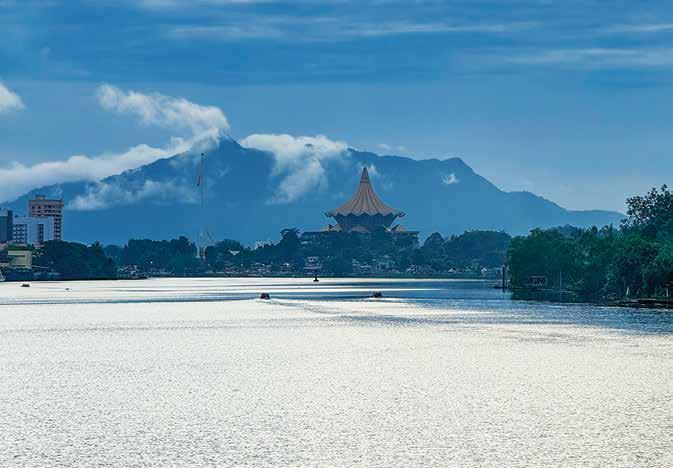

“Journey not just to see the sights, but to feel the heartbeat of a place.”
This sentiment echoed within me as I boarded my AirAsia flight to Sarawak for a trip organised by Tourism Malaysia Sarawak Office (https://www.facebook.com/TourismMalaysiaSarawak) and Sarawak Delta Geopark (https://sarawakforestry.com/sarawak-delta-geopark) in conjunction with Hari Gawai (Harvest Festival) 2024. It was my first time flying back to this state, my birthplace, which my family and I left before I was two years old. Although the idea of returning had always felt distant, the genuine warmth and service from the airline’s staff made the journey more comforting. Little did I know, this trip would become a rediscovery of the land that shaped me in ways I had yet to understand.


BENGOH DAM:
» A Sanctuary of Serenity
My adventure began with the trip to Bengoh Dam, a hidden gem nestling in the heart of Sarawak. The drive from Kuching is mesmerising, with winding roads flanked by dense forests and rolling hills. Each turn reveals new layers of natural beauty, and when I arrived at the dam, a deep sense of peace enveloped me.
It kicked off with a relaxing half-hour boat ride that glided across the water, followed by a one-hour hike, allowing me to soak in the gorgeous scenery. With no cell phone connection along the way, it’s the perfect chance to really reconnect with nature and enjoy some peace and quiet.
The stillness of the water mirrored the lush greenery surrounding it, creating an oasis far removed from daily chaos. It was like stepping into a painting, every stroke crafted by nature. As I hiked through the Bengoh Range, the rhythm of my footsteps on the forest floor felt meditative. Upon nearing the Pe’an and Susung Waterfalls, I recalled my mother’s childhood tales about fairies dwelling beneath clear waters. She’d say that if the water was clear enough to see your feet, it meant that fairies were near. What once seemed like a charming story now felt vividly real, as the mist gently touched my face, and the enchanting scenery made me understand the magic behind her words.
“To walk in nature is to witness a thousand miracles.” Standing before the waterfalls, enveloped by the jungle’s untouched splendour, every leaf, every drop of water, every breeze felt like a small miracle, filling me with a sense of peace and grounding that I hadn’t known I needed.


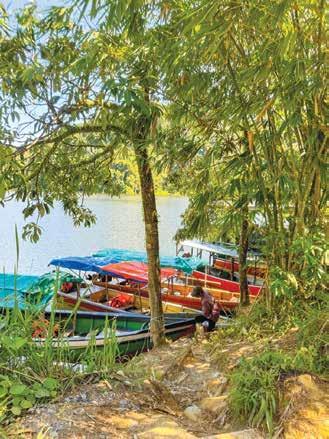

KAMPUNG SAPIT:
» A Night Under the Stars
I spent a night at Kampung Sapit, a Bidayuh village in the highlands of Padawan. My arrival was greeted by the cool air, a refreshing change from the humidity of the lowlands. The village sits on the edge of Borneo Highlands, where the view at 5:00 a.m. is nothing short of breathtaking: a panorama of mist-covered hills stretching into the horizon.
When I was there, the night was filled with cultural performances and traditional dances. The rhythms of the gongs and the graceful movements captivated everyone present. I never thought I would fit in, standing there among people so deeply connected to their traditions. But as the night proceeded, I realised how wrong I was. The hospitality was nothing short of amazing, and despite my initial doubts, I found myself sharing their laughter, their stories, and their joy.
The highlight of my stay was meeting one of the few remaining “Ring Ladies” — the women who still proudly wear the traditional brass coils around their arms and legs, a symbol of beauty and strength from the past. Witnessing their resilience and pride in preserving this practice was eye-opening. It was a powerful reminder of how traditions, even in their fading form, still carry immense significance.
» Hari Gawai and Cultural Richness To me, one of the trip’s highlights was experiencing the remaining days of Hari Gawai at Matop Longhouse in Betong. Though I arrived after the main celebrations, the festival’s vibrant spirit still lingered in the air. The longhouses, adorned with colourful weavings and traditional decorations, seemed to hold onto the joy and energy of the celebration.
What touched me most was the incredible hospitality of the locals. They welcomed me, an outsider, with open arms, offering tuak—a traditional rice wine—as a symbol of their generosity. While I didn’t partake in it, the gesture alone was deeply touching. The true magic of the festival came through in the heartfelt way the community embraced me.
Growing up, my experience with festivals was limited. All I knew before this were the Eid celebrations (Eid ul Fitr and Eid ul Adha), which I assumed were the most vibrant and lively celebrations out there. However, my experience in Sarawak proved otherwise. Hari Gawai opened my eyes to a different kind of festivity, one filled with unique cultural expressions that were both fun and deeply engaging. The joy and energy of the celebration surpassed anything I imagined, revealing a whole new world of festivity I had never experienced before.
Previous page, clockwise from top, left: Kampung Sapit, a Bidayuh village in the highlands of Padawan; The boats used for travellers to get to Bengoh Dam to soak in the peaceful surroundings; Members of various ethnic groups in Sarawak don their traditional costumes to meet up and celebrate Hari Gawai (Harvest Day) festival; Traditional performances welcome the night at Kampung Sapit, the village above the clouds.
Located near the border between Sarawak and Kalimantan, Bengoh Dam is a stunning destination that showcases captivating natural wonders, offering a glimpse into the breathtaking beauty of the region; The view from Kampung Sapit in Padawan at 5:00 a.m. is memorable and breathtaking and Bengoh Dam is a gateway to nature’s hidden gems, like the breathtaking Susung and Curtain Waterfalls, where the untouched beauty feels straight out of a ‘Jurassic World’ adventure.
As my trip came to an end, I was surprised by the deep sense of fulfilment. Growing up with the middle digits ‘13’ on my Malaysian identity card (the digits that indicate which state the cardholder was born), I always knew I was born in Sarawak, but I never felt connected to the place; however, this journey shifted that perspective.
In Sarawak, I didn’t just find a place - I found a profound sense of belonging that had always been there, beneath several layers of unfamiliarity. Sarawak, with its beauty, music, and rich traditions, didn’t just captivate me - it embraced me. And for the first time, I felt like I truly belonged.
I realised that being a Sarawakian isn’t just about the number on your identity card; it’s about feeling the land’s pulse, the people’s heartbeat, and being part of the moment. I’ve come to understand that being Sarawakian is more than a birthright; it’s a connection to the rhythm of this place, a harmony that unfolds over time, just like the dulcet sounds of sape that I had been hearing during my journey in Sarawak, which continued in my mind like a soothing lullaby to my soul, even after I have long returned to Kuala Lumpur…
Gaya Travel Magazine team extends its heartfelt gratitude to Tourism Malaysia Sarawak Office and Sarawak Delta Geopark for making the writer’s trip to Sarawak possible and smooth-sailing.
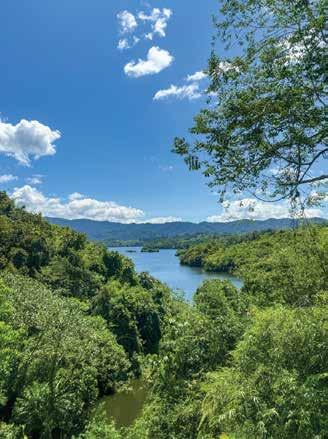


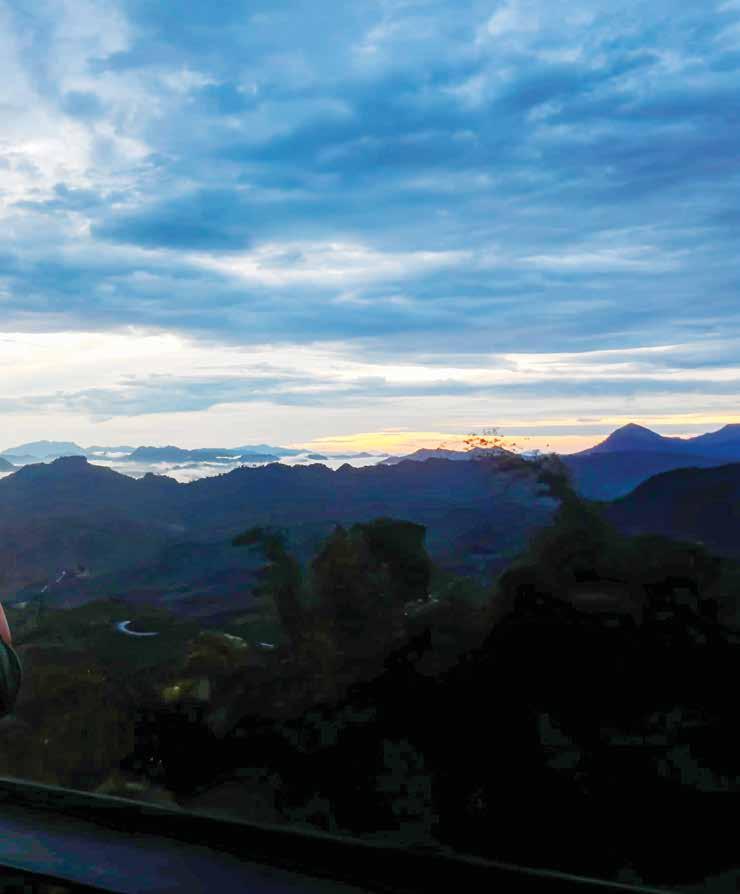
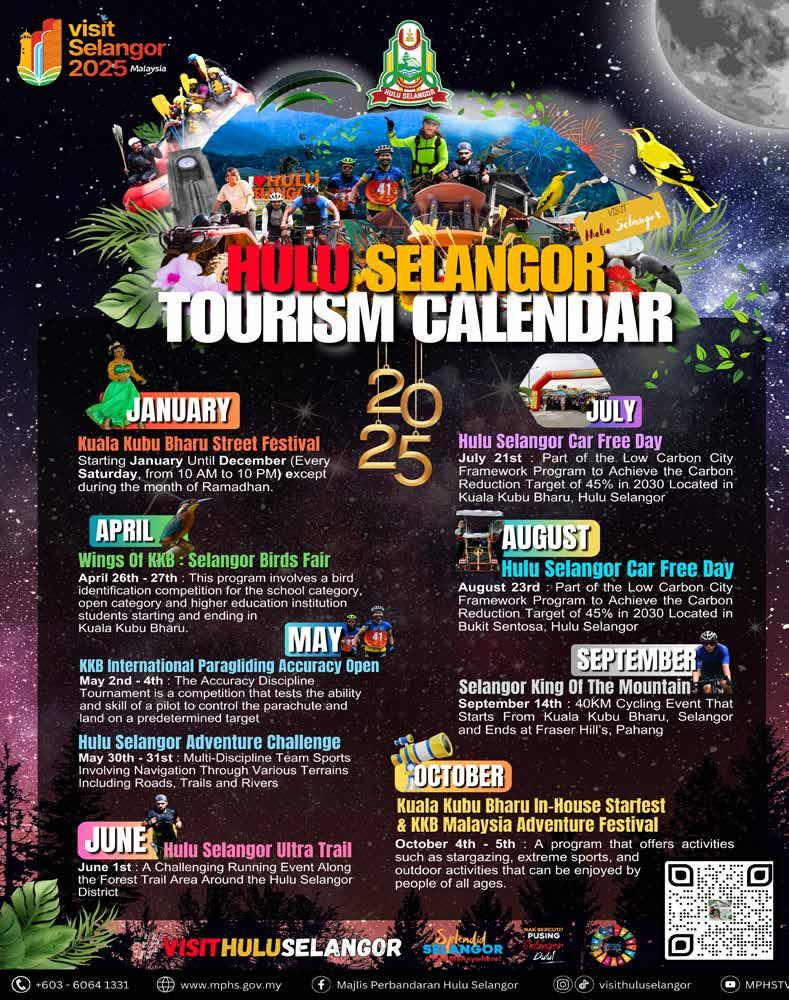




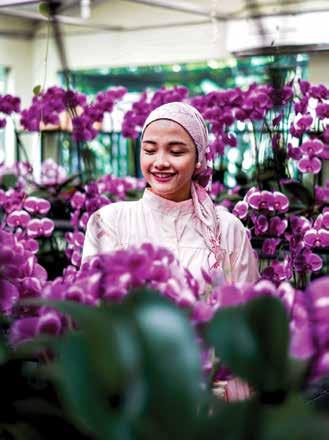
WORLD OF PHALAENOPSIS
Text & Images by JUHAN BIN KAMARUDDIN
In conjunction with the launch of Bulan Koperasi Kebangsaan 2024 (National Co-operatives Month 2024) and Hari Koperasi Negara 2024 (National Cooperative Day 2024) in Kangar, Perlis, on 5 July 2024, Suruhanjaya Koperasi Malaysia (Malaysia Co-operative Societies Commission or SKM) decided to bring along selected media representatives, bloggers, and influencers based in Peninsular Malaysia from the 3rd until the 7th of July 2024 to discover selected co-operatives located in the Malaysian state of Perlis that manufacture or provide special products and services.
As such, SKM – in collaboration with Gaya Travel Magazine – organised a fiveday and four-night familiarisation trip called Eksplorasi Koperasi Perlis 2024 to find out what the co-operatives in Malaysia’s smallest state have to offer. The whole experience made the trip participants realise that despite its size, Perlis has more than meets the eye…


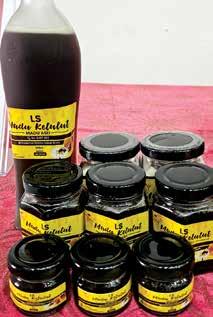

On the first day, the participants of the trip are brought to visit the production of LS Coffee, which is an instant coffee brand laced with Kacip Fatimah (Labisia pumila), a traditional herb rich in phytoestrogen and isoflavones used for maintaining a healthy female reproductive system, to help tighten and lubricate, enhance sexual function, and ease menopause. This product is produced by the members of Koperasi Felcra Lubuk Sireh, who are based at Felcra Lubok Sireh in Perlis, in cooperation with Forest Research Institute Malaysia. LS Coffee is the first Kacip Fatimah coffee produced in Malaysia using Kacip Fatimah extract.
Interestingly, cultivating Kacip Fatimah is challenging, thus requires meticulous care from sapling until harvesting, which takes nine months in total. When cultivating Kacip Fatimah, the sapling is grown outside Perlis at other places in Malaysia that are not as hot.
Public can order Kopi Kacip Fatimah by LS Coffee online at https://www. facebook.com/KoperasiFelcraLubukSireh.
The second stop during the first day of the familiarisation trip is the production of stingless bee honey called lebah kelulut in Malay at Felcra Lubok Sireh, which is also run by Koperasi Felcra Lubuk Sireh. These stingless bees generate the resin required to build hives in apiaries built by the cooperative members. If you happened to visit a stingless bee farm, you could just pick up a straw, open an apiary where the bees create the hives, and directly suck out the honey from the honeycombs.
To purchase the stingless bee honey, refer to https://www.facebook.com/ KoperasiFelcraLubukSireh for the contact number.
The third stop during the first day of the familiarisation trip is LS Village Hotel, also run by Koperasi Felcra Lubuk Sireh. The hotel has 23 rooms and cost MYR1.6 million for the cooperative to purchase the building.
Operational since 2018, the cooperative began the hotel business from scratch, without any knowledge regarding the hotel industry, but learned the business along the way. The hotel’s occupancy has been picking up steadily, post-COVID-19 pandemic. To increase revenue, the co-operative also provides incentive to its members up to 10% whenever they bring their guests to the hotel.
Considered as one of the northernmost hotels in Peninsular Malaysia, the hotel rooms are full during weekends and public holidays. Guests can arrange for the hotel to pick them up from Padang Besar ETS station to get to the hotel for checking-in.



FB: PadangWaremart
The fourth stop during the first day of the familiarisation trip is Padang Waremart, which is run by Koperasi Perbadanan Kemajuan Ekonomi Negeri Perlis (Perlis State Economic Development Corporation Cooperative).
Having been in operation since 2017, this marketplace boasts over 200 retailers – who are a mix of locals and foreigners – selling various items ranging from food and souvenirs to general goods like toys and apparel.
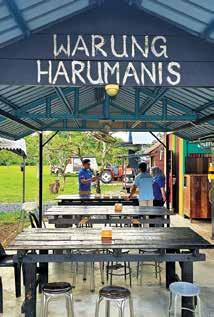
Warung Hutan Temin in Perlis grows Harumanis mangoes, a Perlis specialty, within its grounds.
» HARUMANIS HUTAN TEMIN
FB: Harumanis Hutan Temin
The fifth stop during the first day of the familiarisation trip is Harumanis Hutan Temin to savour Harumanis mango (Perlis’ specialty) with glutinous rice and coconut milk, including refreshing juice.
Warung Hutan Temin grows Harumanis mango within its grounds, which is seasonal (April to June), harvested only once a year.
Opened since 2023, Warung Hutan Temin sells Harumanis juice yearlong. Harumanis is mainly grown in Perlis because this type of mango requires hot and drier weather to flourish, including soil that is rich with limestone similarly found in Perlis.
» KAMPUNG SEBERANG RAMAI, also known as KAMPUNG WARNAWARNI
FB: Kampung Seberang Ramai, Kuala Perlis
On the third day of the trip, the participants visited Kampung WarnaWarni (Colourful Village) located in Kuala Perlis, which is run by Koperasi Perkampungan Warna Warni Kampung Tengah Berhad.
The entire Kampung Warna-Warni actually consists of seven smaller kampungs, which include Kampung Seberang Ramai and Kampung Tengah, which is considered as the centre of Kampung Warna-Warni where events are usually held.
15 lanes within Kampung Warna-Warni are colourfully painted for tourists’ pleasure. Each lane comes with its own theme, for instance ‘Murals’, ‘Rainbow’, ‘Royal Children’, ‘Black & White’. The lanes are painted by the villagers themselves after they return from fishing.
As part of SKM’s community service, SKM officials together with the participants of Eksplorasi Koperasi Perlis 2024 familiarisation trip helped in painting one of the buildings within Kampung Warna-Warni.
Ever since Kampung Warna-Warni became a tourist attraction, the village’s total income has been increasing steadily from tourists who spend in the kampung, averaging up to MYR20,000 per month.
Despite the influx of tourists, the villagers, comprising mostly fishermen, still maintain their local humble lifestyle.
» WAHYUNI SPA https://www.wahyuni.coop.my
In the afternoon on the third day of the trip, the participants were brought to Wahyuni Spa Kangar, which offers head-to-toe services strictly for women at affordable rates while complying with the shariah (Islamic laws). The spa also retails beauty products like
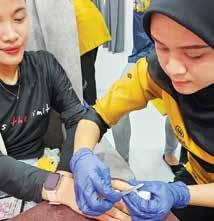

aesthetic
jamu (homemade remedial/medicinal concoctions), which can be bought via Shopee app.
Founded by Mrs. Azarina Ibrahim, the business began as a mobile spa service back in 2013 and has grown from strength to strength over the years. Wahyuni Spa now has three outlets (two in Kangar, Perlis, and one in Alor Setar, Kedah). The spa outlet in Guar Sanji in Kangar is a co-operative called Koperasi Wahyuni Perlis, housed in its own building. Koperasi Wahyuni Perlis received a MYR100,000 grant from the government to set up shop. This outlet offers aesthetic services for women like laser treatment.
As part of its services, Wahyuni Spa dispenses three types of massages: Malay massage; Urutan Malaysia (patented
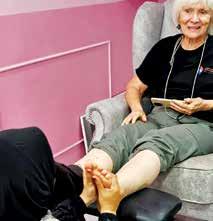

for
Malaysian Massage that infuses the various massage techniques from Malaysia’s different ethnic groups); and relaxing massage. For best results, ladies are recommended to opt for treatments that last at least two hours.
Besides spa, Wahyuni Spa Kangar functions as a spa training centre to encourage employment among girls and young women in Perlis and Kedah, especially those who just completed their Malaysian Certificate of Education (SPM), thus increasing opportunities for them to obtain income and boost the local economy. The girls who graduate from the outlet’s spa training centre can progress their careers in the spa industry by taking advanced certifications while gaining experience when working at the spa.
https://pcuti.com/st_hotel/al-ameenhotel
On the fourth day of the trip, the participants were introduced to Koperasi Al Ameen, the co-operative that runs Al Ameen Boutique Hotel, an 11-room lodging. The cooperative has taken over an existing hotel and renovated it to its current state.
The hotel is close to attractions like Wang Kelian Viewpoint and Padang Besar shopping hub. Due to its location, which is out of the town centre, the hotel intends to highlight Perlis’ ecotourism attractions, which are nearer to the hotel.
The hotel has no reception desk – to enter the hotel guests are given QR code to access the hotel’s premises and rooms. Each of the hotel rooms is homely and comes in different themes, including smart television sets for guests to conveniently access YouTube, besides local television channels. Room rates begin from MYR100 per night per room.


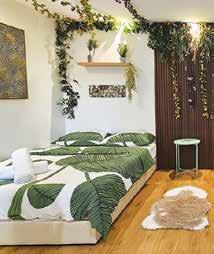


FB:
Among the latest attractions in Perlis, Pasar Terapung JPS Perlis (JPS Perlis Floating Market) is run by the Perlis Department of Irrigation and Drainage Co-operative and located by the body of water within the grounds of JPS Perlis Complex in Pengkalan Asam. This market operates from 9:00 a.m. until 7:00 p.m. daily.
Travellers can stop by the floating market to purchase food from the stalls managed by the co-operative while enjoying the serene, peaceful, and relaxing atmosphere. Among the products sold are local and Thaiinspired dishes that are popular with the community.
Besides purchasing food and beverages, travellers can stroll along the water, including feeding fish; witnessing poultry such as geese, pheasants, and chickens reared on an islet that is connected to land via a boardwalk; and riding on paddle boats.
For more information regarding Suruhanjaya Koperasi Malaysia (Malaysia Co-operative Societies Commission or SKM), visit https://www.skm.gov.my/index.php/en/.




Text & Images by FARAH IZHAR
Last 28 July 2024, Gaya Travel Magazine team members attended the inaugural Negeri Sembilan (NS) Fest 2024 in Seremban (the capital of the Malaysian state called Negeri Sembilan), which was a standout event, featuring over 250 booths from entrepreneurs across various industries, alongside government agencies. The festival, which combined “Farmers & Fishermen’s Day,” “Sales of Products & Goods of Negeri Sembilan Entrepreneurs,” “NS Food Fest,” and the “Perpatih Festival,” ran from 27 July until 3 August 2024, drawing crowds with its diverse exhibitions and family-friendly activities.
However, it would be a waste if we were to visit Seremban just for the spectacular NS Fest alone, because Seremban’s appeal goes beyond the festival. With its rich culture, delicious local cuisine, and scenic spots, this city as well as district has much more to offer for those who take time to explore. If you were curious about what to do after enjoying the NS Fest in the future, or to simply get away from Klang Valley’s hustle and bustle, there’s a full day of discoveries waiting in Seremban!

MORNING:
» Breakfast at D’PANGKiN Kitchen and Garden
IG: d.pangkin
The day begins with the soft glow of the morning sun casting a golden hue on the streets of Seremban. At D’Pangkin Cafe, Nilai, life hums gently as locals gather for breakfast, exchanging warm smiles and friendly banter. Walking through the entrance, you will be greeted by the aroma of freshly brewed coffee and local delicacies. There is also a small flower stall by the entrance that offers vibrant blooms to brighten your morning,
Mornings can get quite hectic here, especially on weekends when the tables fill up quickly, so making a reservation is the perfect way to ensure you’ve got a front-row seat to this lively breakfast ritual.
LATE MORNING:
» Adventure at X Park Sendayan https://www.xparkmalaysia.com/ SriSendayan.aspx
With your hunger satisfied, it’s time to pump your adrenaline at X Park Sendayan! Begin your adventure by slipping into a racing suit and helmet for some go-karting action. Feel the rush as you speed around the track for an exhilarating 10-minute ride. The short but intense experiences will have your heart racing, as you navigate the twists and turns, competing against your friends for the best time.
If you seek more action, try your hand at archery, where you can test your aim and enjoy the precision of each shot. The park also features paintball games, and other extreme activities for you to challenge yourself. For those craving a bit of dirt and dust, hop
on an all-terrain vechicle (ATV) to explore the rugged trails. And if you want to see the park from a different perspective, take a thrilling ride on the flying fox – soar through the air and enjoy the bird’s eye view of the entire surroundings.
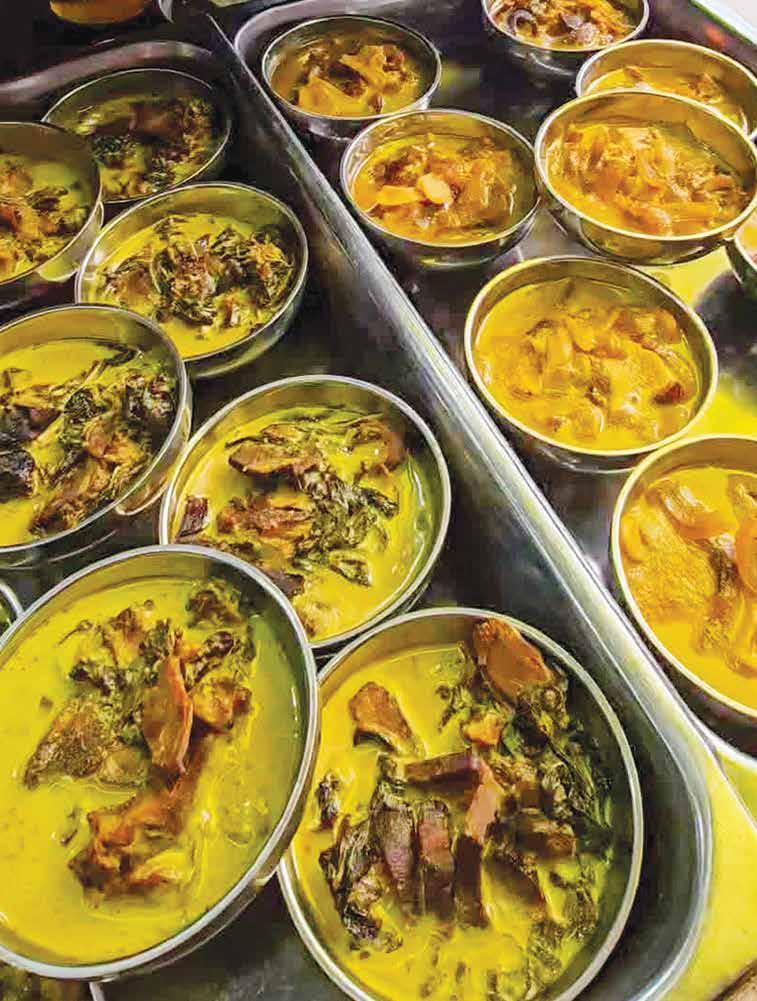
AFTERNOON:
» Tea Break at Kerongsang Emas @ Akasia
IG: akasia_kerongsangemas
After the rush of excitement, it’s time to wind down with a tea break at Kerongsang Emas @ Akasia. This cosy spot feels like stepping into a nostalgic scene. This self-service cafe, with its open plan layout that invites fresh air and the sounds of nature, allows you to wander through the delightful spread of local treats at your leisure and unwind.
Take a moment to feed the colourful fish in the pond. The silly behaviour of the waddling geese adds a playful charm, while the cheerful sounds of birds and clucking chickens enhance the delightful atmosphere. It’s a perfect spot for all ages to enjoy and recharge before your next adventure.
» PEACEFUL VISIT TO SRI SENDAYAN MOSQUE
Just a short drive away, Sri Sendayan Mosque stands like a beacon of serenity, its grand architecture gleaming against the evening sky. The mosque’s
intricate details beckon you to explore its beauty.
This mosque is not just a place of worship; it’s a living testament to the rich Islamic heritage of Seremban. Take a moment to admire the architectural details and serene surroundings, making it an unforgettable stop on your journey. Whether you seek peace or simply wish to marvel at its beauty, this mosque is a must-visit that promises to leave a lasting impression.
» Variety of Food at Warung Selera Kampung
IG: warungselerakampung
As you settle in at Warung Selera Kampung, you’ll discover a delightful surprise: over 80 choices of dishes await! Each dish is packed with flavours that reflect the coastal heritage of Seremban. Indulge in traditional Negeri Sembilan favourites like Masak Lemak Cili Api, Asam Pedas, Ikan Bakar, and a variety of fresh ulamulaman (local raw leafy greens). The menu’s standout offerings are the Kambing Bakar (grilled mutton)
and Sotong Godang (cuttlefish), which promise to elevate your dining experience. The vibrant atmosphere is filled with heartwarming conversations, and the welcoming disposition of the staff enhances the community-like feel. Whether you’re dining alone or with fellow travellers, there’s a shared appreciation for the simplicity and richness of this kampung-style feast.
» Exploring Tokong Si Thian Kong
With your hunger sated, it’s time for a cultural exploration at Tokong Si Thian Kong, a Chinese temple that stands in serene contrast to the bustle of the town. Dedicated to the deity Si Thian Kong, this temple holds significance for the local Chinese community as a place of worship, cultural activities, and community events. With its traditional Chinese architecture, visitors can explore local spiritual practices while enjoying the temple’s peaceful environment. Whether you’re seeking cultural enrichment or a quiet escape, Tokong Si Thian Kong is a must-visit in Kuala Pilah.
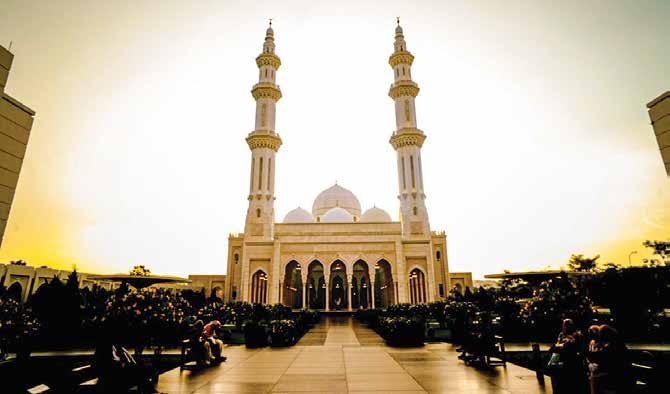
Previous page: Sri Sendayan Mosque, with its intricate details, invites you to immerse yourself in its stunning beauty and rich Islamic heritage that defines Seremban.
This page, clockwise from top, left: Kerongsang Emas @ Akasia offers an exquisite selection, featuring everything from the rich flavours of onde-onde to delectable chocolate chip cookies; Kerongsang Emas @ Akasia sports an open-plan layout that welcomes fresh air and the soothing sounds of nature; Sizzling delights such as expertly grilled fresh squid and fish are prepared at Warung Selera Kampung’s live cooking station (Photo by @warungselerakampung on Instagram); Si Thian Kong temple is a beloved spot for the local Chinese community, serving as a hub for worship, cultural activities,and community gatherings; Each meal is cooked to perfection, guaranteeing a taste of authentic coastal flavours (Photo by @ warungselerakampung on Instagram).





Beyond delectable mini cakes, Sara Sofeya Cakes also serves mouthwatering local and Western dishes that satisfy your cravings.
Photo by @sarasofeyacakes on Instagram.
» Dinner at Sara Sofeya Cakes IG: sarasofeyacakes
As the day winds down, you find yourself at Sara Sofeya Cakes, a charming café bursting with homely yet lively energy, perfect for a delightful culinary celebration. Not only does this bakery sell delicious cakes and desserts, it offers a line of great cuisine too. Savour dishes like Nasi Minyak Daging Dendeng (rice cooked in ghee and spices, accompanied by dried and spicy fried beef), Roti Jala (golden lacy pancakes), Penang Laksa (spicy noodle soup), grilled chicken, and more.
Seremban, with its blend of excitement, cultural depth, and heartwarming meals, leaves you feeling fulfilled and eager to return for more. With this itinerary, you’ll experience Seremban not just as a destination, but as a story unfolding through flavours, sights, and heartfelt moments that make each experience truly memorable. So, pack your bags and set off to Seremban today!
Gaya Travel Magazine team members extend their heartfelt gratitude to Negeri Sembilan Tourism Board for making the trip to the NS Fest and Seremban possible and smooth-sailing.


Text by JUHAN BIN KAMARUDDIN
PULAU TIOMAN
The Boathouse Pulau Tioman promises an unforgettable escape amidst the pristine beauty of Tioman island. From its exclusive beachfront location to its commitment towards preserving the island’s rich heritage and marine ecosystem, the property promises a barefoot luxury getaway for guests seeking an authentic and bucolic tropical Malaysian island experience.
Last July 2024, the Gaya Travel Magazine team members had the opportunity to stay at the newly opened The Boathouse Pulau Tioman, a property developed and managed by the Singapore-based HPL Hotels & Resorts’ Boutique Collection.
Located on the southern side of Tioman island and accessible only by boat, we love how The Boathouse Pulau Tioman is laid out similarly to a typical kampung (Malay traditional village) facing a pristine stretch of beach with a private jetty, which is quaint and nostalgic but with modern conveniences, creature comforts, and contemporary twists. This 31-key boutique
resort is entirely designed and built using local materials, offering guests a uniquely tranquil experience on Tioman island, a gazetted wildlife reserve and marine park with 16 dive sites.
“The Boathouse Pulau Tioman aims to capture the essence of Tioman island, presenting it as an idyllic getaway and sharing the rich narrative of the island and its people. We are truly excited to warmly welcome our guests, inviting them to immerse themselves in an authentic island experience,” expressed Felix Yeo, Resort Manager of The Boathouse Pulau Tioman.
» If you would like to stay at The Boathouse Pulau Tioman, remember that the property is closed from November until February next year due to the northeast monsoon that brings torrents and strong wind, thus turning the waters unbearably rough.
» Take note that between May and September, due to the property’s southerly location, the waters in the area are choppier compared to the other parts of Tioman because of the southwest monsoon. Take your pill if you were prone to motion sickness before boarding the ferry or boat.
» If you had never been to The Boathouse Pulau Tioman, it is recommended that you first find the person in The Boathouse Pulau Tioman uniform at the Mersing jetty in Johor or Tanjung Gemok jetty in Pahang to help you with your passage. Once you reach Tioman island, you need to disembark at Genting jetty and then transfer to another boat belonging to The Boathouse Pulau Tioman to reach the property.
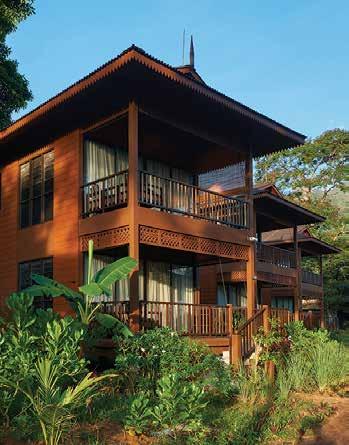
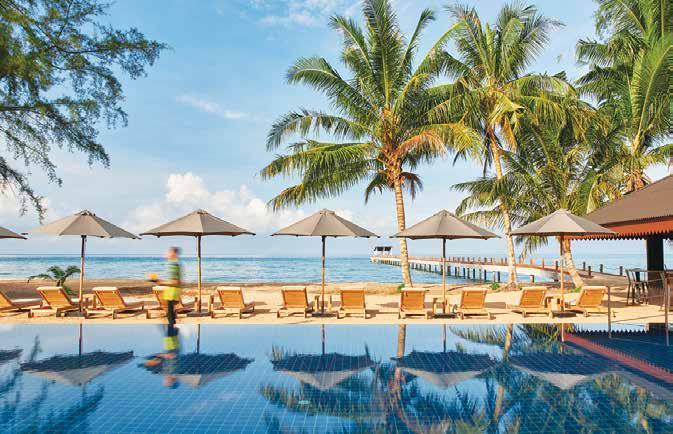
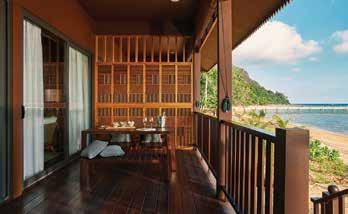



The accommodations at The Boathouse Pulau Tioman consist of a selection of beachfront bungalows crafted from renewable, locally sourced timber, each thoughtfully designed to ensure comfort and memorable stay. Guests staying at these bungalows will wake up to breathtaking views of the sea and enjoy direct access to the beach. Each unit features a private terrace with a daybed, perfect for lounging and soaking in the serene surroundings. Compared to the other bungalows, The Boathouse Pulau Tioman’s Beach House possesses a more spacious layout featuring three separate bedrooms, living, and dining area. Designed with modularity in mind, the Beach House’s versatility befits large groups or big families. This two-level structure comprises two suites and one loft, providing guests with the flexibility to book the entire Beach House or individual units separately.
Gaya Travel team members were so taken in by our rooms at The Boathouse Pulau Tioman, so much so that we didn’t want to leave our rooms for a second! Though there is no bathtub, each of the property’s rooms comes with earthen-toned furnishings, custom-made wooden furniture and room accessories sourced from Muar (a town in the Malaysian state of Johor), Peranakaninspired embellishments, high ceilings, naturally well-lit interiors, expansive balcony with daybed, strong Wi-Fi connectivity, and smart television set with access to Netflix and Youtube, which were all we ever needed.
In line with the property’s commitment towards sustainability, no plastic drinking water bottles are provided in the rooms; instead, they are replaced by drinking water contained in reusable glass bottles. Even the shampoo, conditioner, and shower gel are filled inside permanent marble-looking pump dispensers.

Despite our obsession with the rooms, we couldn’t help but eventually having to leave them because the scenic surroundings of The Boathouse Pulau Tioman are remarkably inviting, comprising the ideal combination of sea, sand, age-old trees, undulating terrain, sky, and sun. Guests can choose to swim amongst coral reefs, embark on jungle treks, or engage in traditional Malaysian activities as well.
Though we are not outdoorsy, for some reason, during our stay at The Boathouse Pulau Tioman, we felt motivated to engage in activities like flying kites by the beach; adoring the sight of the iconic ‘Dragon Horns’ or Twin Peaks plus the captivating Tioman landscape from the property’s grounds and jetty; climbing up the concrete steps to visit the refreshing Asah waterfall from Mukut jetty; and trekking uphill for 40 minutes to witness the majestic 300-year-old Mother Willow Tree of Tioman from Paya jetty. Those seeking a greater adrenaline-infused thrill can opt for rockclimbing on Tioman’s very own colossal sandstone boulders.
Should you find those activities strenuous, you could instead dip into the swimming pool that fronts the resort’s all-day dining outlet, Attap Seed. Alternatively, guests can enjoy a variety of other leisure activities throughout their stay such as learning the secrets of traditional Malaysian cuisine and flavours through cooking demonstrations, or immersing themselves in local culture through kite-making and traditional games like congkak (a local mancala game), fivestone game, and checkers, including other board games, all can be accessed from the Games Room.
If you were feeling peckish and prefer a dish that is outside the stated menu, Attap Seed can prepare madeto-order, as long as the ingredients are readily available. We asked for our favourite comfort food mee goreng (Malaysian fried noodles) that was not part of the menu, and it turned out to be one of the most satiating we have ever tasted. The Boathouse Pulau Tioman’s food and beverage team also serves up a delectable Malaysian and international barbecue seafood dinner buffet spread by the beach at least once a week.
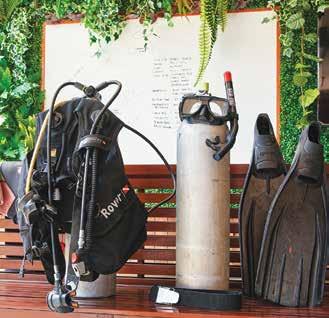
Meanwhile, a stay at The Boathouse Pulau Tioman isn’t complete without a little adventure in the beautiful waters of Pulau Tioman. Guests staying at the resort could also indulge in snorkelling and diving to explore the vibrant coral reefs, which is what Tioman is famous for. Those who wish to venture a little further and deeper can make use of a wide range of on-site diving programmes and excursions – from leisure dives to PADI certified courses – offered by the property’s Dive Centre.
On the other hand, guests who prefer activities above water can enjoy the breathtaking panoramic views on a sunset cruise, take to the seas with fishing experts, or visit neighbouring islands such as Coral and Renggis via a boat excursion, including other settlements on Tioman like Tekek (considered as the island’s capital), Juara (the largest village on the island), and Air Batang Chalet (the island’s backpackers’ central). Those visiting between March and October might even witness passionate volunteers protecting diverse turtle species.


The Boathouse Pulau Tioman prioritises the conservation of the rich biological diversity and the indigenous heritage of Tioman island. The property conscientiously engages in green projects aimed at mitigating environmental impact while inspiring and empowering the community and guests to actively participate in marine conservation efforts.
The property intentionally avoids using single-use plastics and prefers refillable water bottles and bamboo containers. Additionally, The Boathouse Pulau Tioman collaborates with The Ayer Ayer Project in installing ‘Whale You Refill’ drinking water fountains at the property’s Dive Centre. By encouraging guests to use these fountains to fill reusable bottles, the resort aims to significantly reduce and gradually eliminate single-use plastics. The property even go as far as having its own water bottling plant – an initiative that is almost unheard of at any other properties – to filter drinking water twice using the reverse-osmosis method, then filled inside reusable glass bottles, which are then placed in the rooms, Attap Seed, and the Communal Hall (an indoor airconditioned space where functions are held) when required, thereby drastically cutting plastic use and waste.

sustainability up another notch, The Boathouse Pulau Tioman supports marine environment management and conservation at Tioman island by partnering with Reef Check Malaysia. This ongoing partnership – particularly with Reef Check’s Chief Programme Officer and marine biologist based on Pulau Tioman, Alvin Chelliah – in large part focusses on coral rehabilitation and conservation. Through a marine health survey conducted by Reef Check, The Boathouse Pulau Tioman was able to assess the condition of corals around Kampung Nipah area during the property’s construction. The property now agrees to become Reef Check Malaysia’s eyes in monitoring the waters in the southern part of Tioman so that the coral reefs and marine life remain intact.
The Boathouse Pulau Tioman opened our hearts to all of the enchantment that Tioman offers, making us feel protective of the island, which is our most precious takeaway. We look forward to returning to this property soon, this time bringing the rest of the Gaya Travel group for a much-deserved break. For travellers intending to come in groups, bear in mind that The Boathouse Pulau Tioman accommodates only up to 48 persons at any one time to ensure that guests’ experience remains as intimate and exquisite as the property…
For reservations and more information, contact +6 09 419 2888 or visit www.boathouse-tioman.com
If you were dreaming of an escape that combines laid-back village vibes, beachfront luxury, and island paradise, my recent trip to Mersing has the perfect top three unique staycation ideas for you! In the span of five days, I spent my time staying at three unique locations, each one offering a different slice of coastal bliss: KampungStay Teluk Buih; Alun-Alun Resort; and Pulau Rawa Resort. Each has its distinct charm and character, leaving me with unforgettable memories.
The district of Mersing in the Malaysian state of Johor is a hidden gem that beckons travellers with its stunning beaches, lush landscapes, and vibrant local culture. Whether you’re lounging on pristine sands or exploring the rich marine life through snorkelling, there’s something here for everyone. My journey was a delightful mix of relaxation and adventure, showcasing what this destination offers.
So read on to join me as I share my experiences at each location, along with tips for making the most of your staycation in Mersing. Get ready to be inspired by breathtaking views, delicious food, and a chance to unwind in nature’s embrace. Your dream getaway awaits!

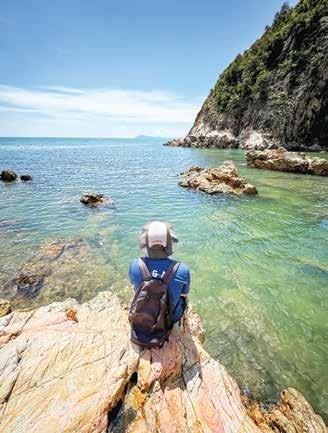



KAMPUNGSTAY @ TELUK
BUIH: ENGLISH
Last June 2024, I had the pleasure of staying at a hidden gem called KampungStay @ Teluk Buih during my visit to Mersing, Johor. I’m always on the lookout for unique experiences, and this place does not disappoint!
KampungStay @ Teluk Buih is not your average resort; it’s a communitybased tourism project developed under the auspices of the East Coast Economic Region Development Council (ECERDC). The aim here is to provide guests with an authentic kampung experience while blending traditional charm with creature comforts. Imagine stepping into a cosy chalet that feels like a home away from home!
The chalets take their inspiration from English cottages with contemporary tropical twists, featuring a delightful blue and white colour scheme that instantly puts you at ease. The interiors are up-to-date but still have some traditional touches, making it the perfect spot to relax after a day of exploration. I stayed in a lovely villa that felt like home, complete with comfy beds and a welcoming vibe that made it easy to relax, perfect for families or travelling groups.


One of my favourite features of KampungStay @ Teluk Buih is the swimming pool. After a day of hiking and exploring, there’s nothing like taking a refreshing dip. The pool is great for soaking up the tropical sun and enjoying the lush surroundings.
In short, my time at KampungStay @ Teluk Buih was more than just a getaway – it was an enriching experience that allowed me to dive deep into the heart of traditional village life while having access to modern-day conveniences. From cosy accommodations and delicious food to friendly faces and stunning scenery, it was the perfect retreat.
For a unique adventure that combines relaxation with authentic cultural experiences, head to KampungStay @ Teluk Buih for its bucolic charm that stays with you forever.
» Pantai Penyabong is an absolute treasure. Tucked away from the usual tourist paths, this beach is quiet, clean, and stunningly beautiful. The calm, clear waters make it perfect for a relaxing day by the sea, while the rocky formations along the coast add a dramatic touch to the landscape. It’s an ideal spot to sit back, relax, and listen to the sound of the waves.
» If you’re into scenic spots with a bit of mystery, Gerbang Laut Pulau Mawar will steal your heart. It’s a unique rock formation that looks like an archway, hence the name “Gerbang Laut” or “Sea Gate”. The view from here is nothing short of breathtaking, with the deep blue sea stretching out into the horizon and waves crashing against the rocks. It’s a perfect place for photographers or anyone who appreciates the beauty of nature.
» Bukit Selantai is one of the highlights of my trip, hands down. The hike up to this hill isn’t too challenging, and once you reach the top, the view is absolutely mesmerising. You’ll be greeted by sweeping vistas of the sea and nearby islands, and on a clear day, you might even feel like you’ve been transported to Nusa Penida, Bali. The panoramic views from up here make it a perfect spot for sunrise or sunset hikes.
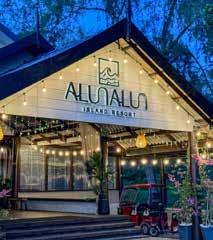


From the rustic village, I moved on to Alun-Alun Island Resort on Pulau Besar (Besar Island) for one night. This resort is the definition of relaxed luxury. The first thing that hit me was the open-air concept: everything seemed to blend seamlessly into the environment. The resort sits right on the beachfront, with swaying palm trees providing shade as you lay back and listen to the waves.
I stayed in one of the resort’s homely villas with stunning ocean views. Waking up to the sunrise over the sea was magical. The villa had all the comforts I needed, with big windows that let in the island breeze. When I wasn’t in the villa, I was either lounging by the swimming pool (which also has a killer view) or chilling on the private


beach, which felt like my own slice of paradise.
One of the highlights of my stay was the snorkelling adventure around Pulau Harimau. Picture this: I slipped into the crystal-clear waters and was immediately surrounded by a dazzling array of colourful fish darting through vibrant coral reefs. It felt like diving into a beautiful painting! Each twist and turn revealed a new underwater surprise, and I lost track of time as I immersed myself in this magical world. The beauty was so captivating that I found myself wanting to explore deeper, swimming from one coral garden to another.
After my snorkelling escapade, I often found myself lounging on the resort’s private beach. The soft, white sands felt like silk beneath my feet, and the sun was just the right amount of warmth.
I spent lazy afternoons soaking up the sun, listening to the rhythmic sound of the waves, and occasionally diving into the refreshing waters to cool off. It was the perfect blend of relaxation and rejuvenation.
One of the most refreshing aspects of my stay was the resort’s digital detox approach. With no internet access, I truly unplugged from the digital world, which was liberating! I spent quality time chatting with new friends, exploring the island’s hidden treasures on foot, and simply being present. It felt wonderful to reconnect with nature and enjoy the company of others without the distraction of screens.
What struck me about Alun Alun Island Resort was its commitment to sustainability. It felt good knowing that my stay was contributing to ecofriendly practices. From using local ingredients to minimising waste, the resort is dedicated to preserving the natural beauty that makes it special.


MY TROPICAL ESCAPE AT RAWA ISLAND RESORT
https://rawaislandresort.com
Looking for a tropical getaway idea? Then let me take you on a journey to Rawa Island Resort, a hidden gem nestling on Rawa Island, part of the breathtaking Sultan Iskandar Marine Park. As I stepped onto the boat from Mersing, excitement bubbled within me; in just 20 minutes, I would be trading urban chaos for sandy beaches and crystal-clear waters.
Upon arrival, I was greeted by the warm, tropical breeze and the gentle sound of waves. The resort sprawled out before me, a stunning oasis of lush greenery and pristine beaches. I stayed at the Frangipani Villa, and let me tell you, waking up to the view of the sand and sea was like stepping into a postcard! The room was beautifully designed, with amenities that ensured current comfort without overshadowing the surrounding natural beauty.
For those seeking more privacy, the waterfront bungalows perching over water offer uninterrupted views of the South China Sea. I couldn’t help but envy the guests who were lounging on their large waterfront bungalow balconies, soaking up the sun in complete tranquillity.

The real magic of Rawa Island unfolded when I grabbed my snorkelling gear and ventured into the turquoise waters. Just a few metres from the shore, I found a vibrant coral reef teeming with colourful fish. It felt like diving into a living aquarium! Every stroke in the water revealed new wonders, from delicate sea anemones to schools of glittering fish. I could have spent hours exploring this underwater paradise.
But snorkelling wasn’t the only adventure waiting for me. I also took out a kayak to glide over the calm waters surrounding the island, paddling through the picturesque scenery. The tranquillity was blissful, and I felt completely at peace.
What stood out to me was the resort’s commitment to being family-friendly and eco-conscious at the same time. With activities suitable for all ages, families could easily spend quality time together while enjoying the island’s beauty. Plus, the resort’s dedication to sustainability is commendable. Knowing that my stay contributed to preserving the island’s pristine environment makes it feel even more rewarding.

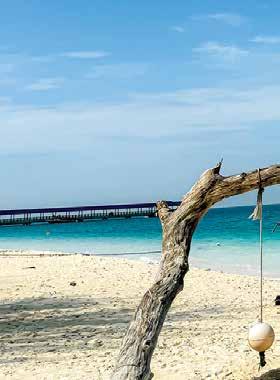


Other Staycation Ideas in Mersing to Consider:
» TELUK GOREK CHALET & CAMPSITE (https:// telukgorekchaletcampsite. wordpress.com) Embrace nature with snug chalets or a fun camping experience right by the beach!
» TELUK PENYABONG RESORT ENDAU MERSING (https://telukpenyabungresort.com) Enjoy stunning sea views and relax in comfortable accommodations while indulging in water sports.
» PASIR LANUN CAMP & CHALET
(Tel: +6 013 290 8455 / +6 010 837 2825) Dive into adventure with a mix of camping thrills and comfortable chalets only steps from the shore.
» IDAMAN PERMAI CHALET
(https://www.facebook.com/ IdamanPermaiResort) Escape to serenity with beautifully appointed chalets surrounded by lush vegetation and the sounds of nature.

Gaya Travel Magazine team members express our heartfelt gratitude to Tourism Johor (https://tourismjohor.my/) for making the writer’s trip to Mersing possible and smooth sailing.

Text by JUHAN BIN KAMARUDDIN
Gaya Travel team was recently invited to stay at Courtyard by Marriott Setia Alam, which is in the flourishing township of Setia Alam in the Malaysian state of Selangor. The experience made the team realise that the hotel is indeed perfect for business and leisure travellers since it emphasises style, comfort, and functionality.
Being the second Courtyard by Marriott property in Malaysia, Courtyard by Marriott Setia Alam possesses extensive facilities for meetings, business conferences and social events. For example, the hotel boasts a 1,120-square-metre pillarless Grand Ballroom and several flexible function spaces for corporate and social gatherings. The hotel is popular for weddings as well due to its classy setting with state-of-the-art LED screens that function as canvasses for wedding receptions, banquets, and bridal cocktail parties. Speaking of weddings, the Gaya Travel team is impressed with the designated two bridal cum VIP holding rooms, each equipped with a lounge area with wall-mounted television set, a full-fledged washroom with shower, vanity area, and closet.
Though Courtyard by Marriott Setia Alam broadly caters for business and MICE, including weddings, it meets the demands of guests intending to stay for leisure too. The hotel is conveniently linked to the popular Setia City Mall for stylish shopping via a covered pedestrian bridge, further enhancing the hotel’s appeal among those who not only come for business but also staycation since it is a bit away from the hustle and bustle of major centres like Kuala Lumpur and Petaling Jaya yet accessible to them. Besides, the hotel is a short walk to restaurants and a picturesque public park where guests can jog around and frolic whenever the weather permits, especially in the mornings and evenings.




Accentuating contemporary design that encompasses comfort and functionality, Courtyard by Marriott Setia Alam features 225 thoughtfully designed rooms and suites. Each of them has floor-to-ceiling windows that generously let in natural light, and kitted out with the expected mod cons like television sets that can mirror Android devices, round multipurpose work desks, wireless charging ports, USB charging outlets, built-in multi-standard sockets, and highspeed internet access.
All guestrooms have en-suite streamlined washrooms, each consisting of a deep sink; a washroom amenities box next to the sink containing toothbrush, toothpaste, shaver, shaving cream, and sewing kit; handheld plus rain shower heads for immersive cleansing; wall-mounted containers filled with shampoo, conditioner, and shower gel at the showering area; a thick and absorbent washroom floor mat (actually among the thickest that the Gaya Travel team has ever encountered); and a walk-in wardrobe that contains iron and ironing board, hangers, robes, laundry bags, shoehorn, shoe brush, slippers, safety deposit box, and flashlight in case of a blackout. The hair dryer is kept inside a wooden box under the washroom sink. Additionally, the washrooms in the Executive Suite and One Bedroom Suites come with large soaker tub.
But one of the most appreciated washroom features but most taken for granted (at least to the Gaya Travel team) is the wall-mounted swing-armed magnifying makeup mirror with ring light, which is extremely useful for thorough facial grooming, regardless of whether you are a female, male, or in
between. This fixture should be made imperative in all types of lodgings throughout the world, so hats off to Courtyard by Marriott Setia Alam for not leaving this feature out when designing the guestrooms! Now, if only all hotels could also provide a complimentary pair of trusty tweezers and nail clippers together with the room – that would surely win the hearts of more grooming-conscious travellers the world over…
The highest category is the executive suite, which Gaya Travel strongly recommends for those who prefer more space and privacy. The one-bedroom executive suite, which comes with a living room, can be connected to another guestroom to accommodate a travelling group comprising more than two persons and up to five persons - we recommend that guests check with the hotel first regarding the availability of these connecting rooms.
Alternatively, four of the guestrooms at the hotel have been designated as mobility-accessible rooms that are spaciously laid out so that wheelchair-bound guests can move about with ease.
The hotel’s king-sized or double beds are sumptuous and amazingly restful, which utilise Serta mattresses. These beds are top-layered by Athos mattress toppers, which are certified by Zurich-based Oeko-Tex Association to ensure that the material and product are free from harmful substances. Gaya Travel team adores the beds, especially the seemingly largerthan-the-usual king-sized beds, because they support our bodies excellently, allowing us to undergo a remarkably deep slumber, making us feel more refreshed the morning after.
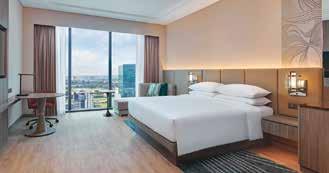

Drawing inspirations from local and international fare, the hotel’s two dining venues and a bar showcase a variety of gourmet choices. Located on Level 2, 5 Wells is an allday dining outlet where guests can savour elaborate buffet featuring international favourites and an a la carte menu in a casual dining environment with fresh, made-to-order options – we recommend guests try out the outlet’s succulent beef tenderloin and hearty tiger prawn aglio olio.
In the afternoon, guests can head to the Pool Bar located on Level 12 for invigorating concoctions and gastro-pub favourites. This outlet is more than just a space for recreation: it turns into a hub for social interaction, casual relaxation, and an event space that is open to the scenic view of Setia Alam’s growing urbanised surroundings. Adjacent to the Pool Bar are the hotel’s expansive fitness centre and the outdoor elongated swimming pool for guests to use to stay fit during travel.
Coffee connoisseurs will appreciate the Lobby Lounge where baristas serve uplifting caffeinated beverages and snacks to go. At night, it becomes the perfect space to imbibe a signature cocktail or glass of wine while recapping the day’s highlights.
For a truly Malaysian experience, guests of Courtyard by Marriott Setia Alam are invited to explore the longest night market in Malaysia every Saturday, only a 10- to 15-minute ride on the hotel’s swanky limousine. The night market purveys all sorts of food, beverages, goods, and wares imaginable. It takes around at least 20 minutes to walk from one end to the other, so guests should consider spending at the market at least one hour and a half. The market is also close to a few local eateries where guests can take a respite after contending with the thronging crowd.









In short, Courtyard by Marriott Setia Alam is a property that offers rooms that are efficient and straightforward, with various dining options served at its outlets, and top-notch facilities and sufficient space to hold functions such as weddings, corporate events, company training sessions, and meetings. On top of that, the Setia City Convention Centre is just across the road. Having a sheltered pedestrian bridge that connects the property to a thriving shopping mall is a definite plus. The property is accessible to many parts of Greater Kuala Lumpur yet does feel far enough from urban distractions and traffic congestion. As such, both business and leisure travellers are bound to find the hotel ideal, competitive, and of great value.
For more information and reservations, visit www. courtyardsetiaalam.com.

At 25, I like to think I’ve travelled quite a bit, exploring buzzing cities, lounged on beaches, and even gotten lost in the mountains once or twice (okay, maybe more than that). But nothing prepared me for my stay at The Ocean Resort by Fusion in Quy Nhon, Vietnam, which felt like I had stumbled upon paradise for the first time in my life.
Picture this: a pristine beach, luxurious villas, and an endless list of activities, all wrapped up in one gorgeous, oceanfront retreat. Whether you want to relax by your private pool, kayak along crystal-clear waters, or rejuvenate at Vela Spa, The Ocean Resort by Fusion in Quy Nhon, Vietnam, has it all. If you were craving for a mix of beach vibes and serene luxury, this is where your next vacation should be.
As my travelling companions and I arrived at the resort, I was already excited. The lush, tropical landscape and ocean breeze set the tone, and the grand entrance — elegantly designed with clean lines and natural materials — was impressive. The lobby felt like an open, airy oasis, mixing contemporary design with traditional Vietnamese flair. Plush lounges, smart decor, and a welcoming vibe made it even more inviting.
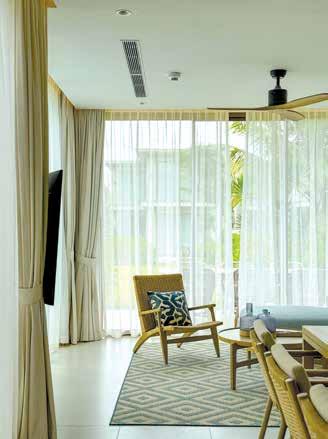


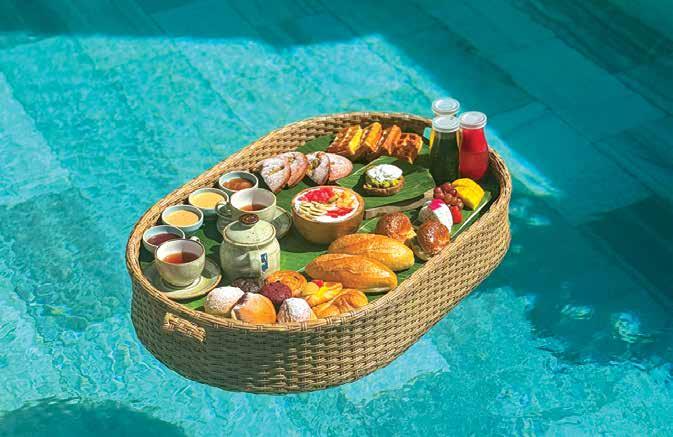

Clockwise from top, left on the previous page: The Three-Bedroom Garden Pool Villa’s living area at The Ocean Resort by Fusion, Quy Nhon is remarkably bright and airy; The efficient dining and kitchen area within the Three-Bedroom Garden Pool Villa; The Ocean Resort by Fusion, Quy Nhon offers floating trays for breakfast; Some of the rooms at the Three-Bedroom Garden Pool Villa have direct access to the private swimming pool; The Ocean Resort by Fusion, Quy Nhon offers sumptuous contemporary bedrooms designed in local tropical palette.
I stayed at the Three-Bedroom Garden Pool Villa, and it was pure bliss. The villa’s design was stunning, with natural materials like wood and stone paired with a soft, neutral palette. The bedrooms, with large windows, soft linens, and tasteful artwork, were dreamy. Each room felt like its own sanctuary, perfect for a private getaway. The villa’s spacious layout made it ideal for families or groups of friends, and the private swimming pool — surrounded by lush greenery — was my personal oasis.
The best part? Floating trays filled with pastries and tropical fruits for breakfast right by the pool. Sipping coffee in the water amidst the villa’s garden was one of those “pinch-me” moments. It’s hard not to feel like royalty when relishing the floating tray breakfast.
While I expected the beach to be the highlight of my trip, the resort’s culinary scene stole the show. At MIXE Restaurant, I enjoyed an all-day buffet with a mix of international fare and local Vietnamese delights. The open-air design lets in the ocean breeze while you dine, and the décor is sleek and inviting. Watching the chefs cook up fresh dishes in front of you made the experience even better.
Vi Restaurant offers a more traditional Vietnamese experience, with its set lunch featuring home-cooked dishes like summer rolls and shrimp paste canapés. The flavours — sweet, salty, spicy, and fresh — made every bite exciting. The intimate ambiance, warm lighting, and Vietnamese accents made it the perfect place for slow, indulgent lunches.


One of the things I loved most about my stay was the endless list of activities. The beach allows guests the opportunity to kayak and snorkel alongside vibrant marine life, including stand-up paddleboarding, where you could paddle through the crystal-clear waters. For on-land exploration, you can rent a bicycle and enjoy the resort’s surrounding lush greenery and coastal views. If you preferred less strenuous pursuits, the resort offers morning yoga or meditation sessions with the ocean as your backdrop.
After a day of activities, the Vela Spa is the perfect place for you to recharge. The soothing treatments left me floating on air.



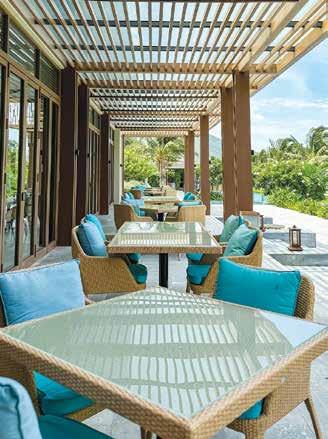
Clockwise from top, left: The way to the reception area of The Ocean Resort by Fusion, Quy Nhon; The outdoor terrace at Vi Restaurant; The Ocean Resort by Fusion, Quy Nhon cleverly blurs the line between the indoors and outdoors.
Leaving The Ocean Resort by Fusion felt like leaving a dream. From lazy beach days and amazing food to the serene atmosphere of Quy Nhon, I left feeling renewed. For anyone looking for a mix of relaxation and adventure, The Ocean Resort by Fusion is the place to be. Whether you’re travelling solo, with friends, or planning a romantic escape, this little corner of Vietnam is bound to leave an indelible mark.
I’m already planning my next trip back to The Ocean Resort by Fusion soon — who’s coming with me?
Visit https://theoceanresortquynhon.com/ for more information and reservation.





